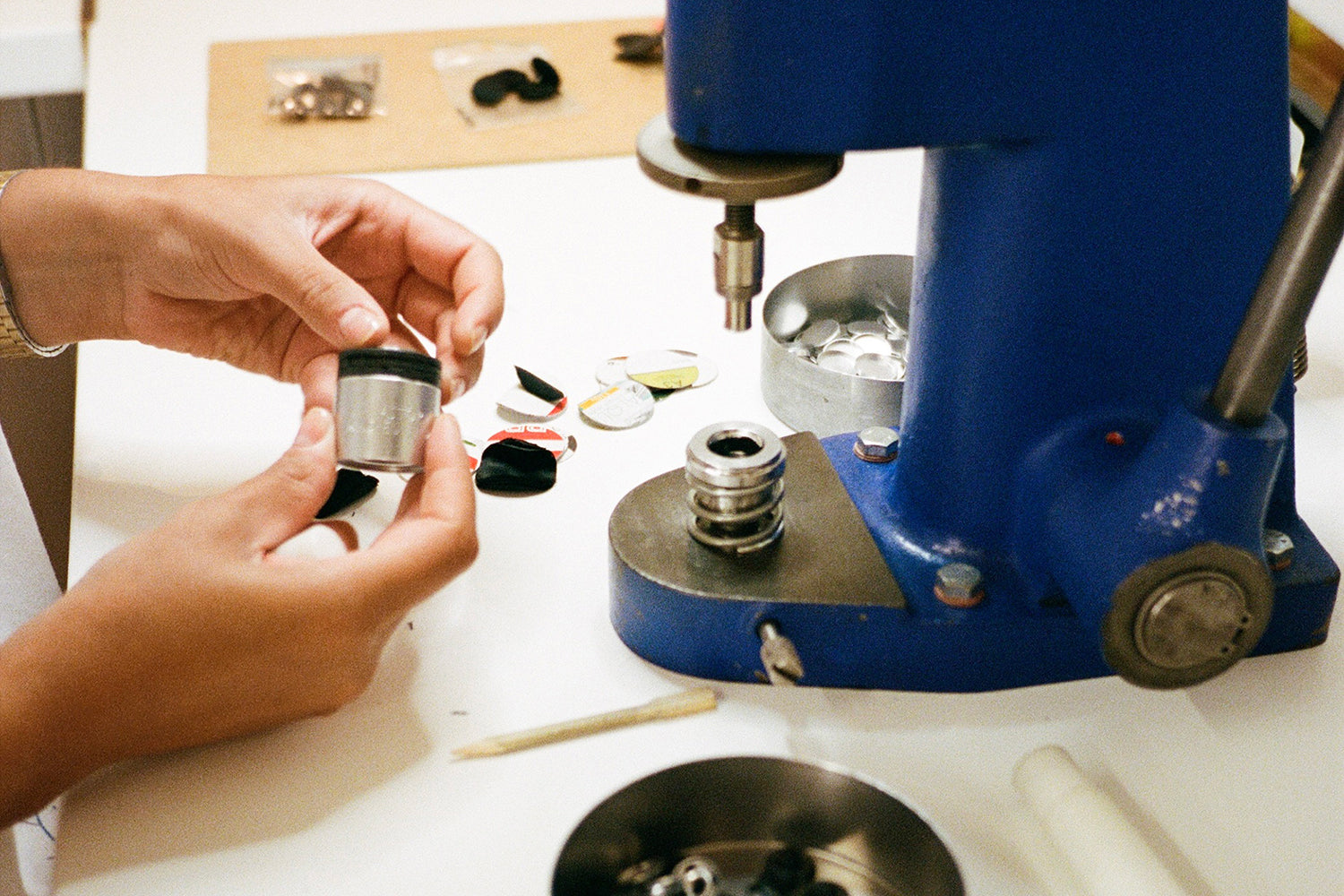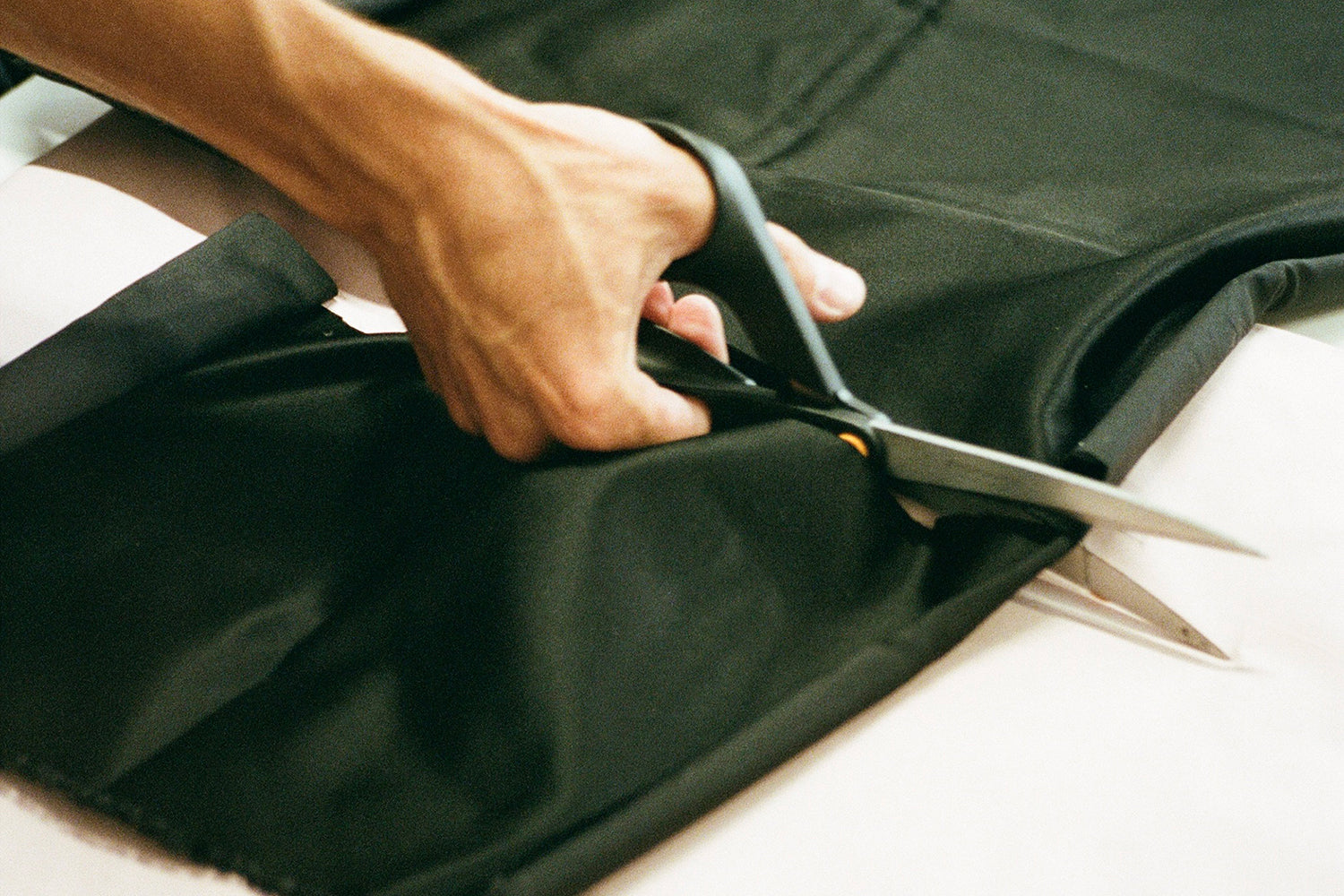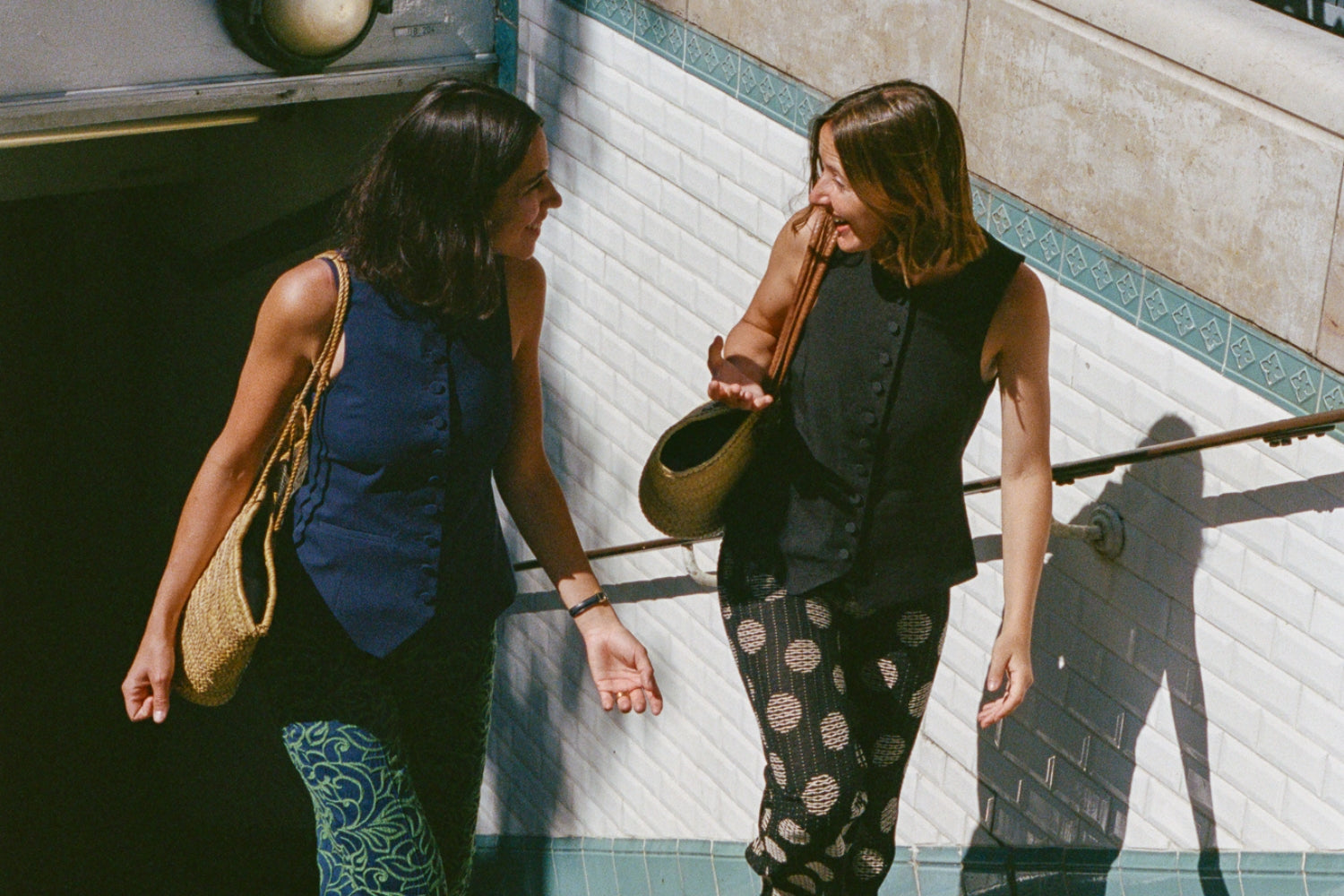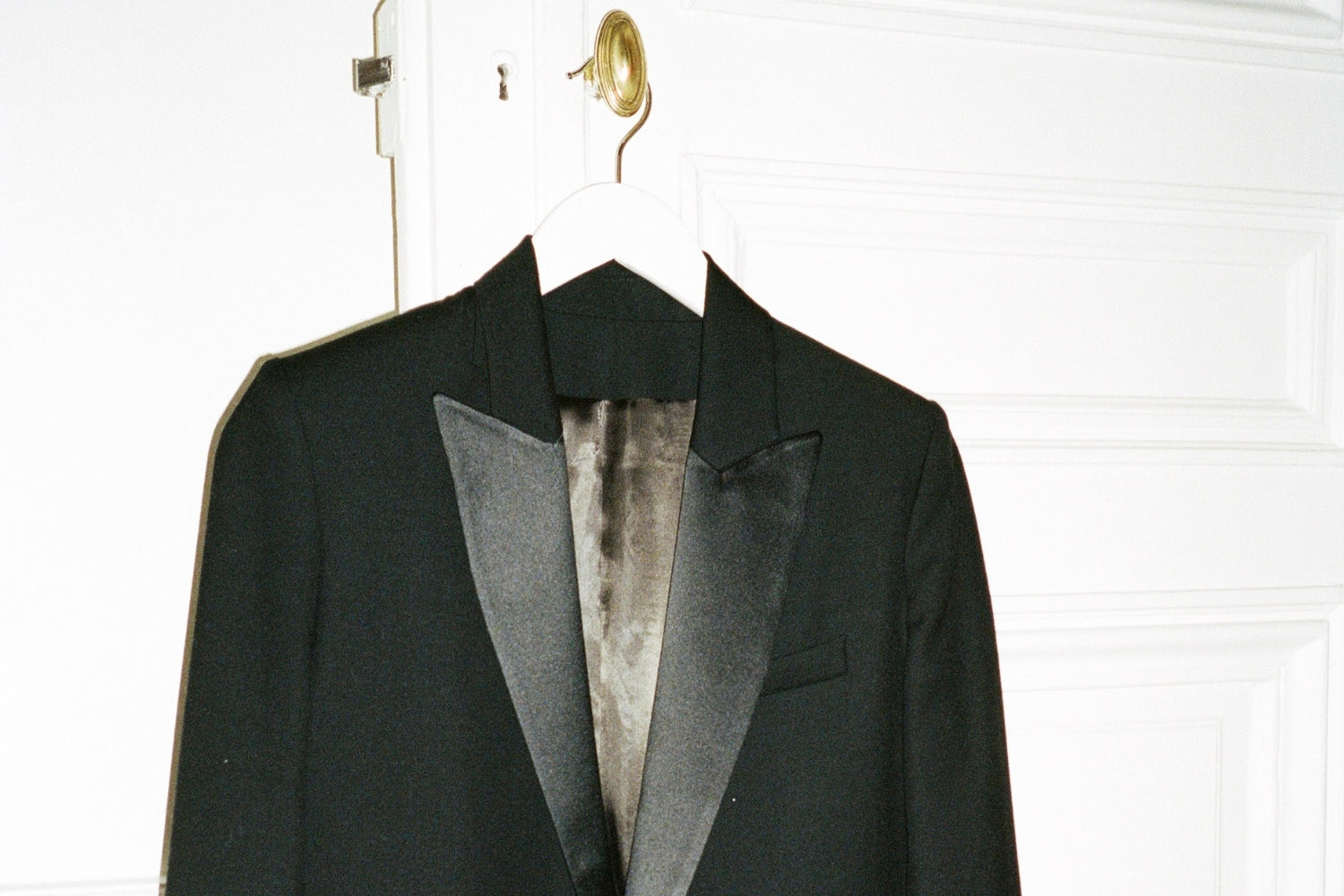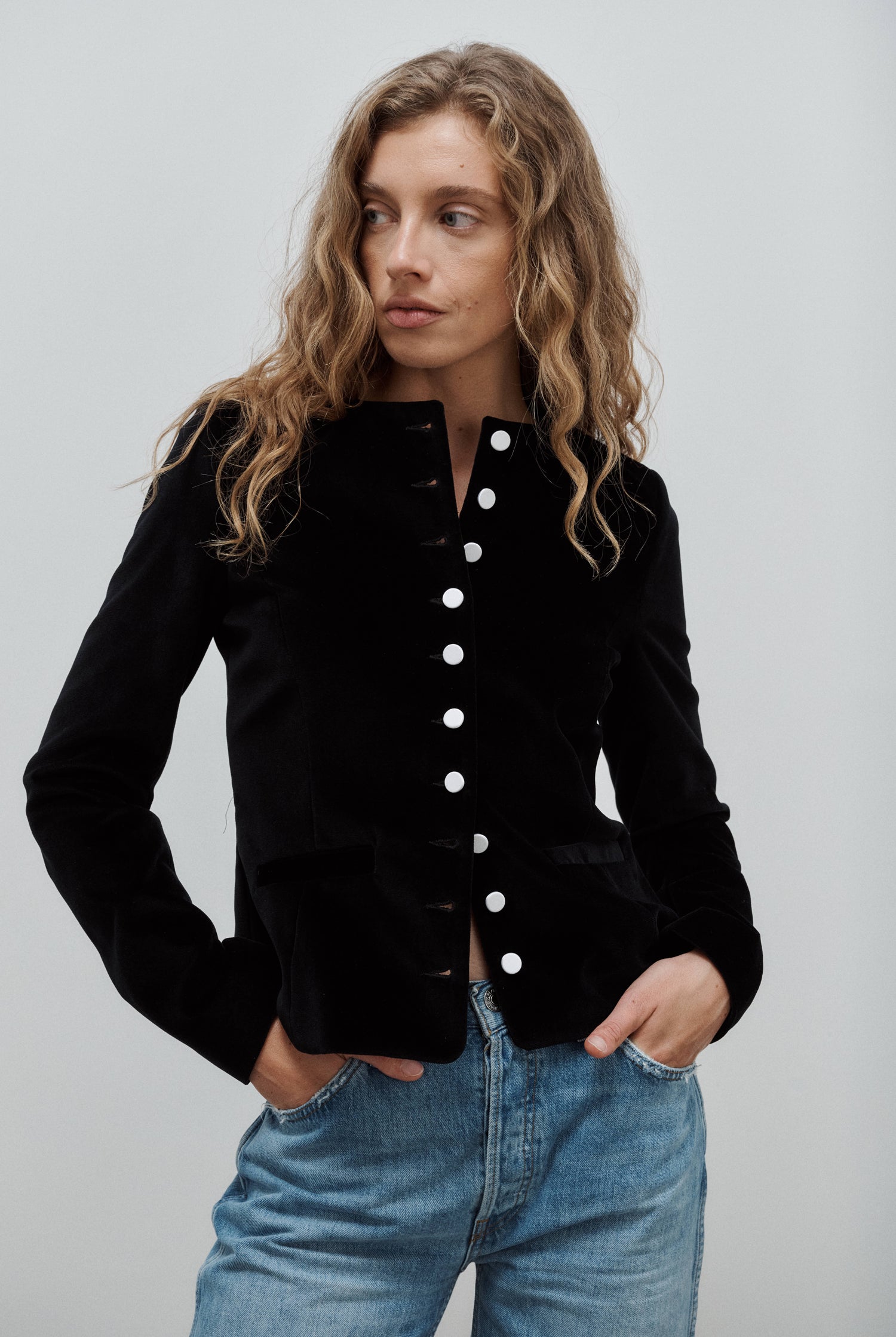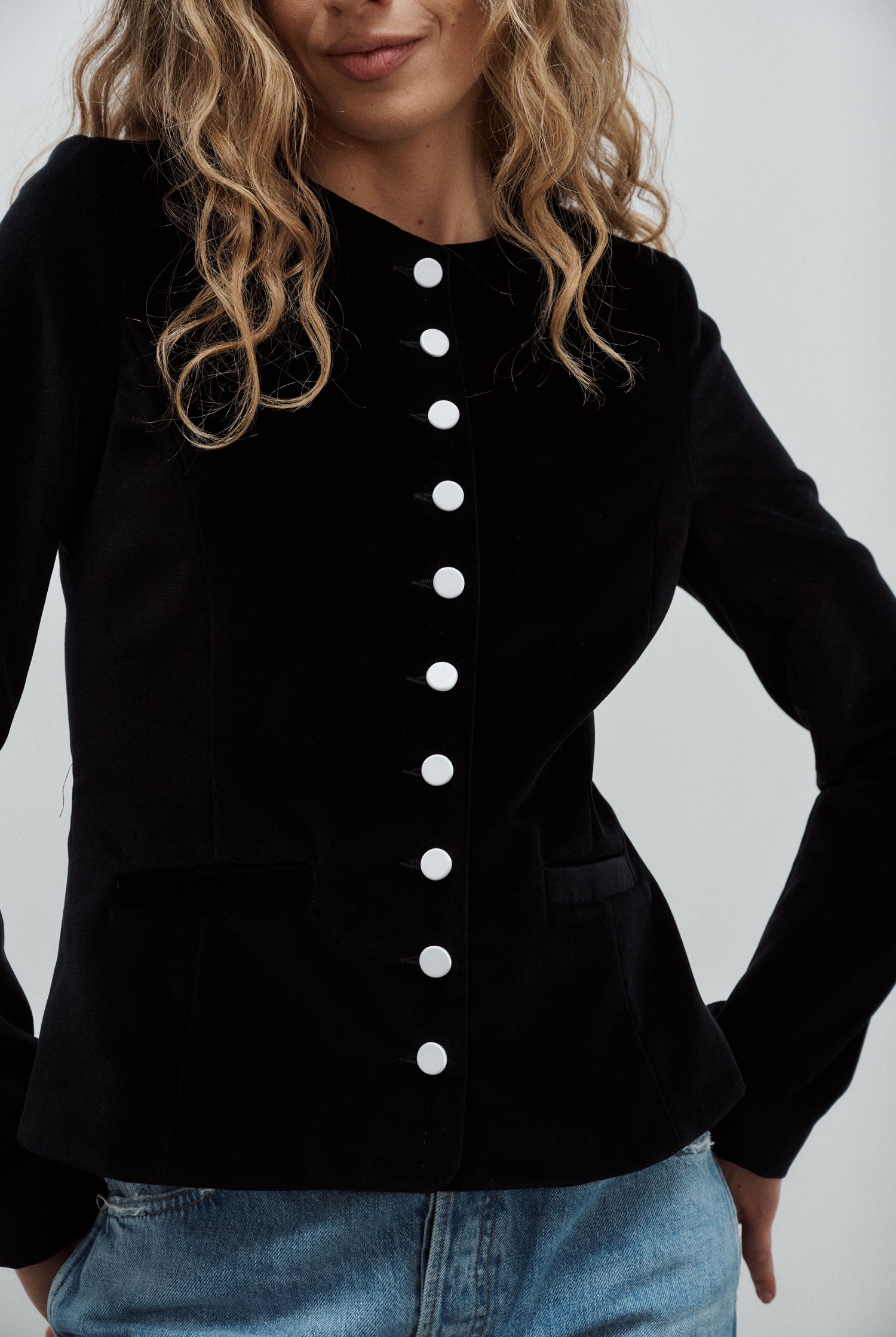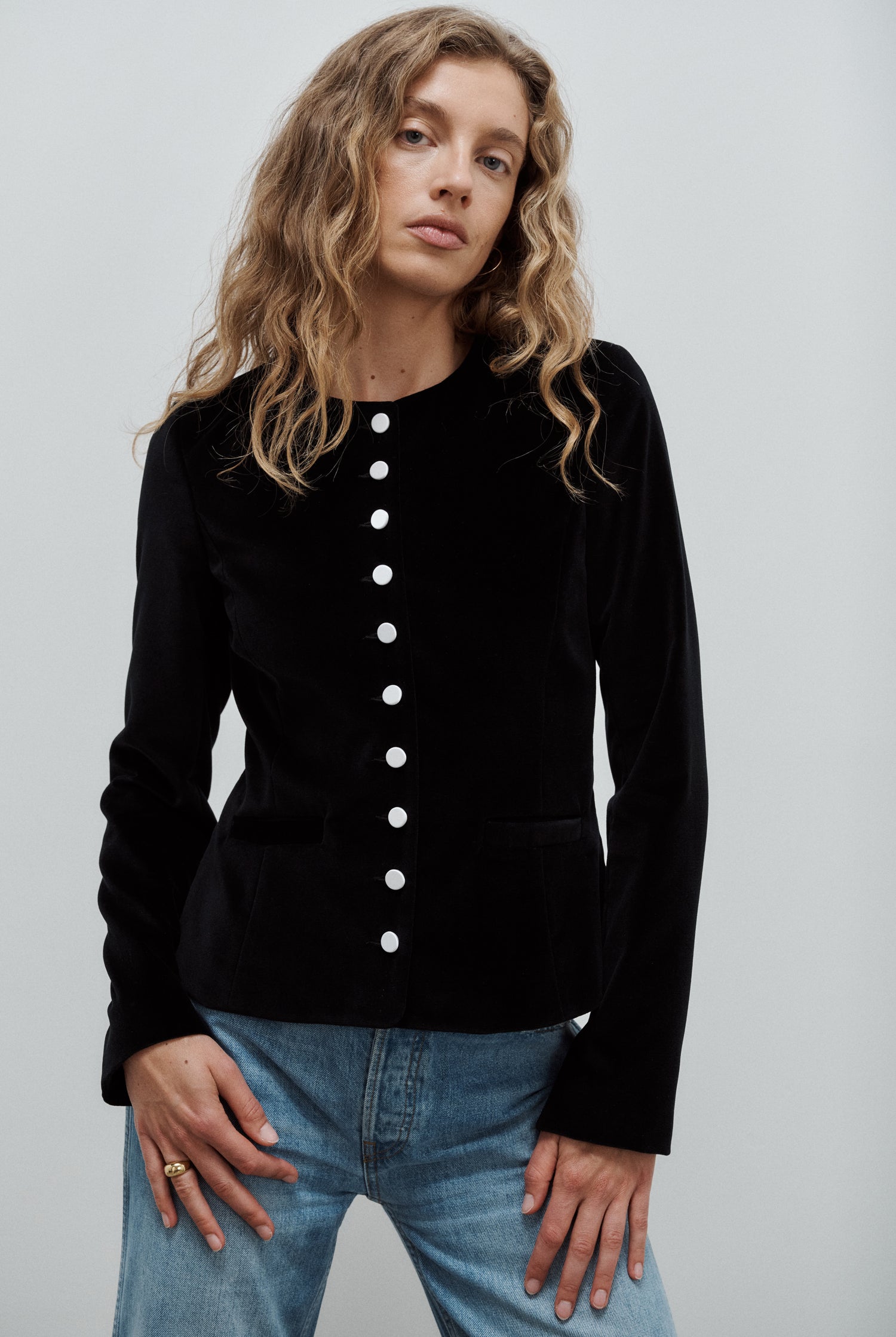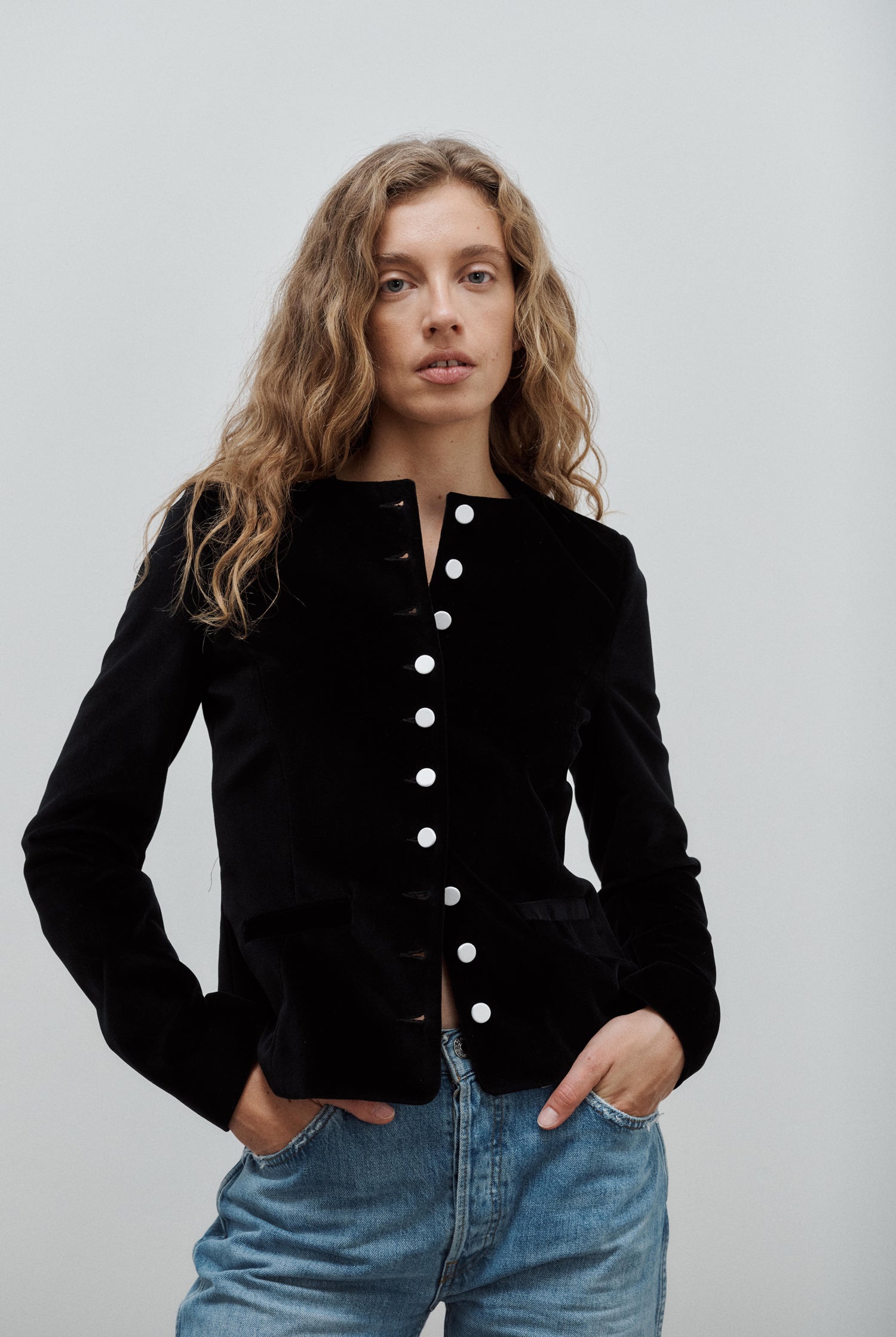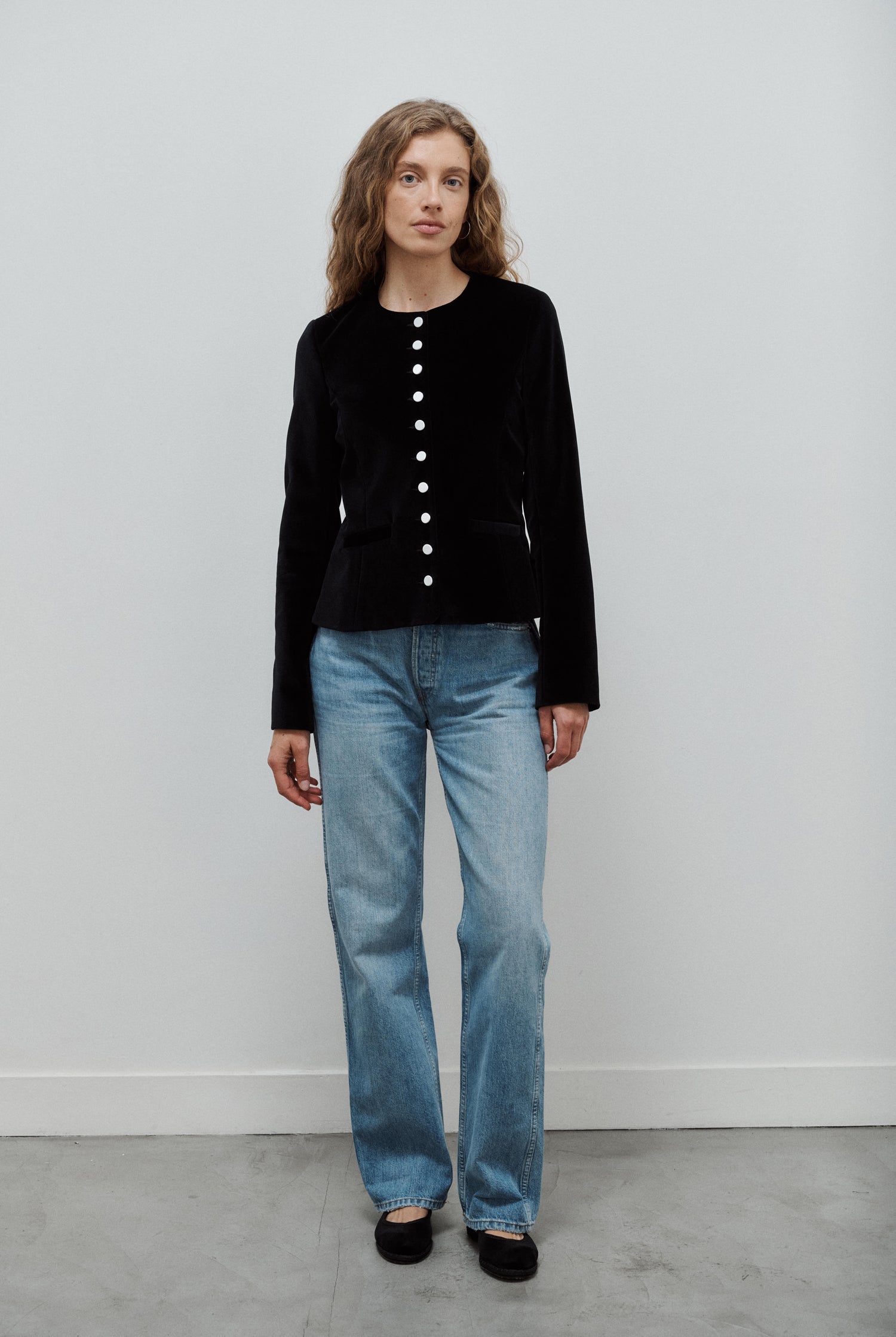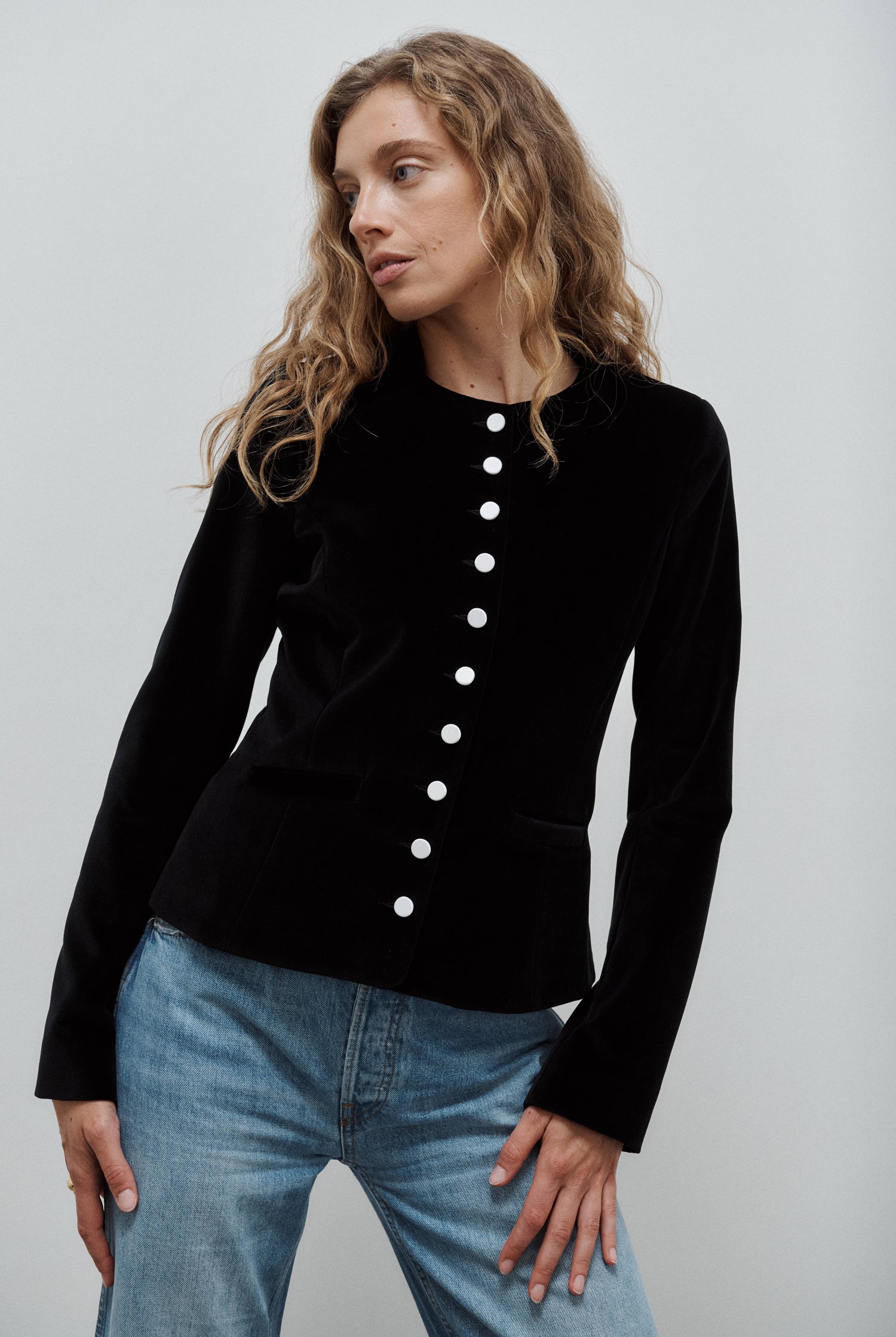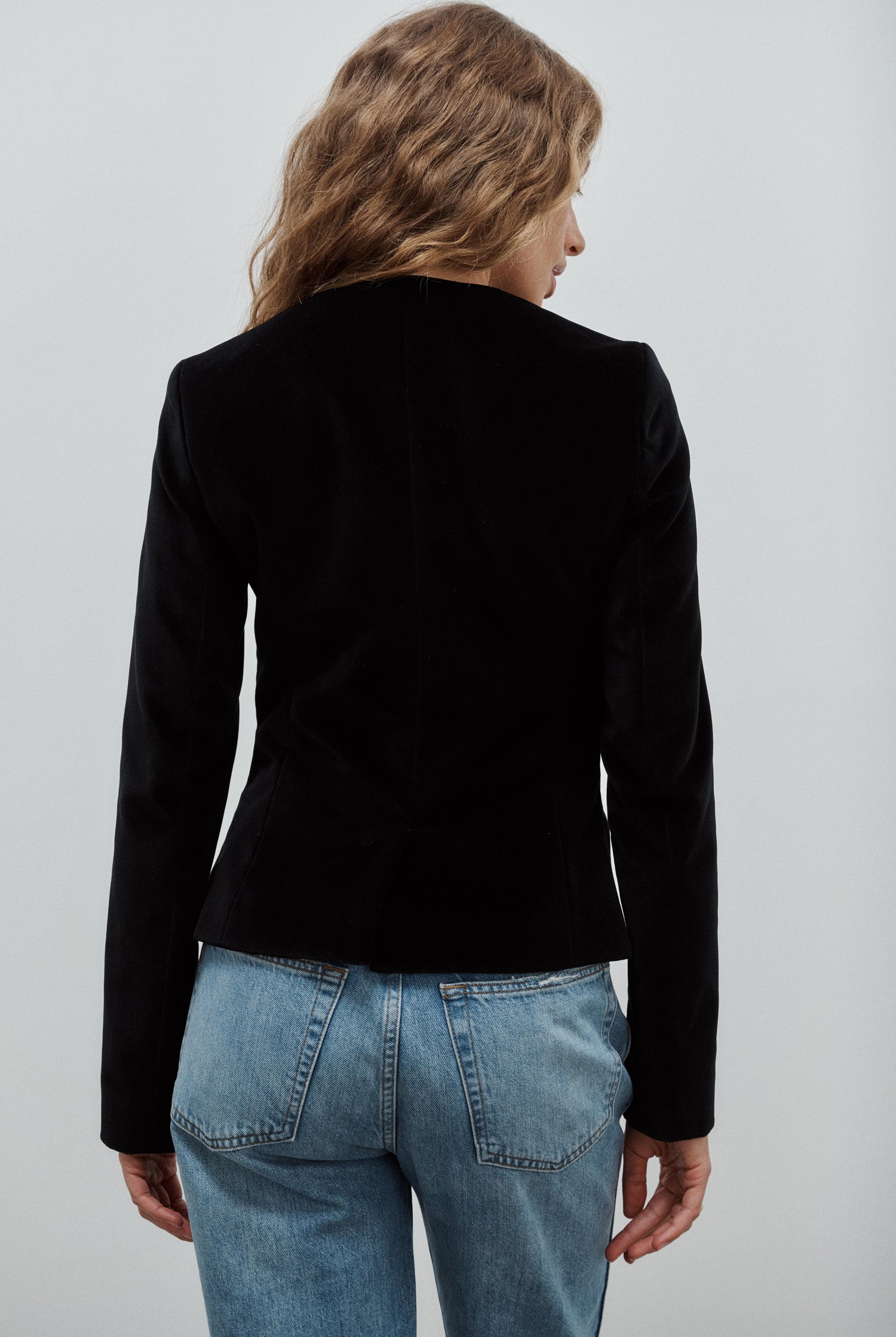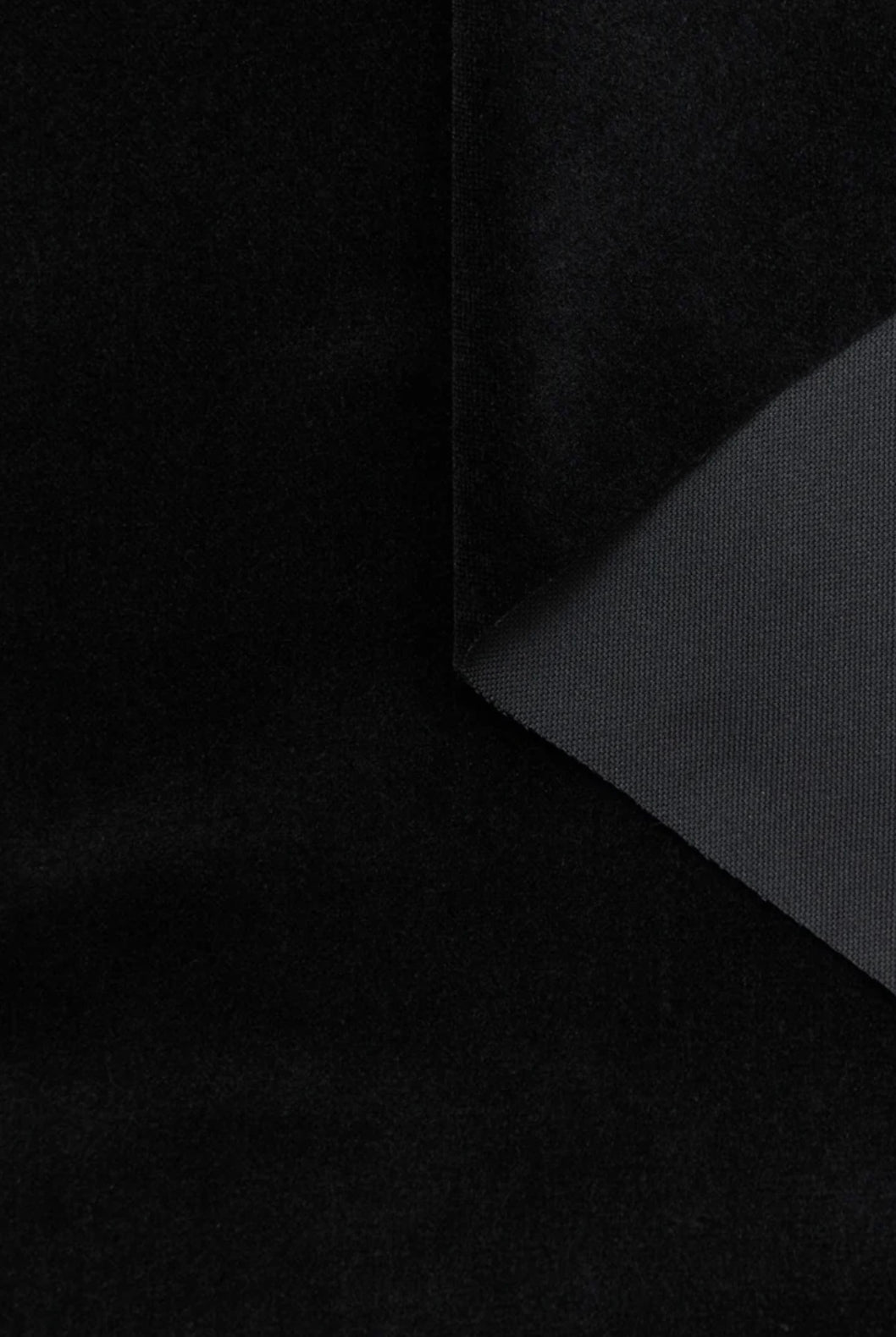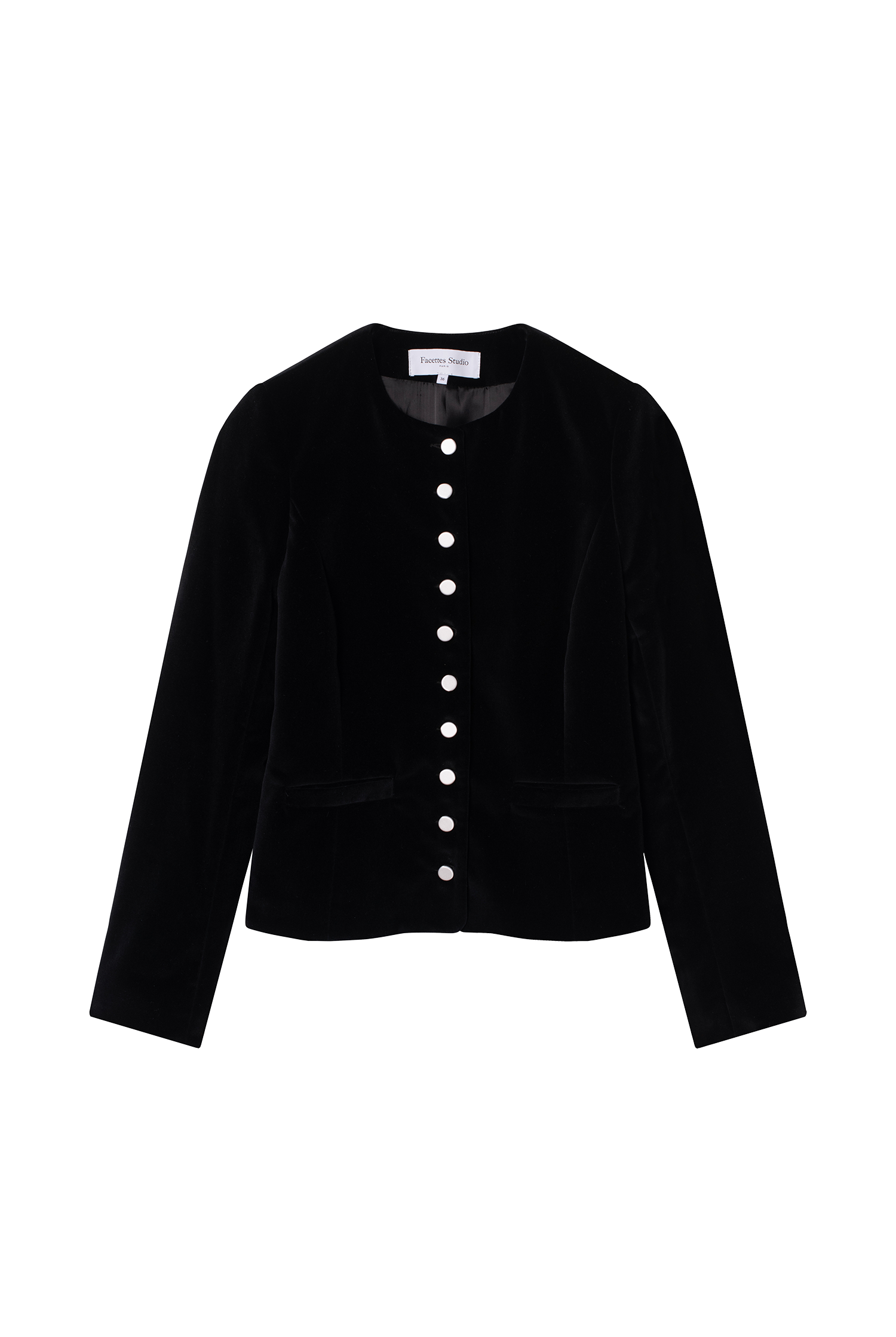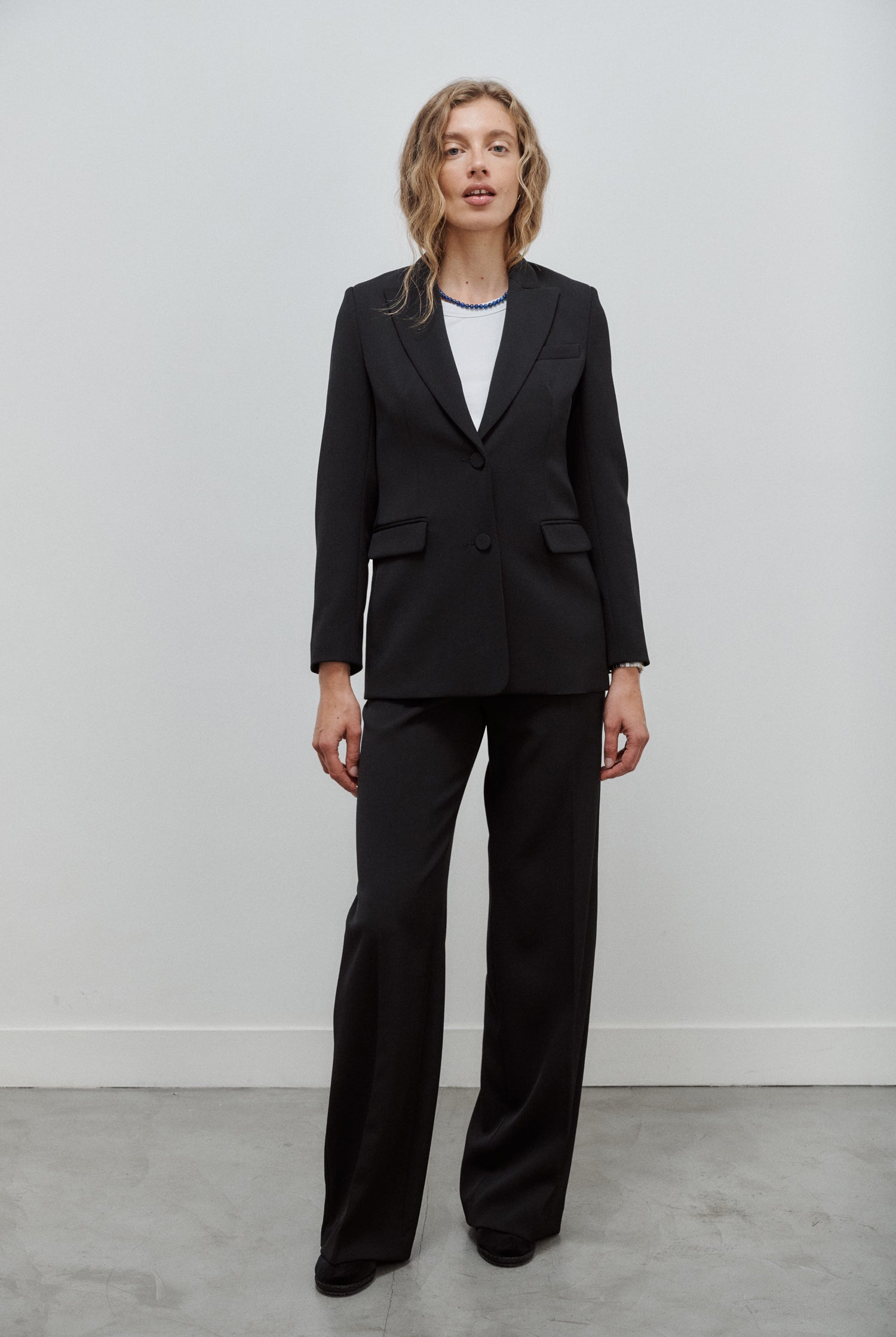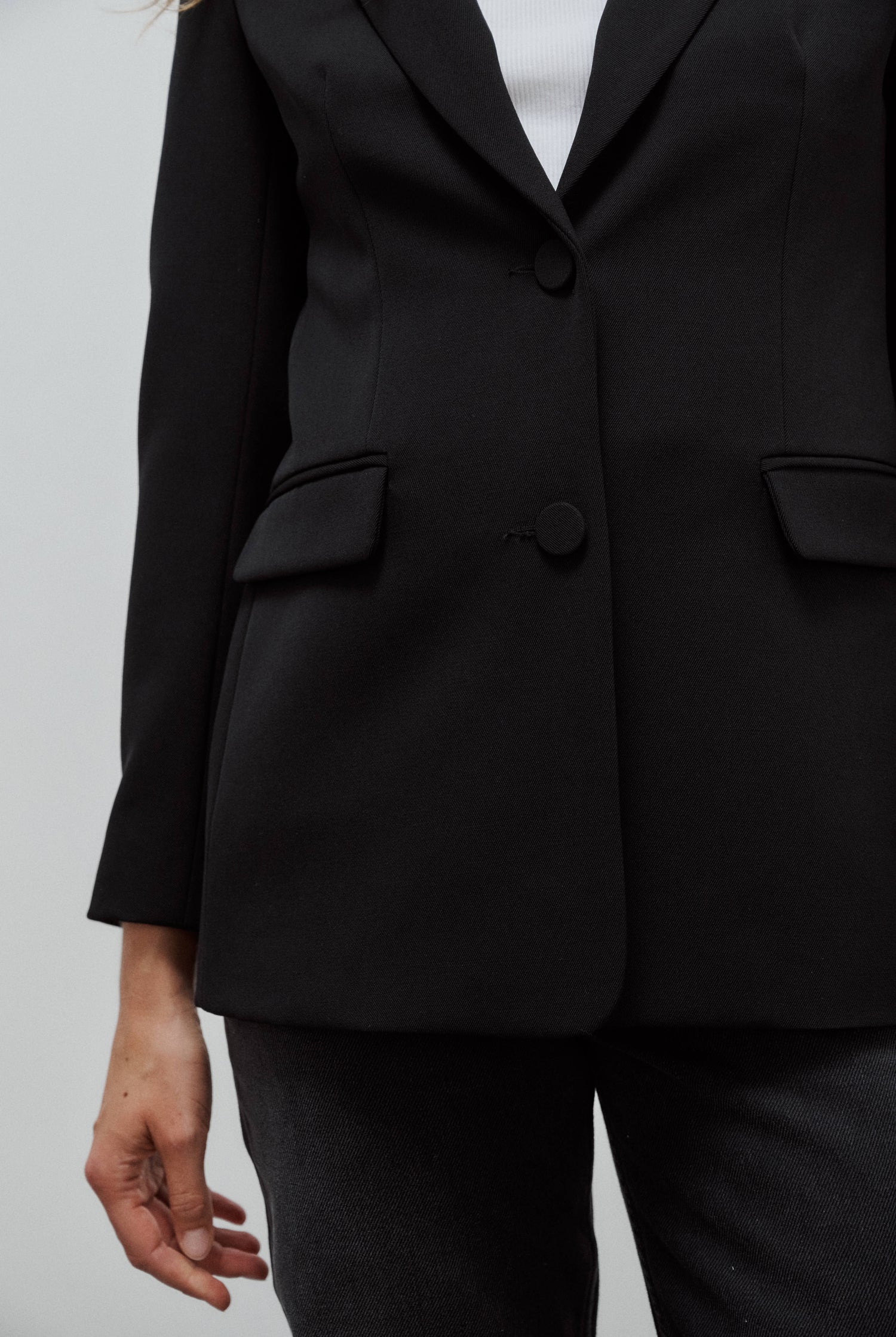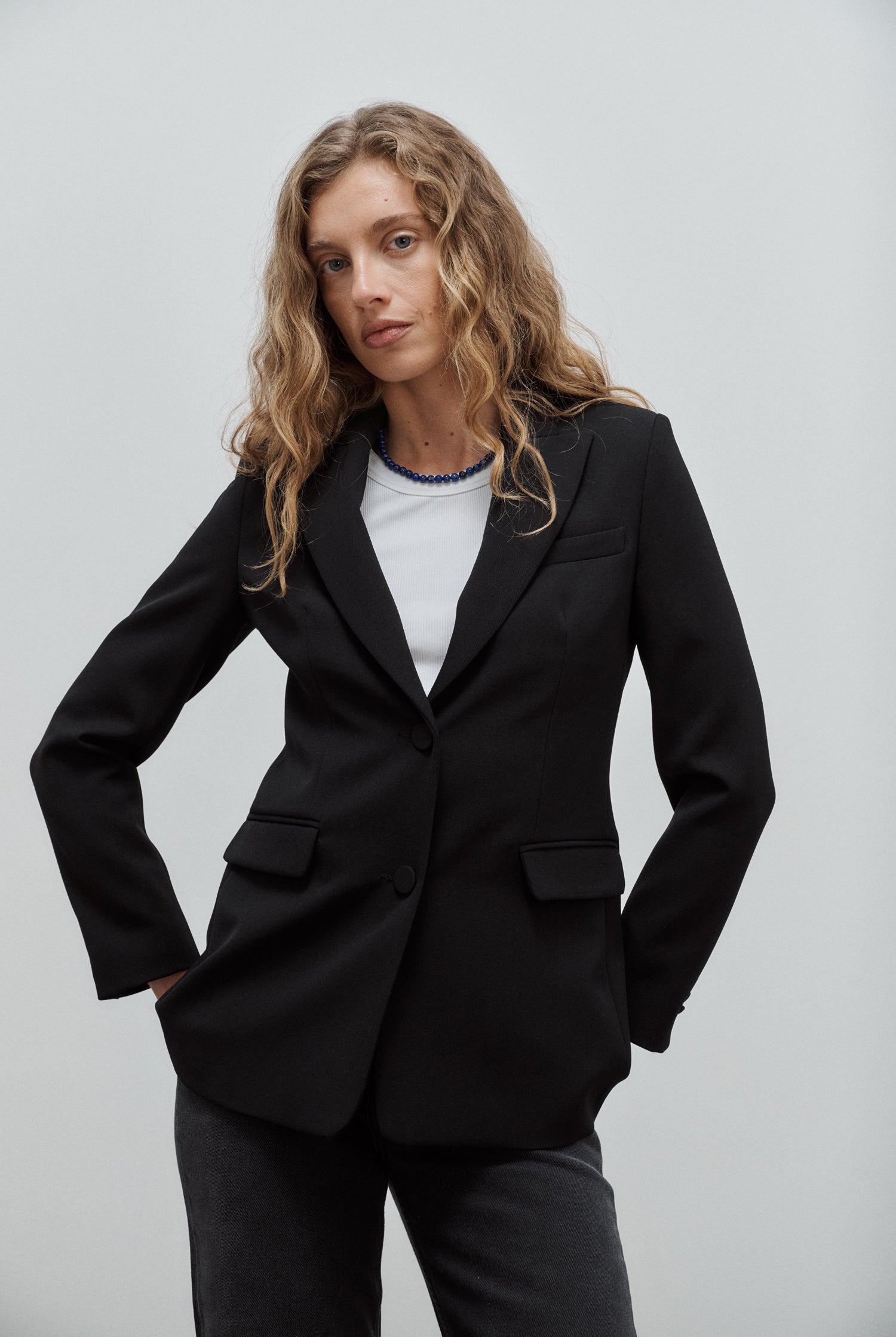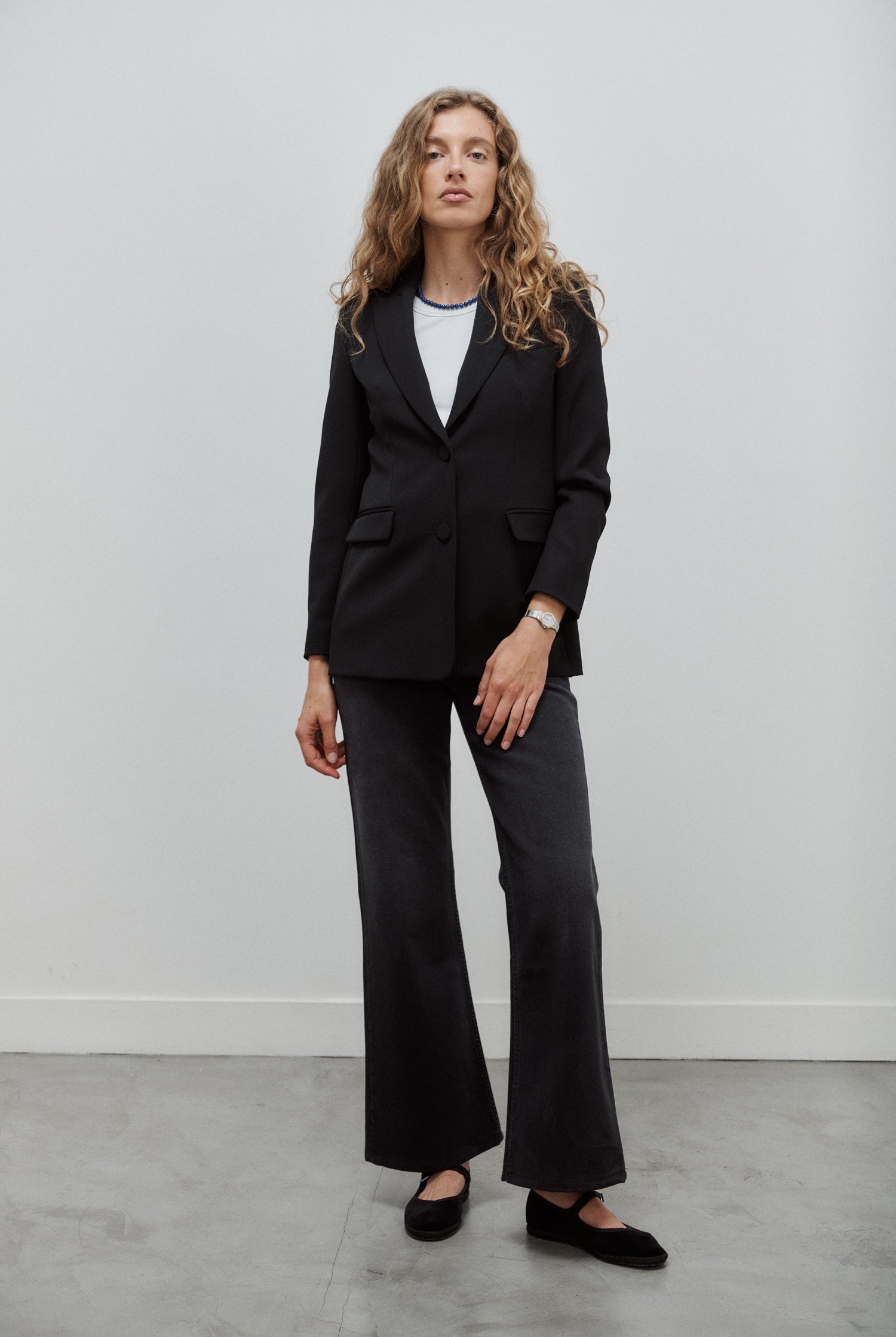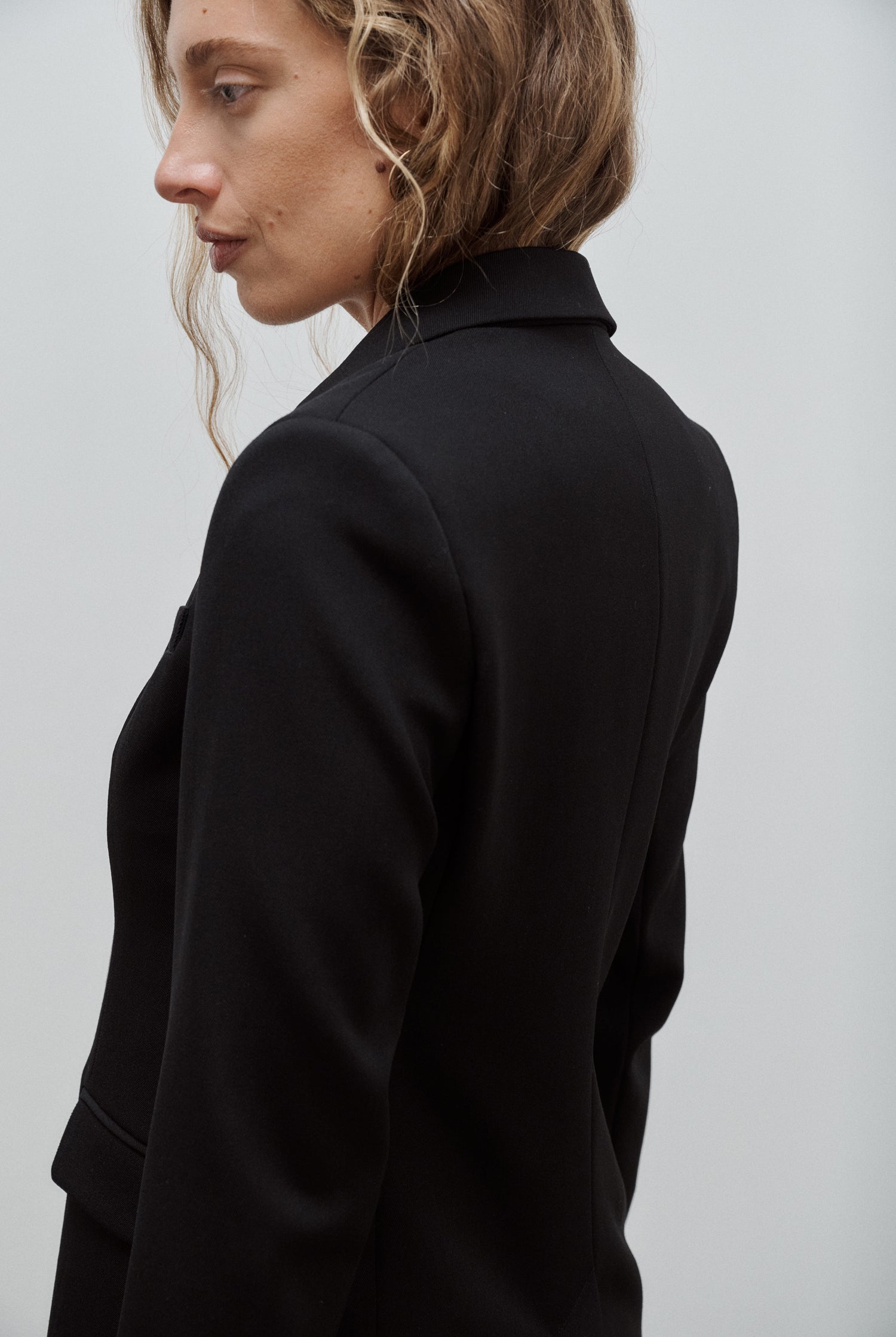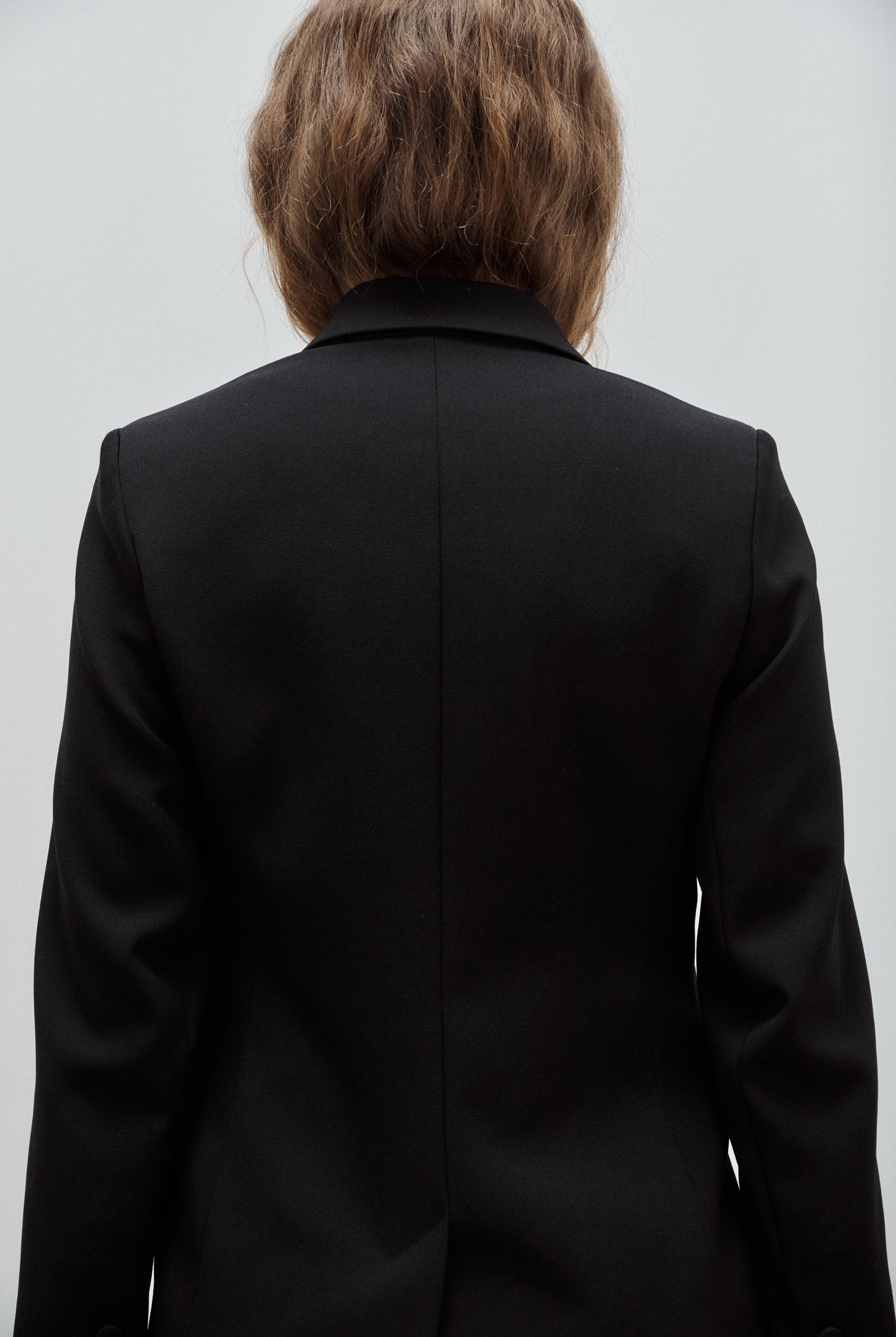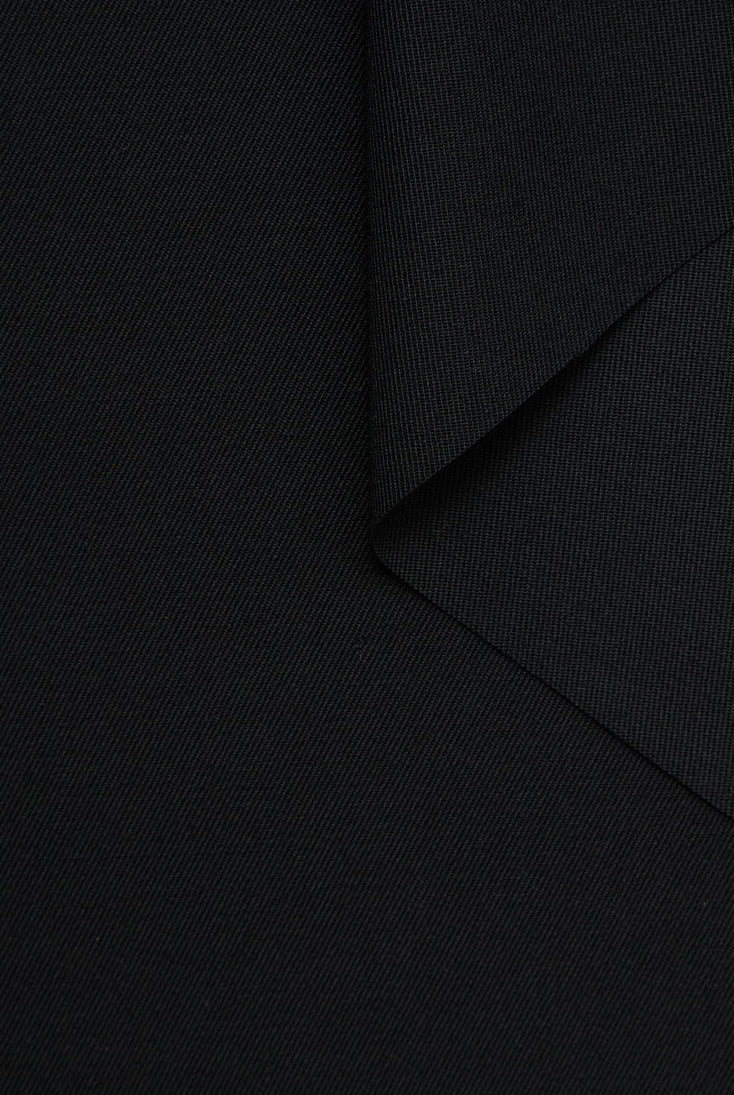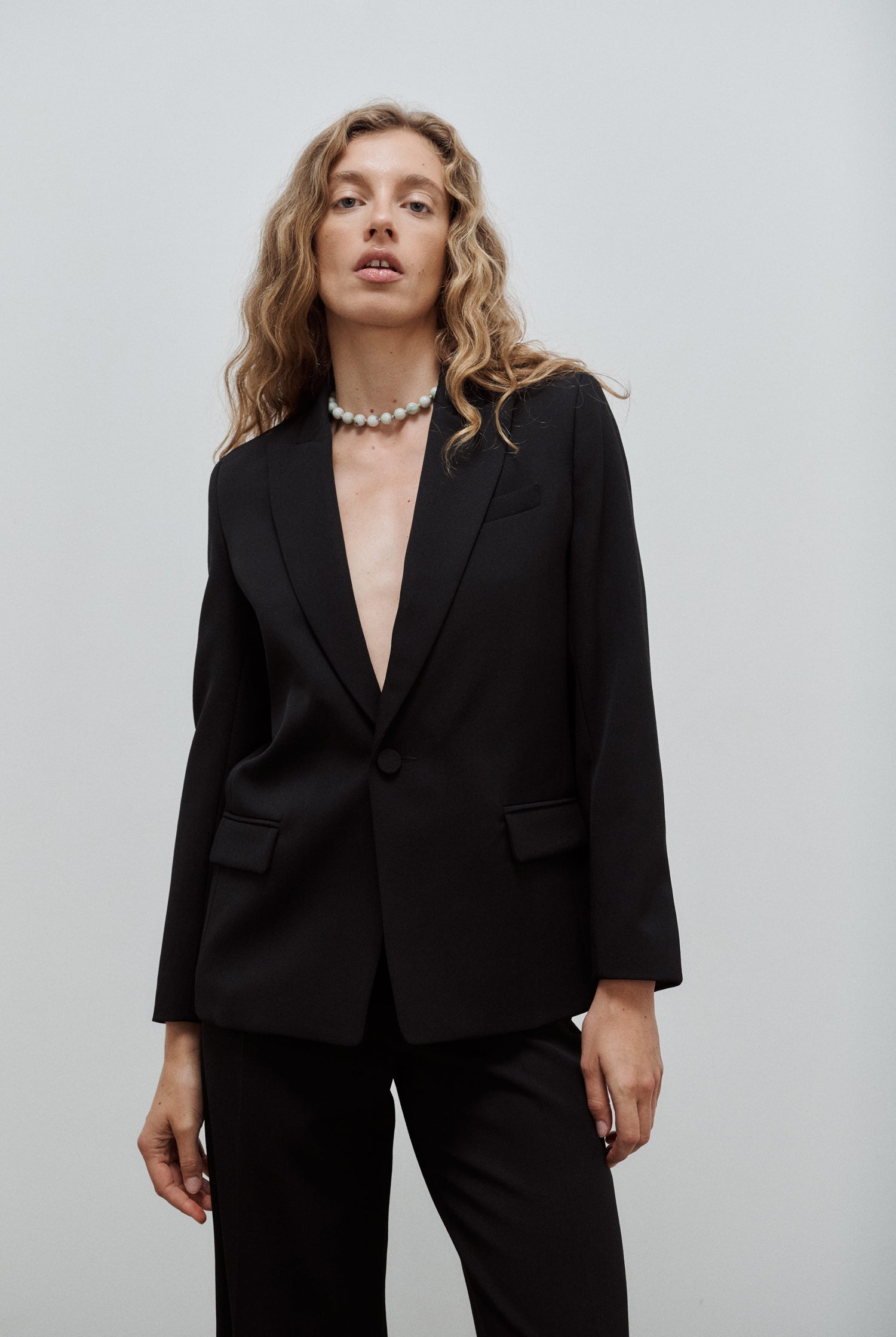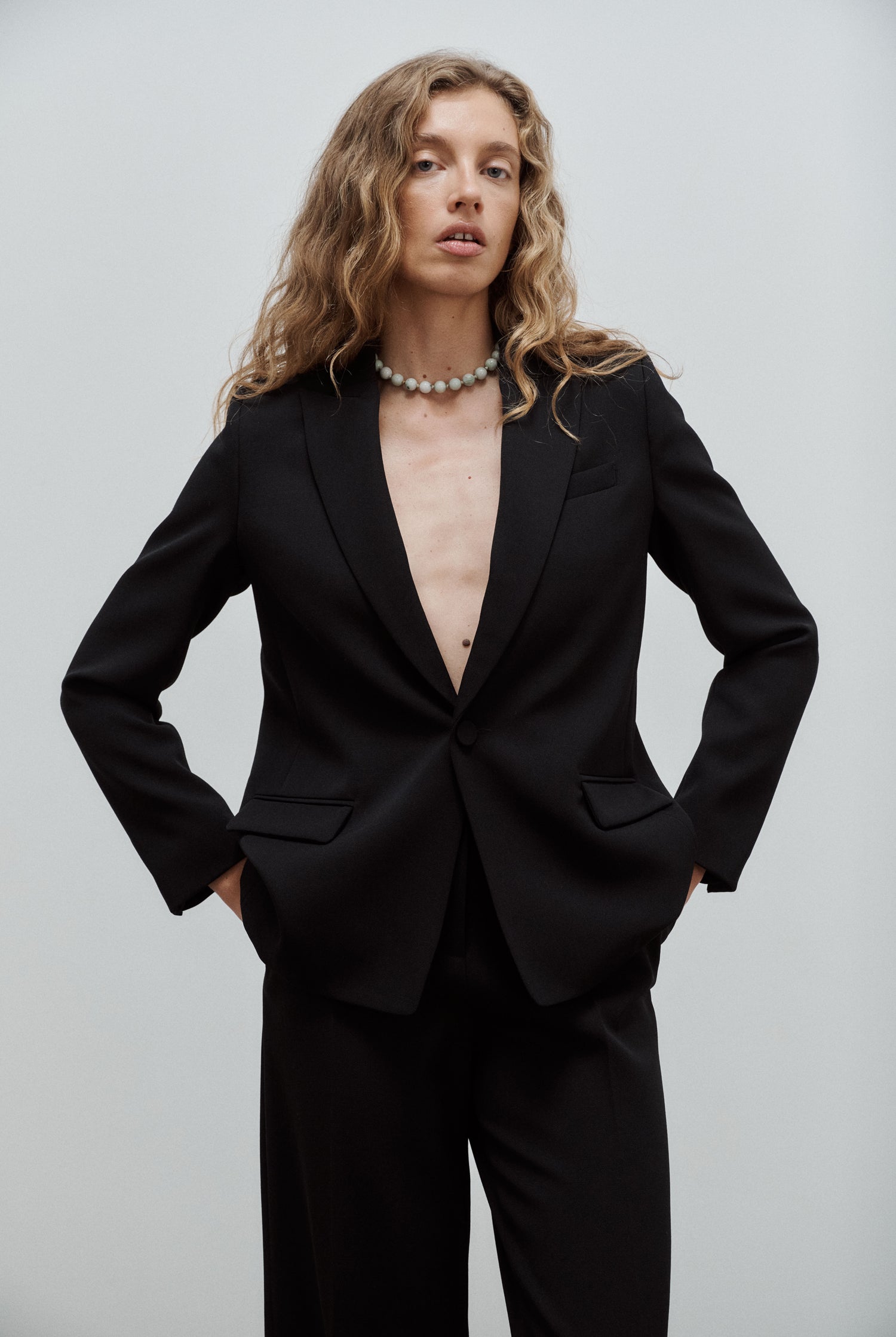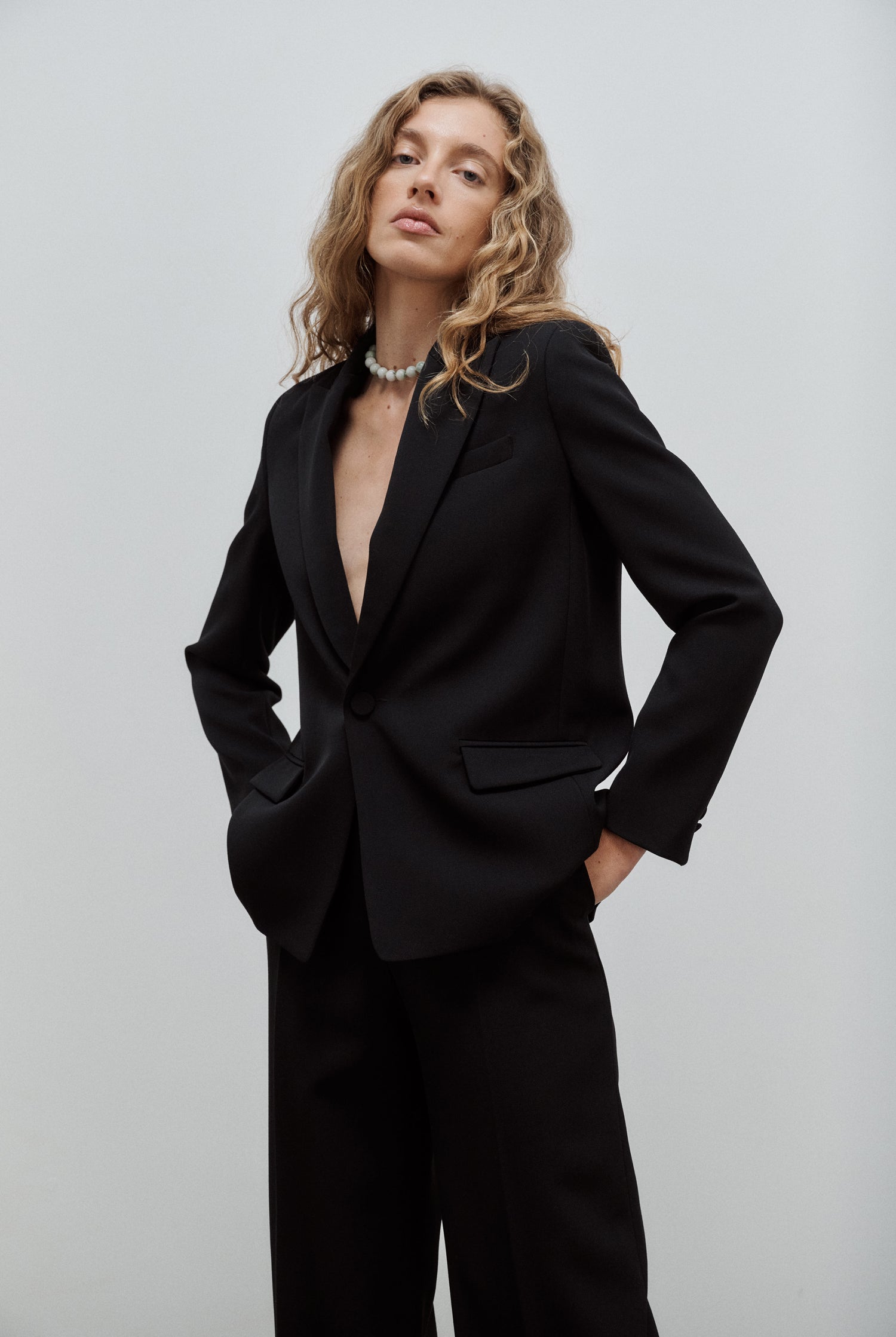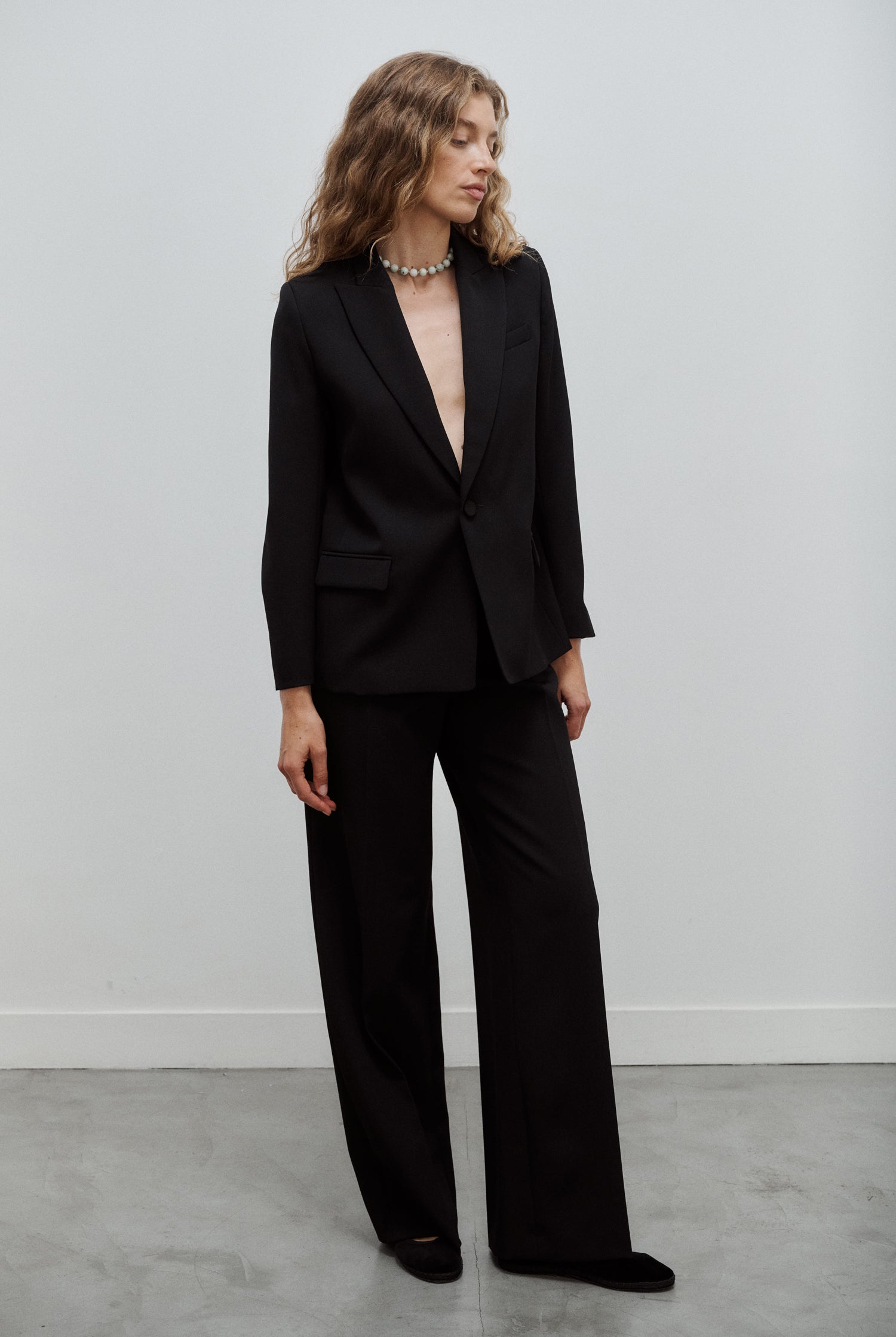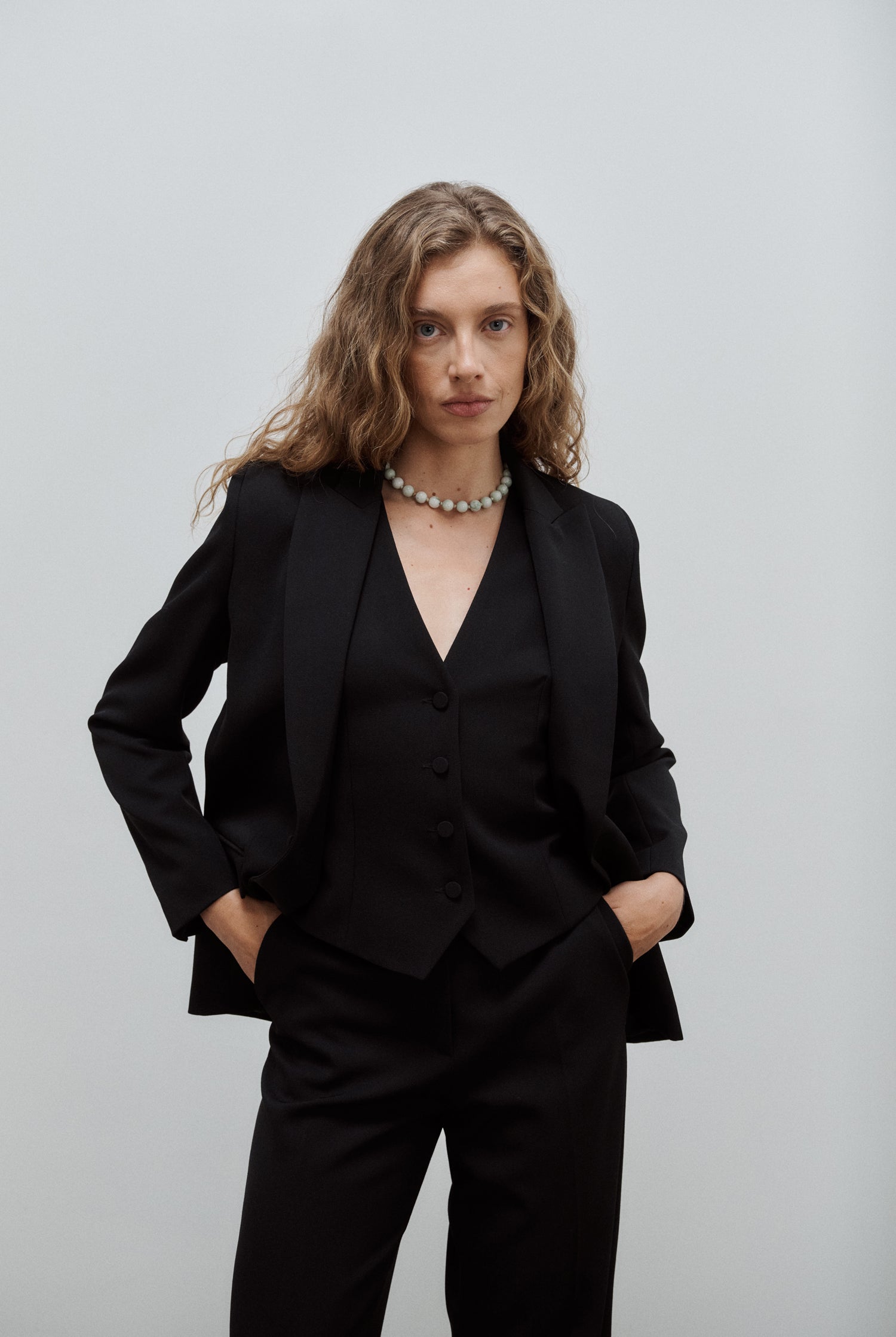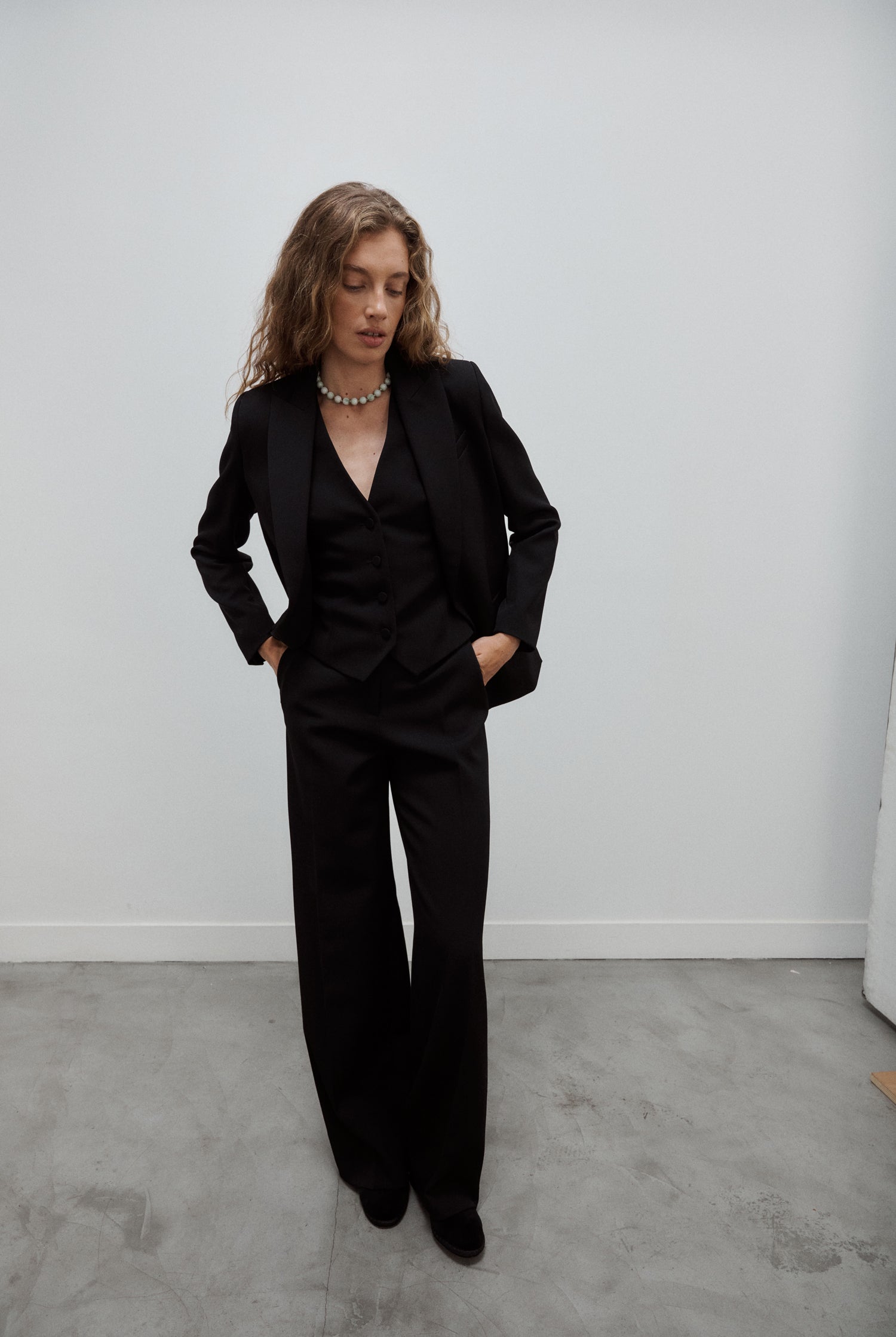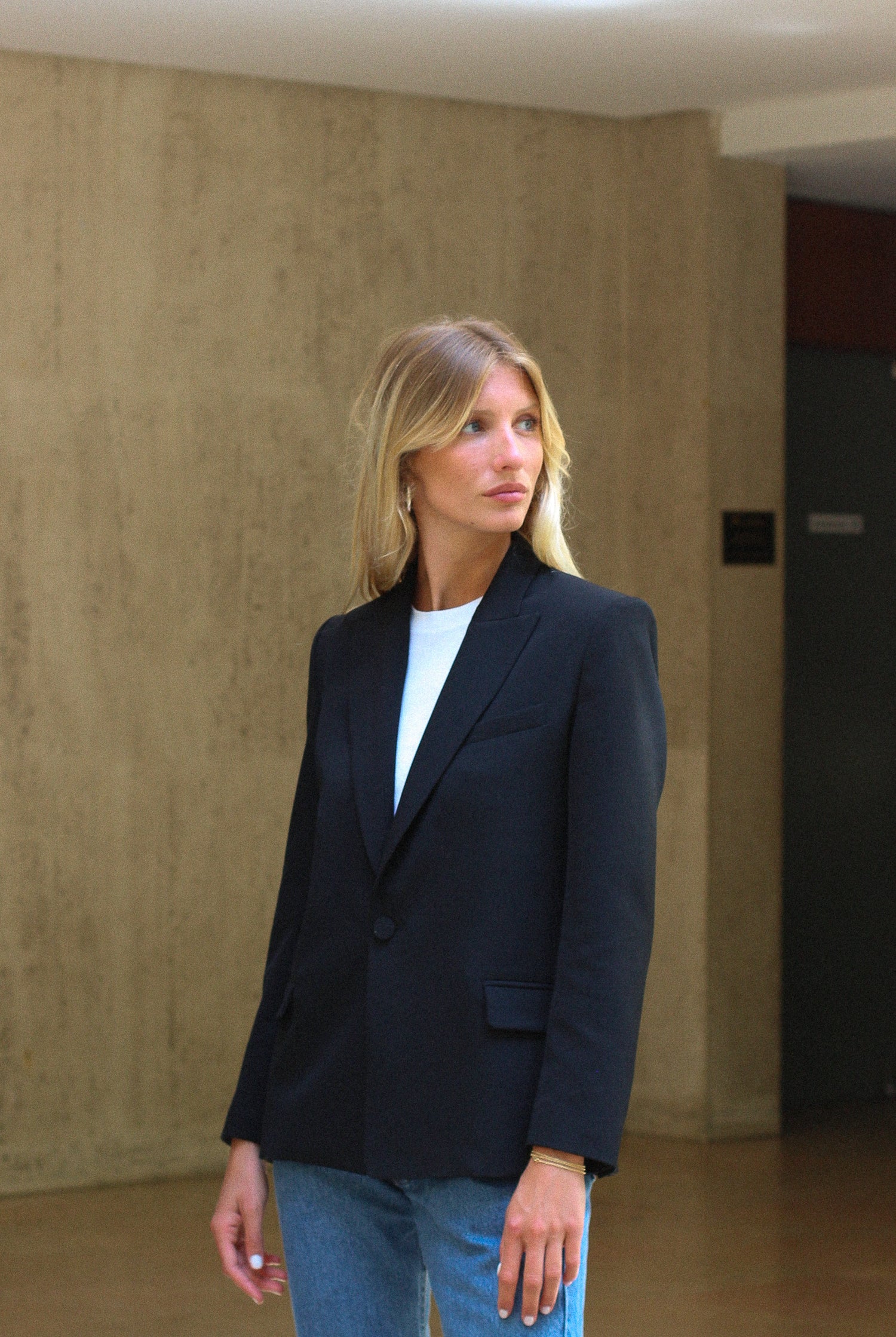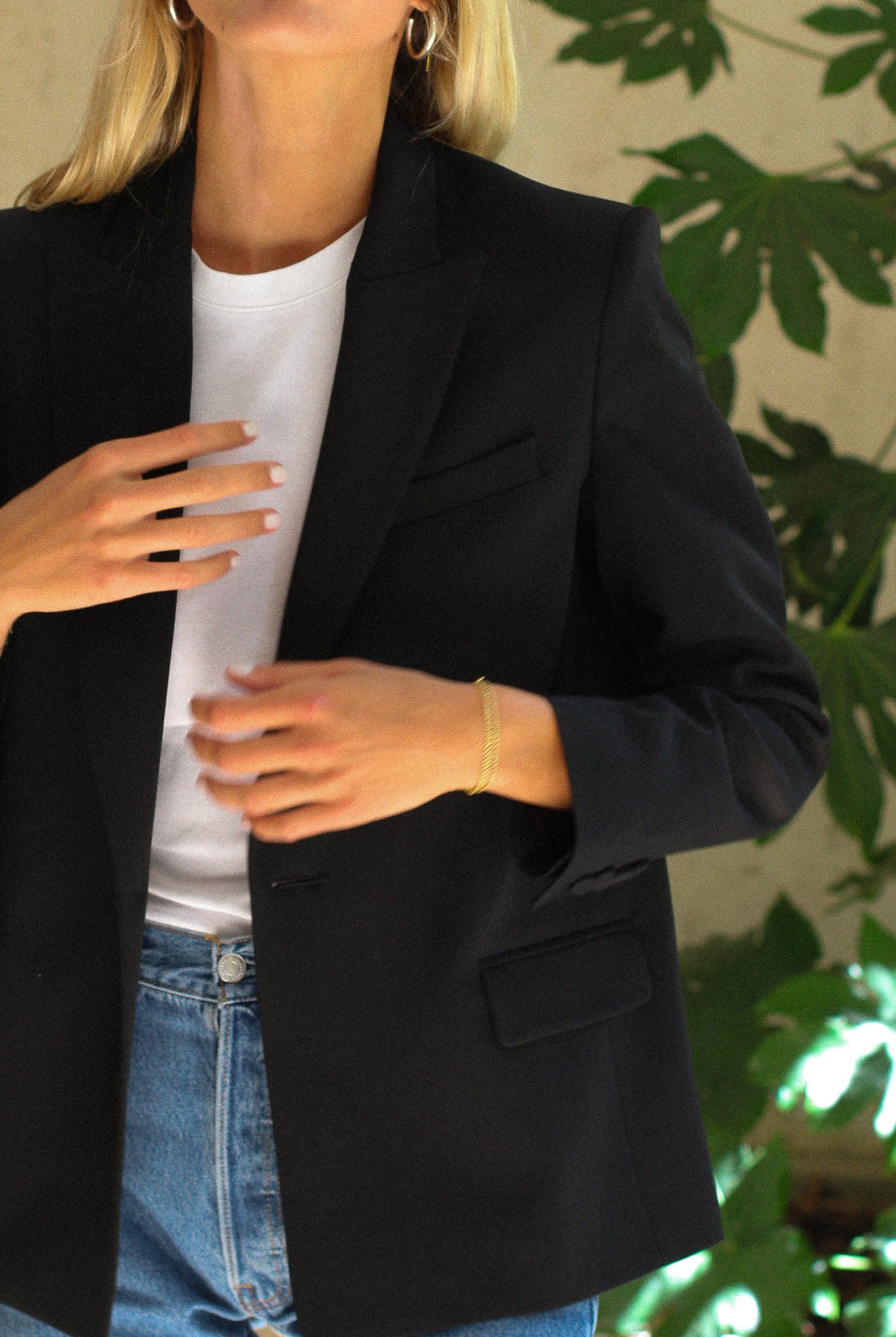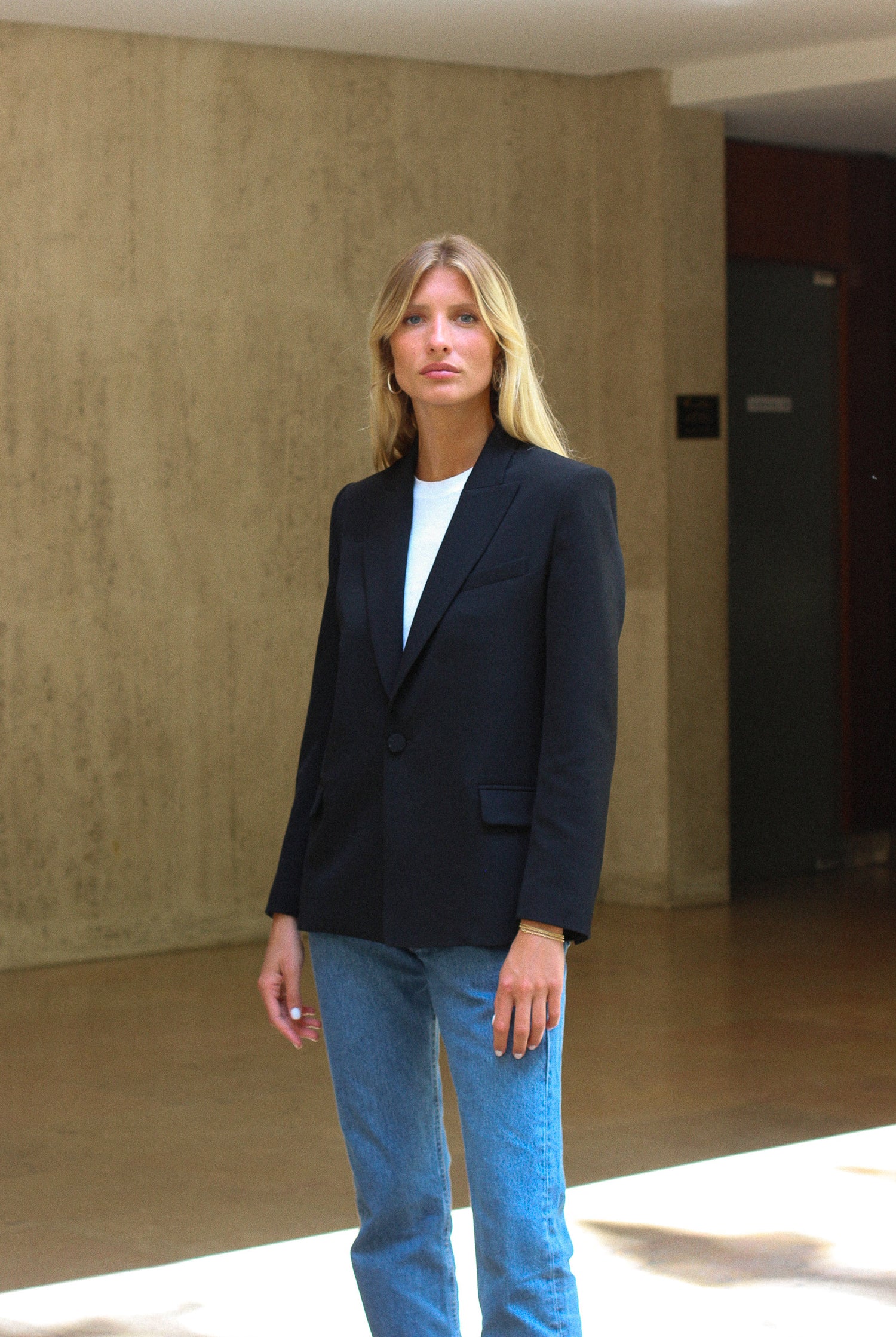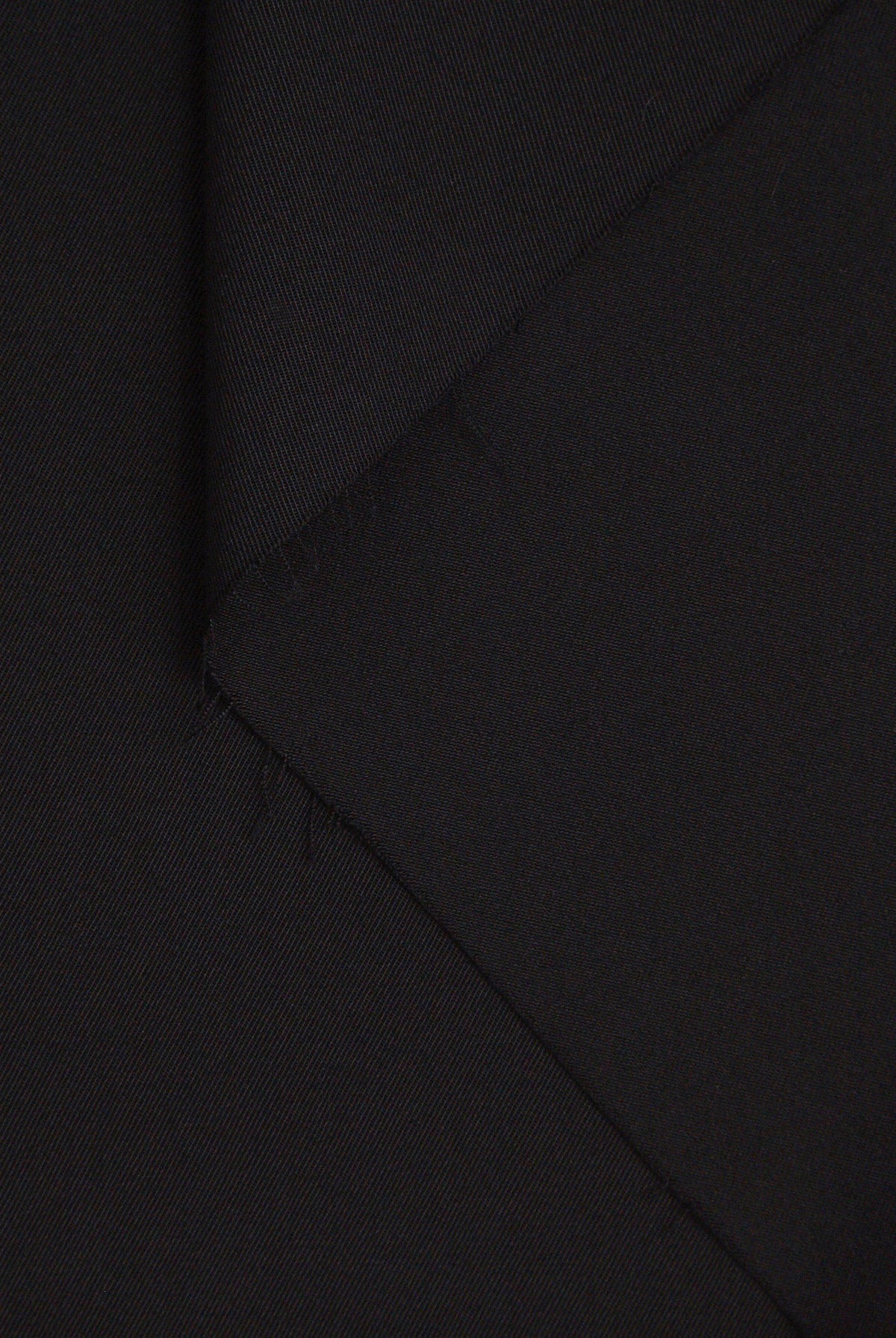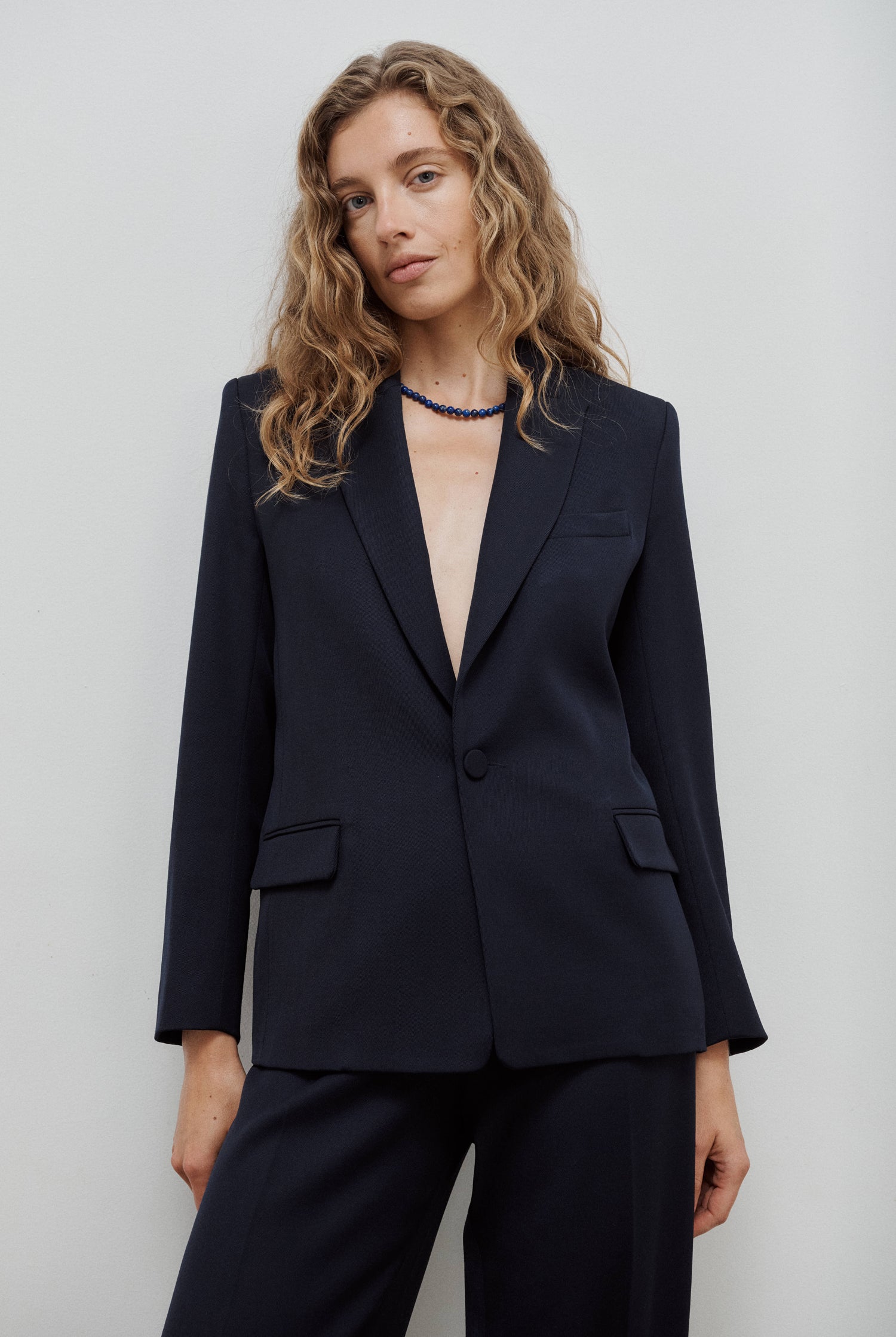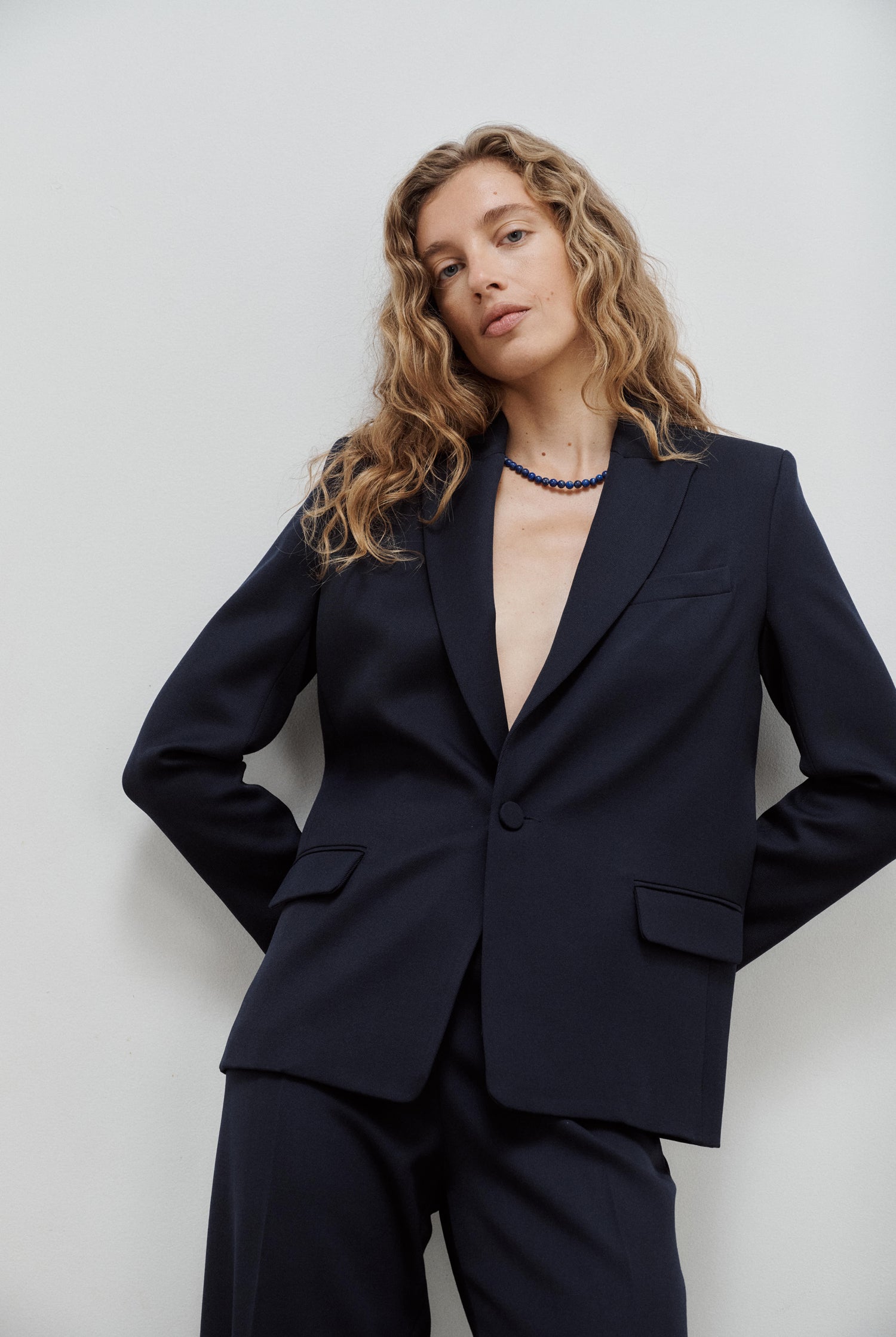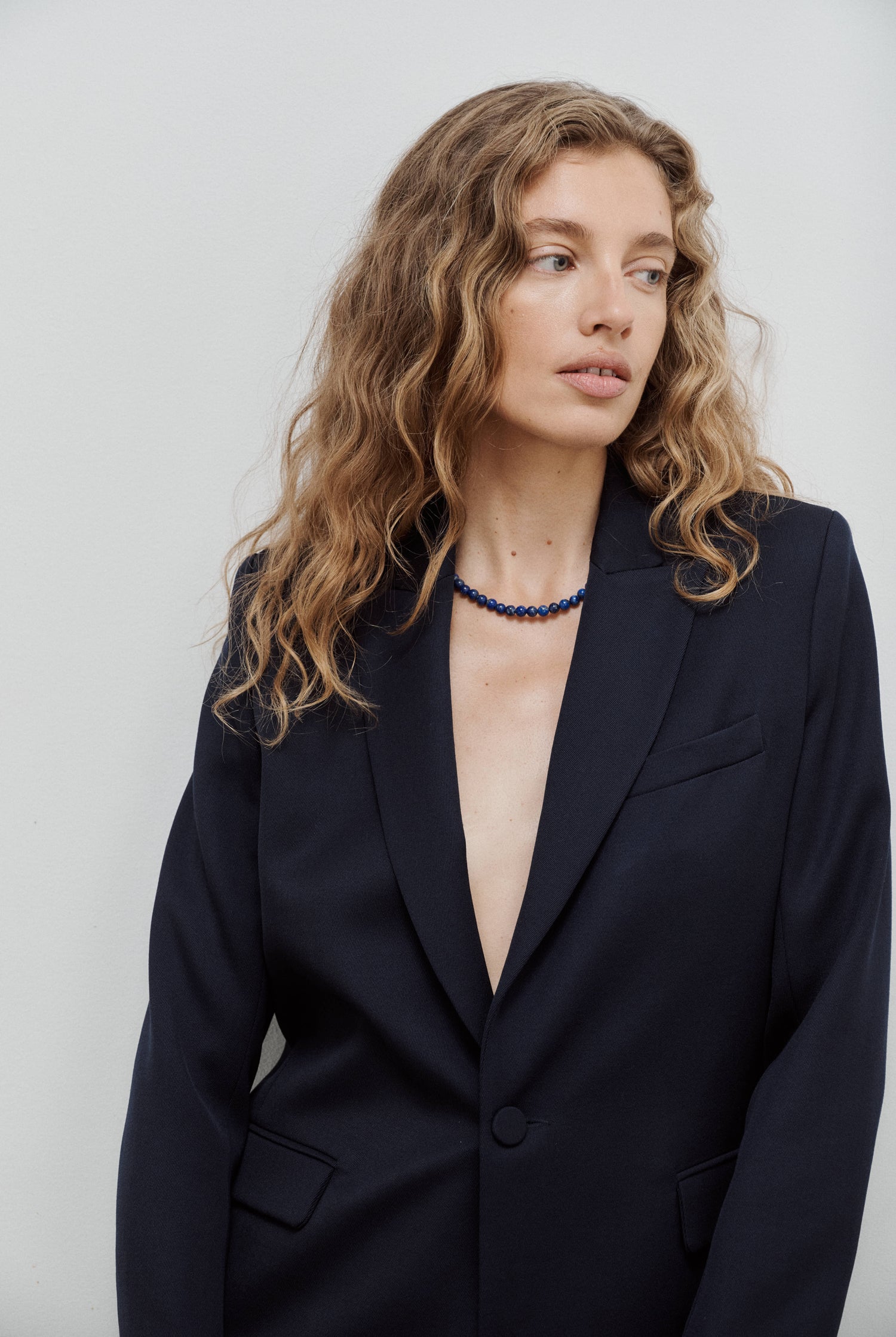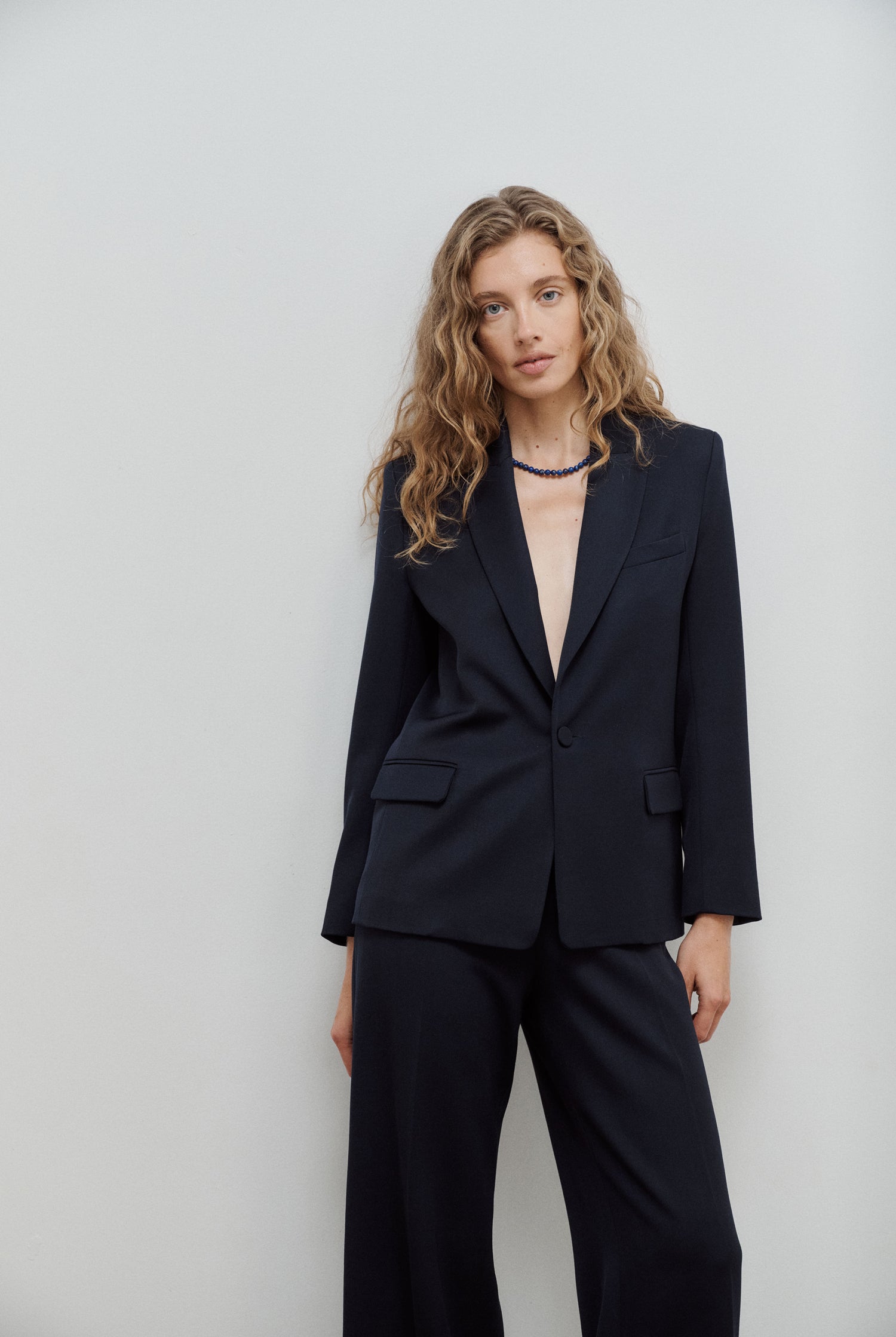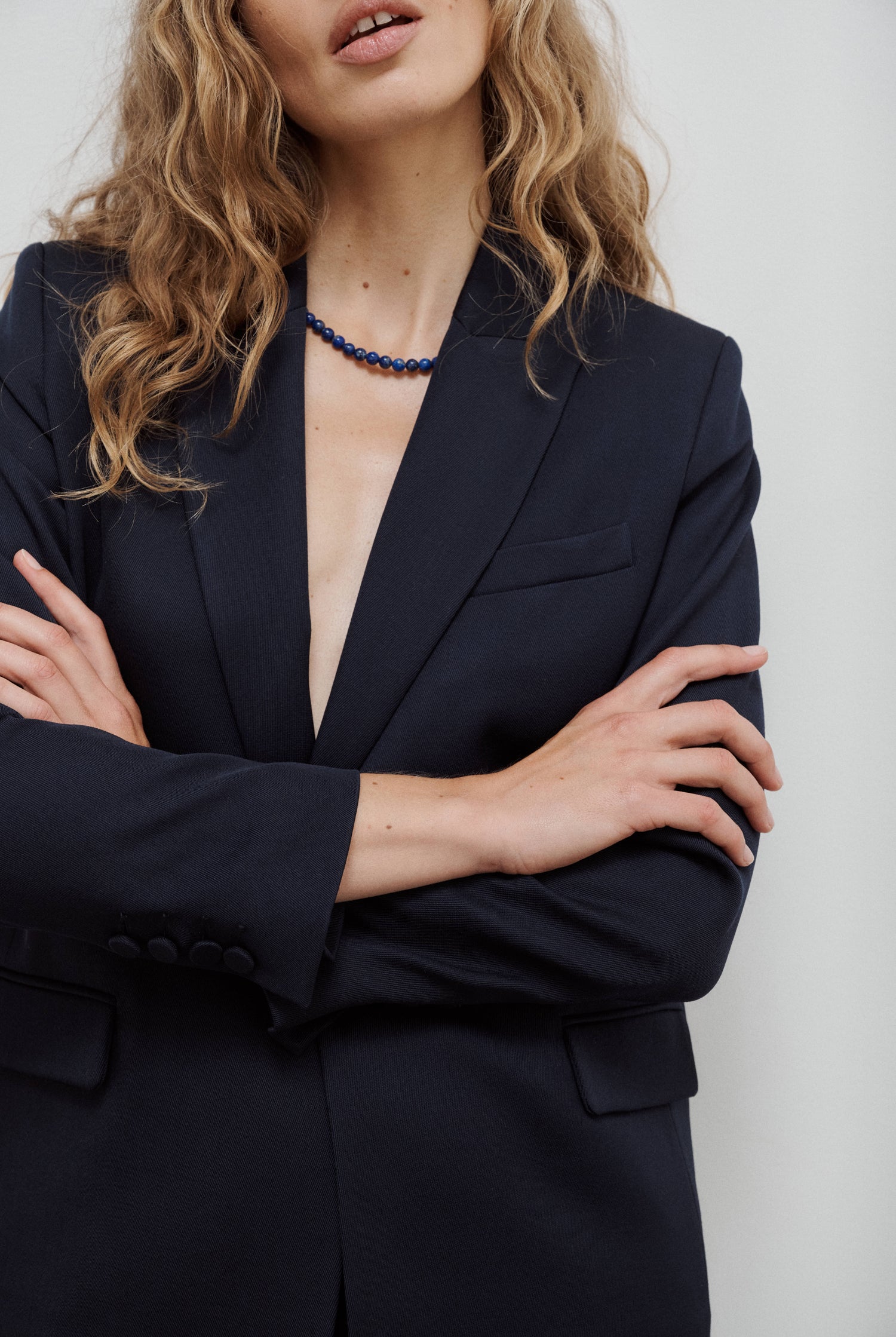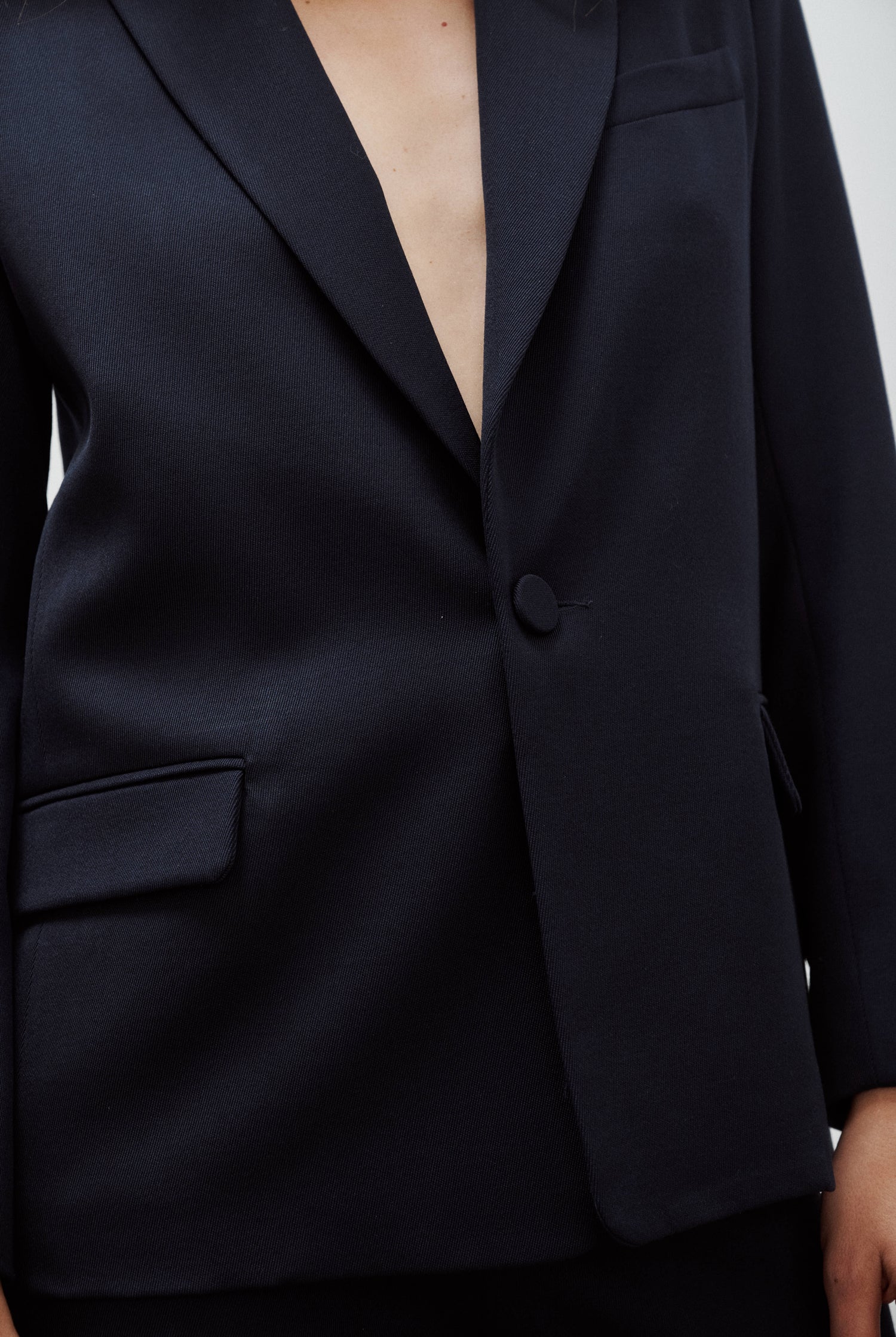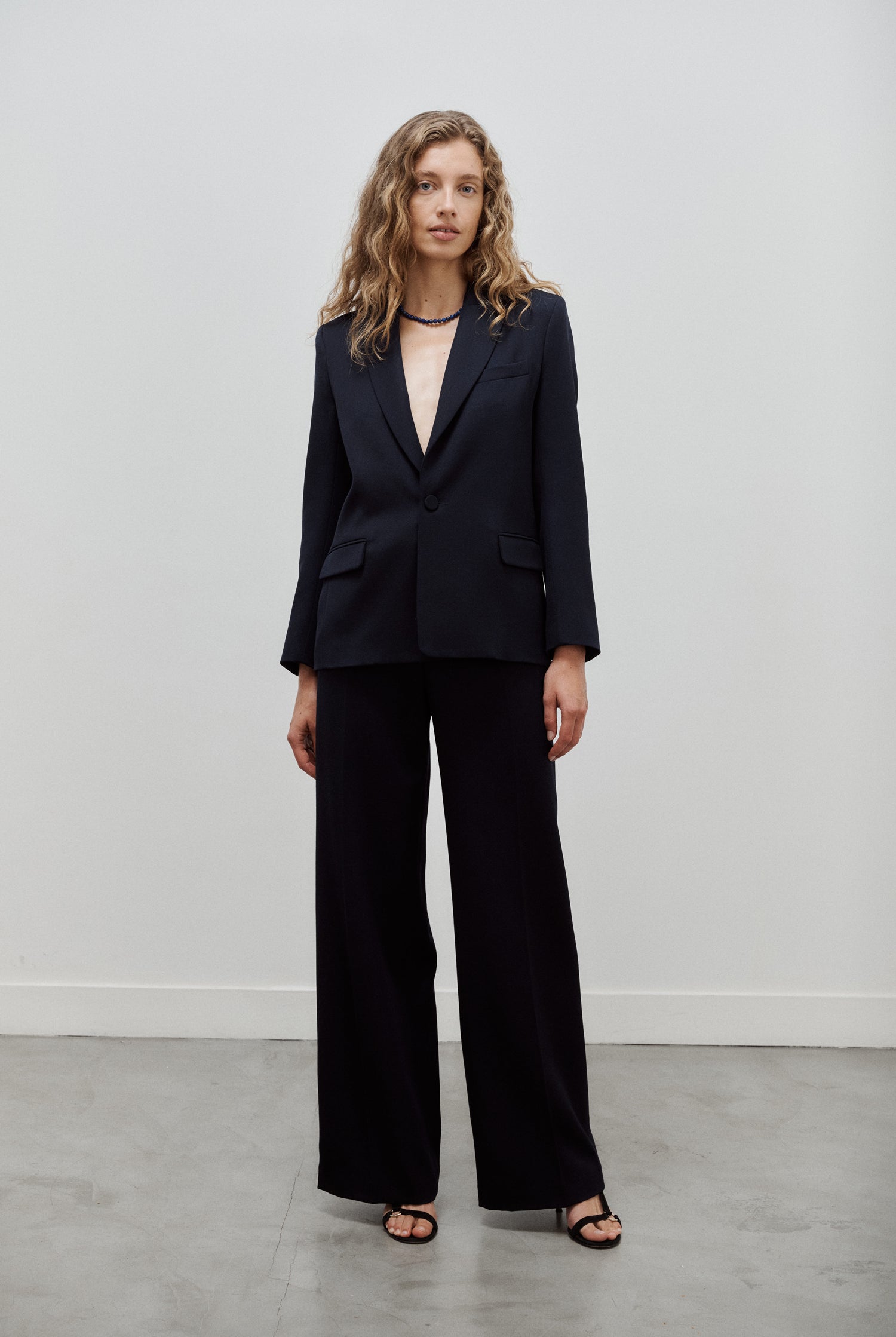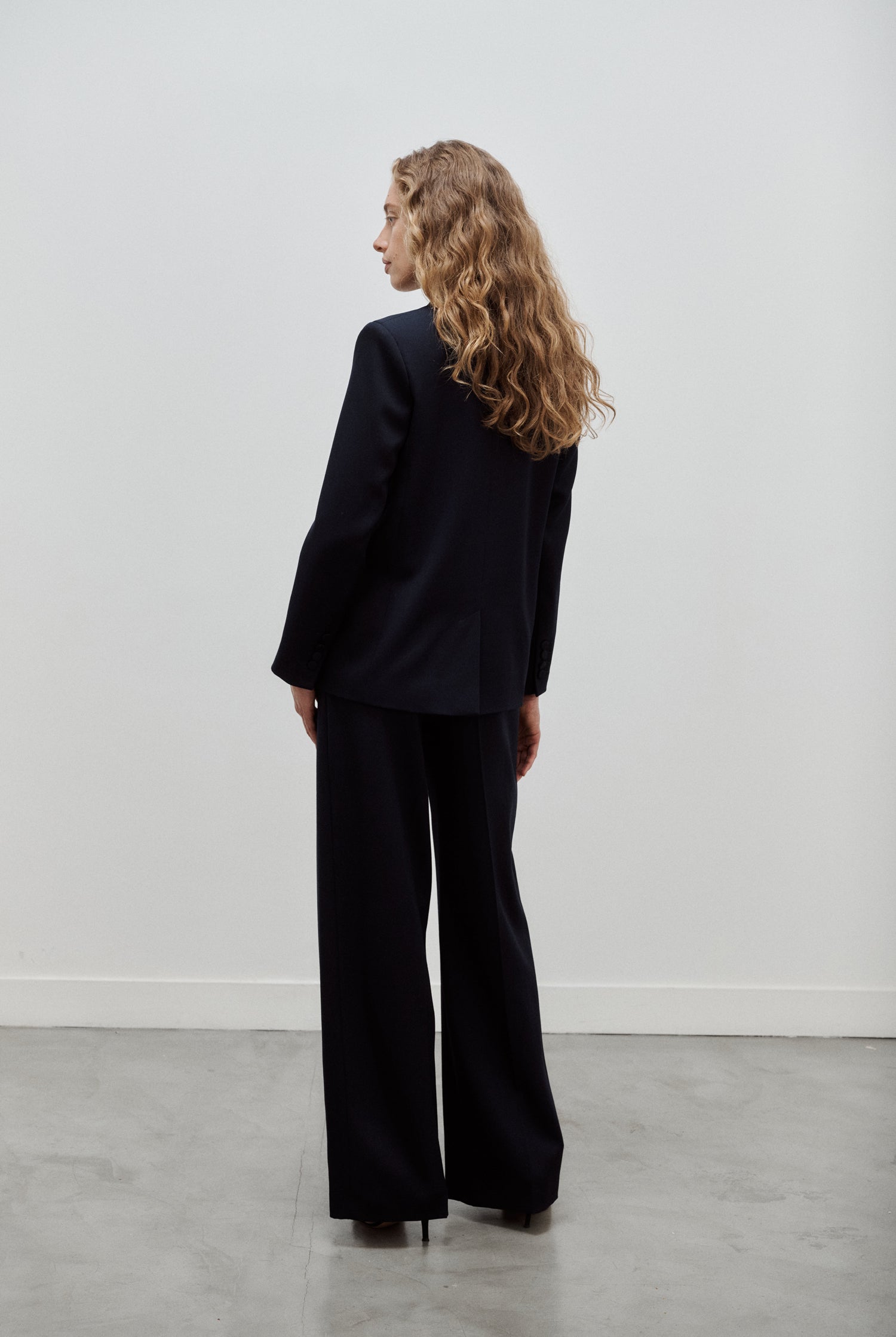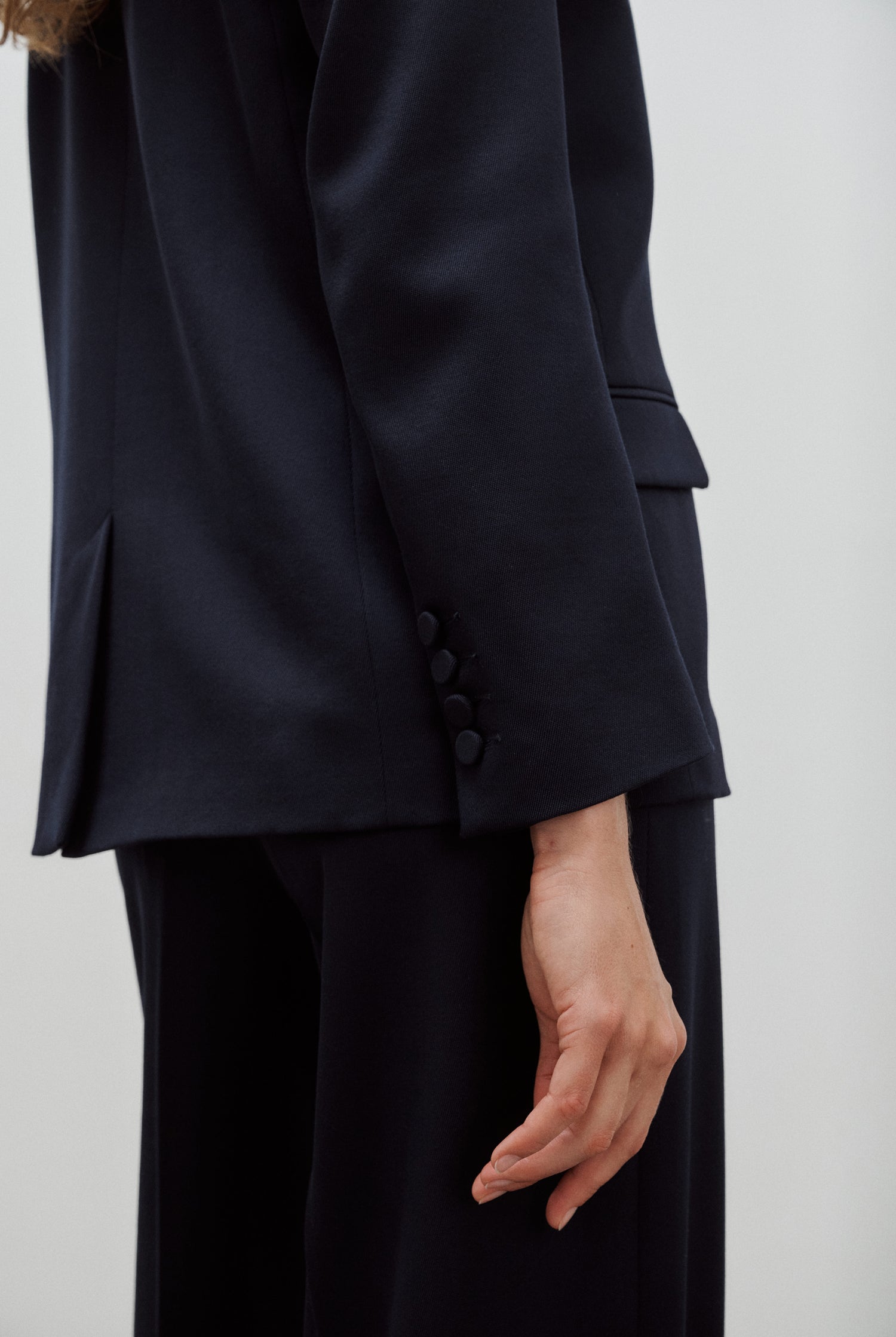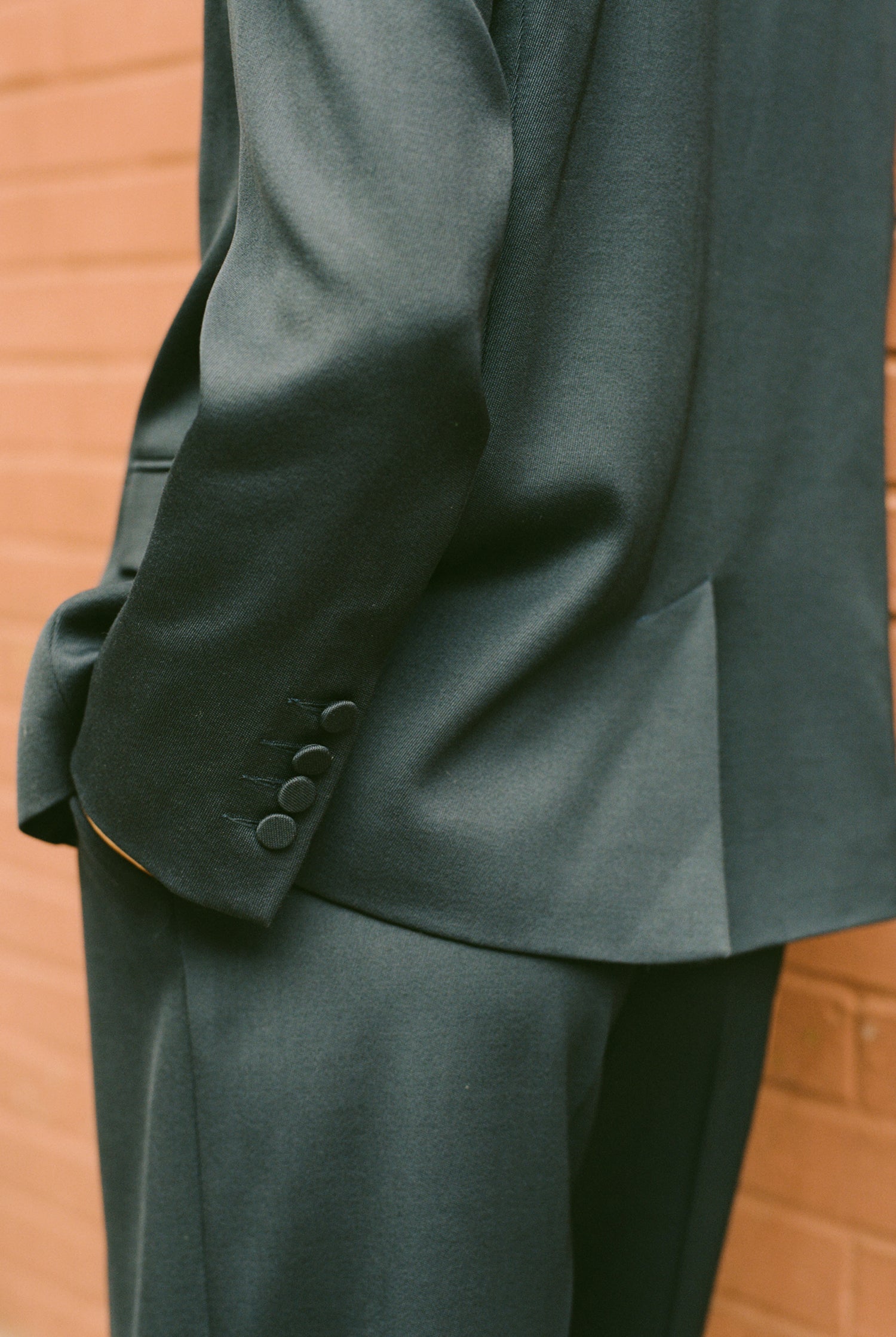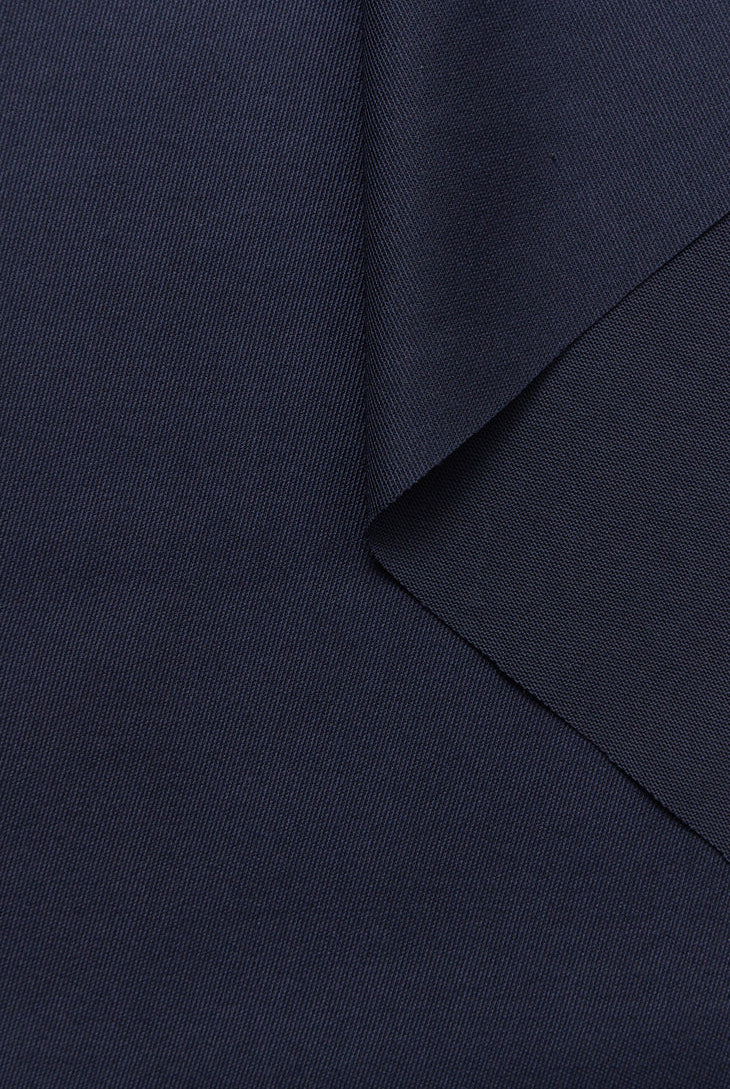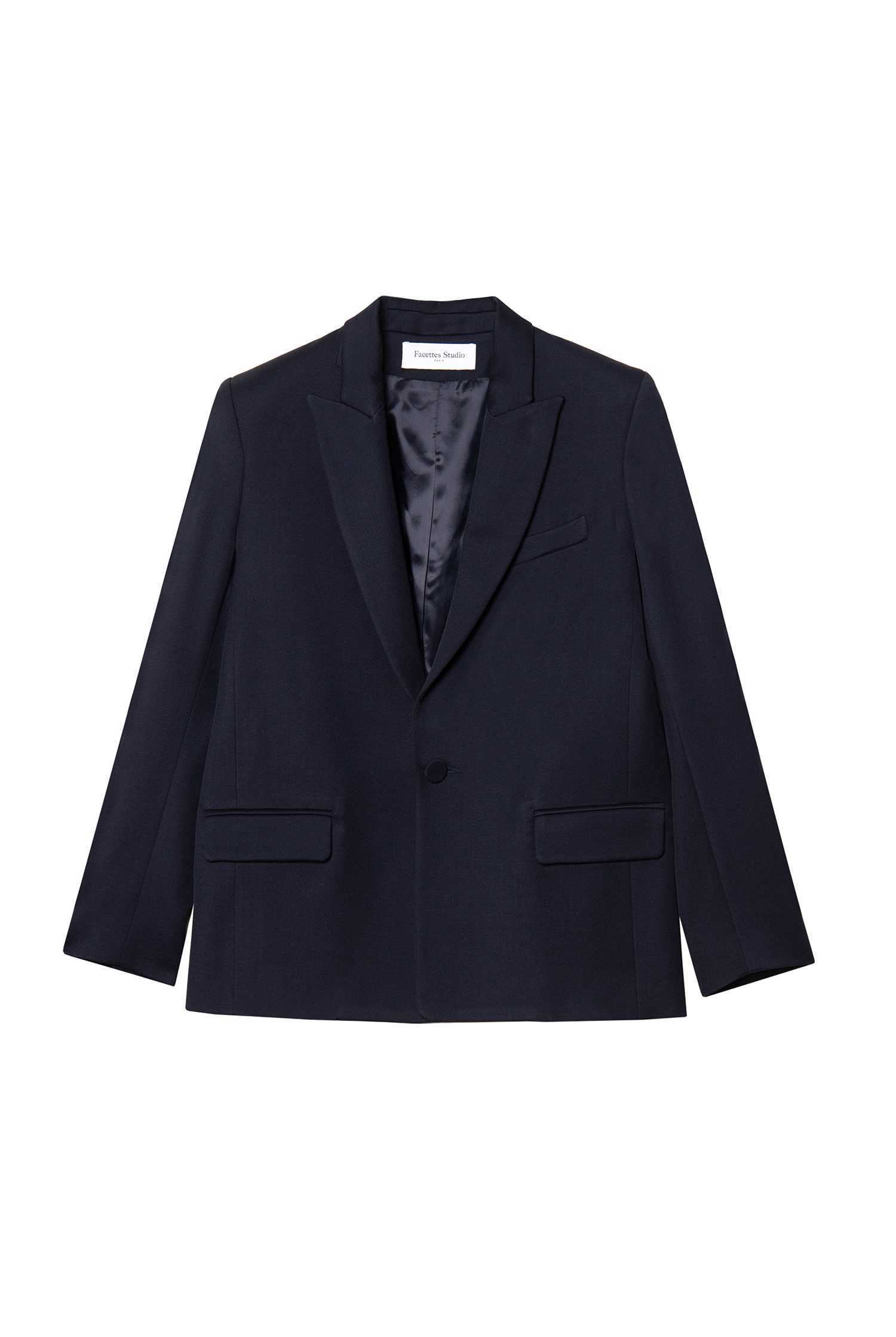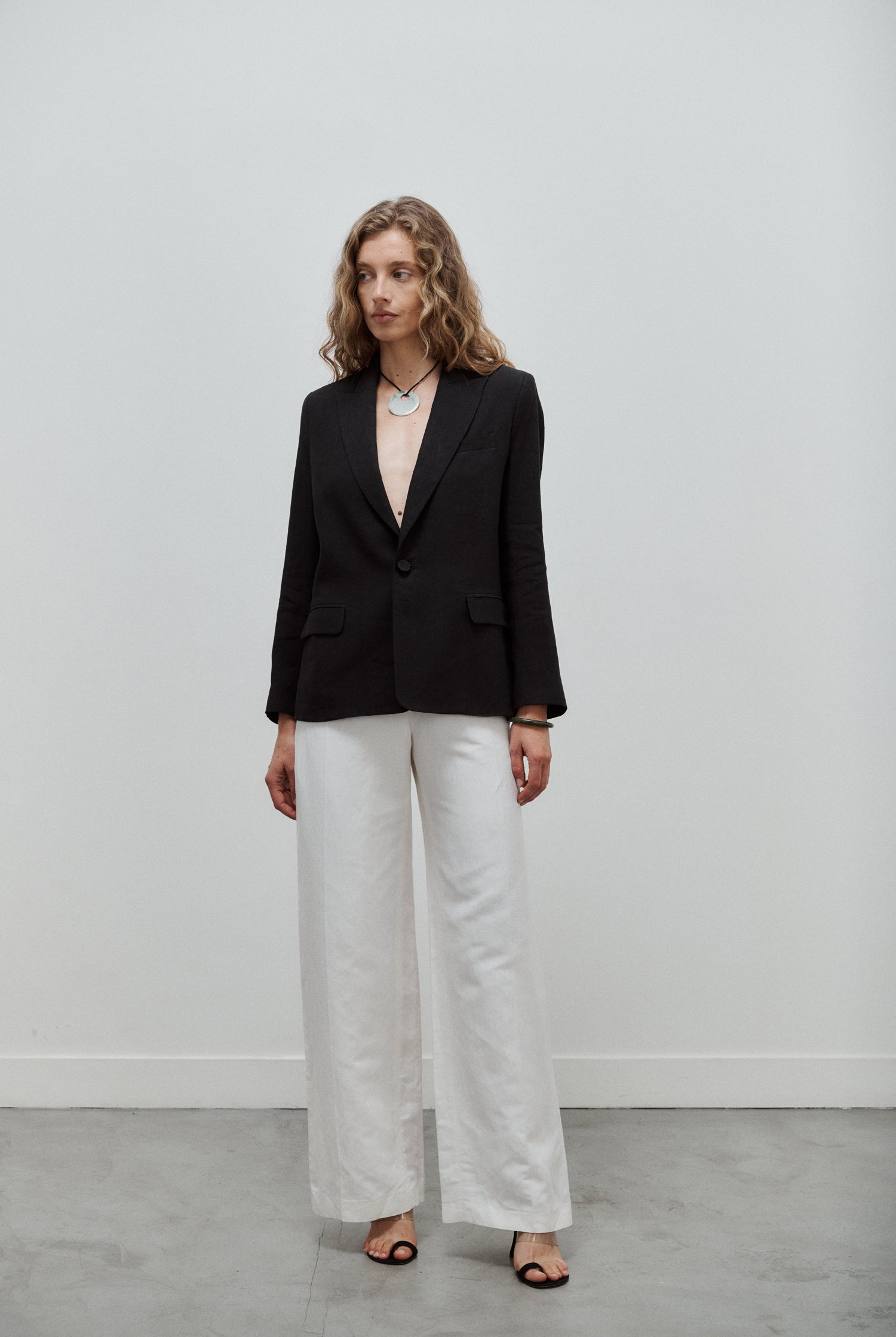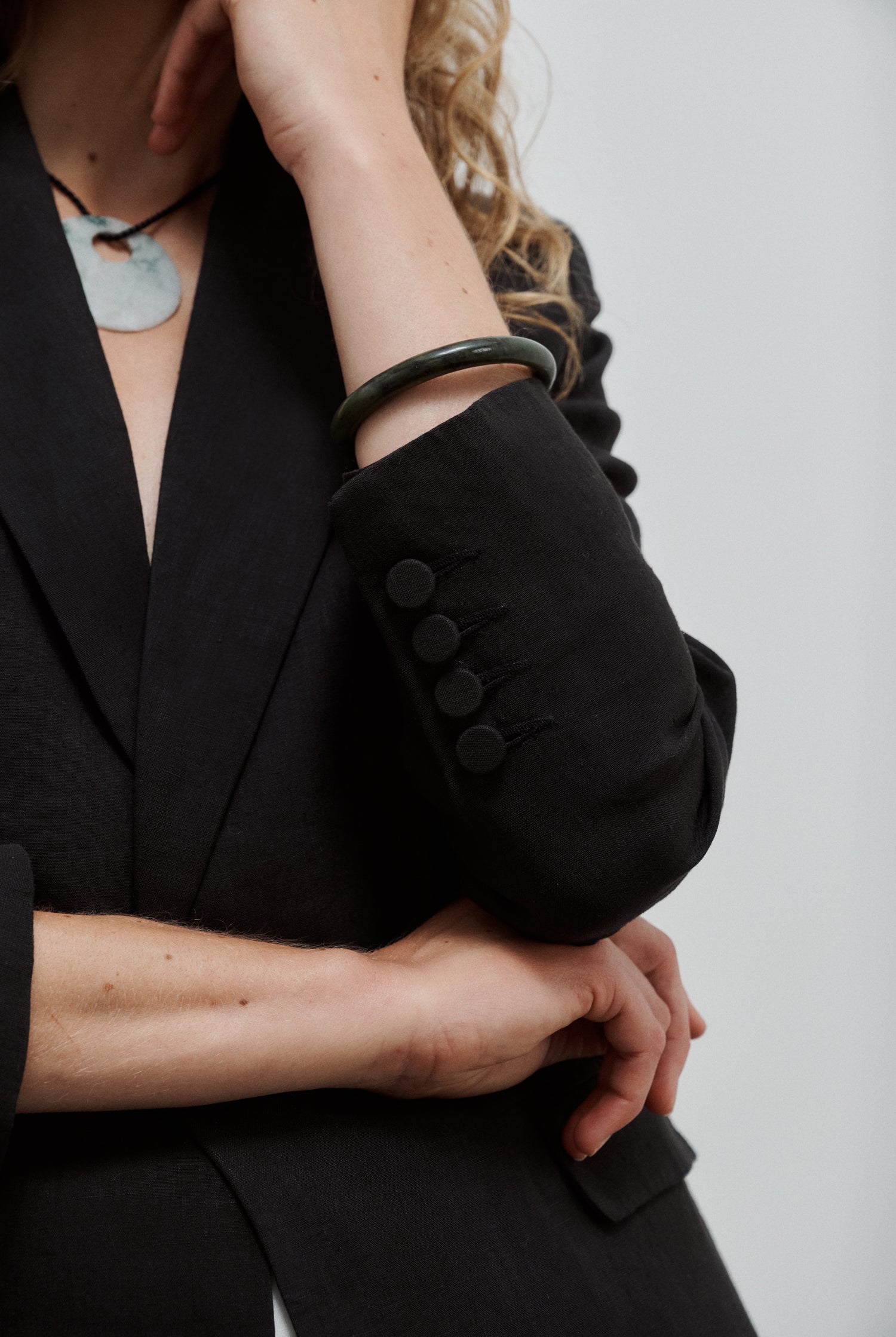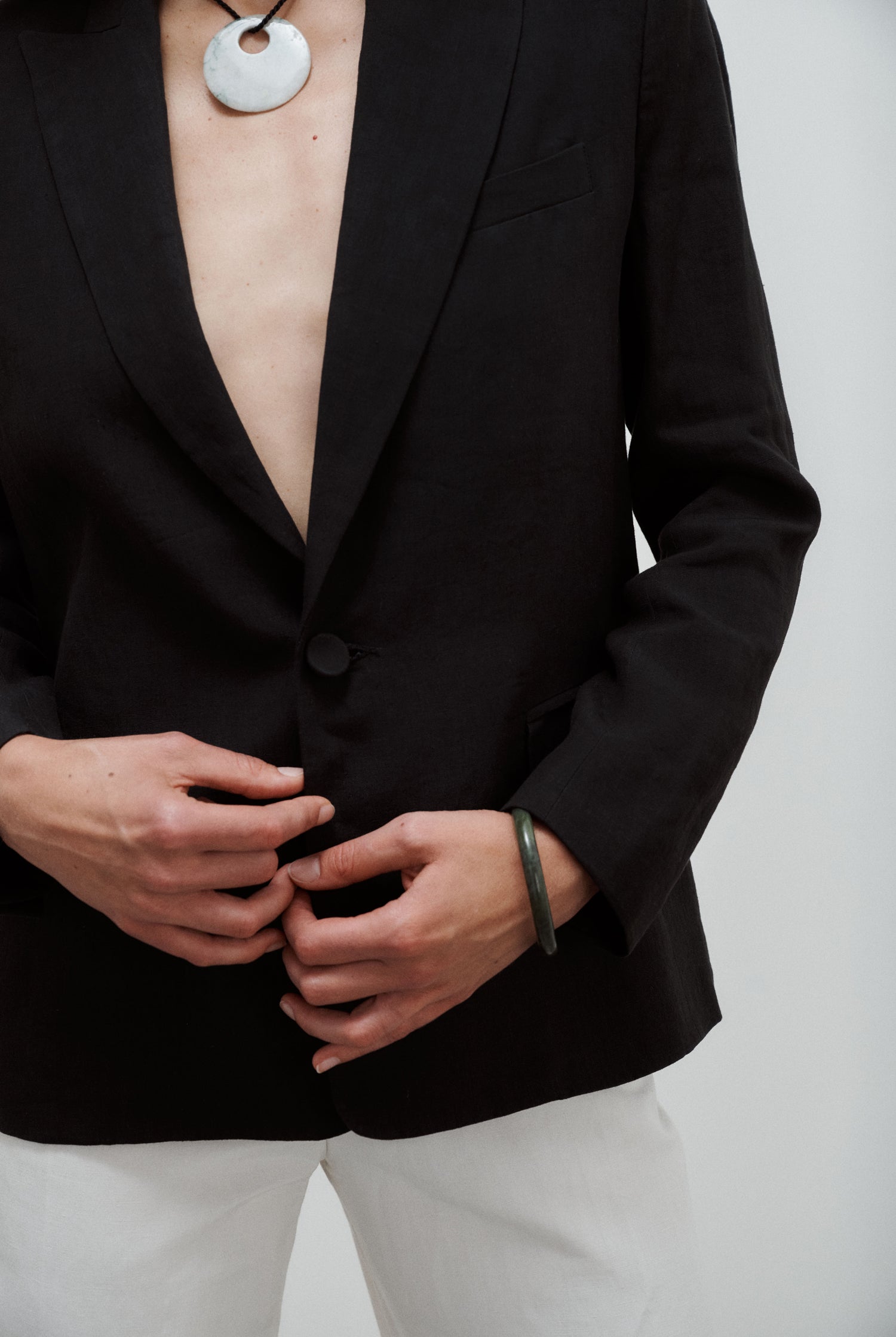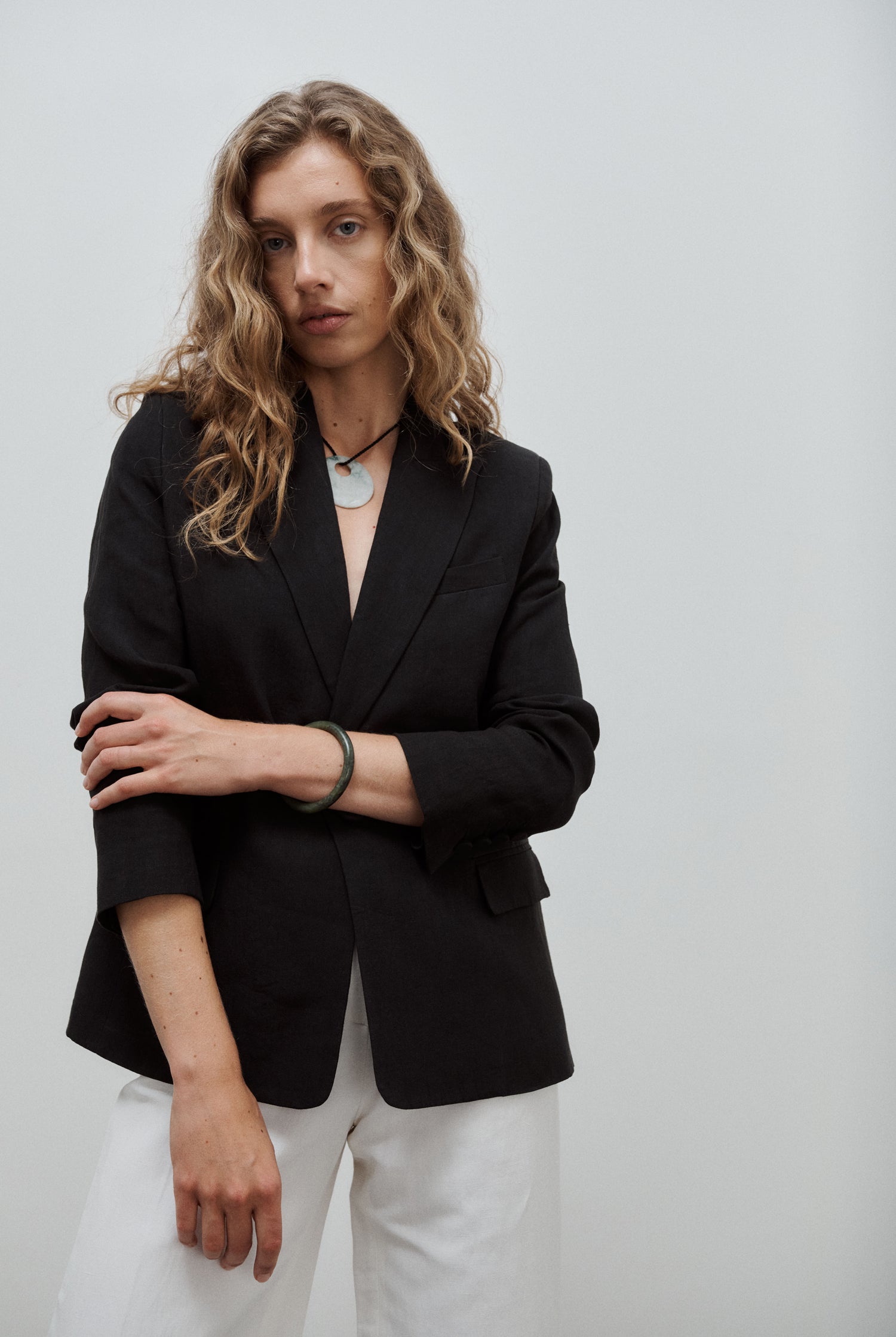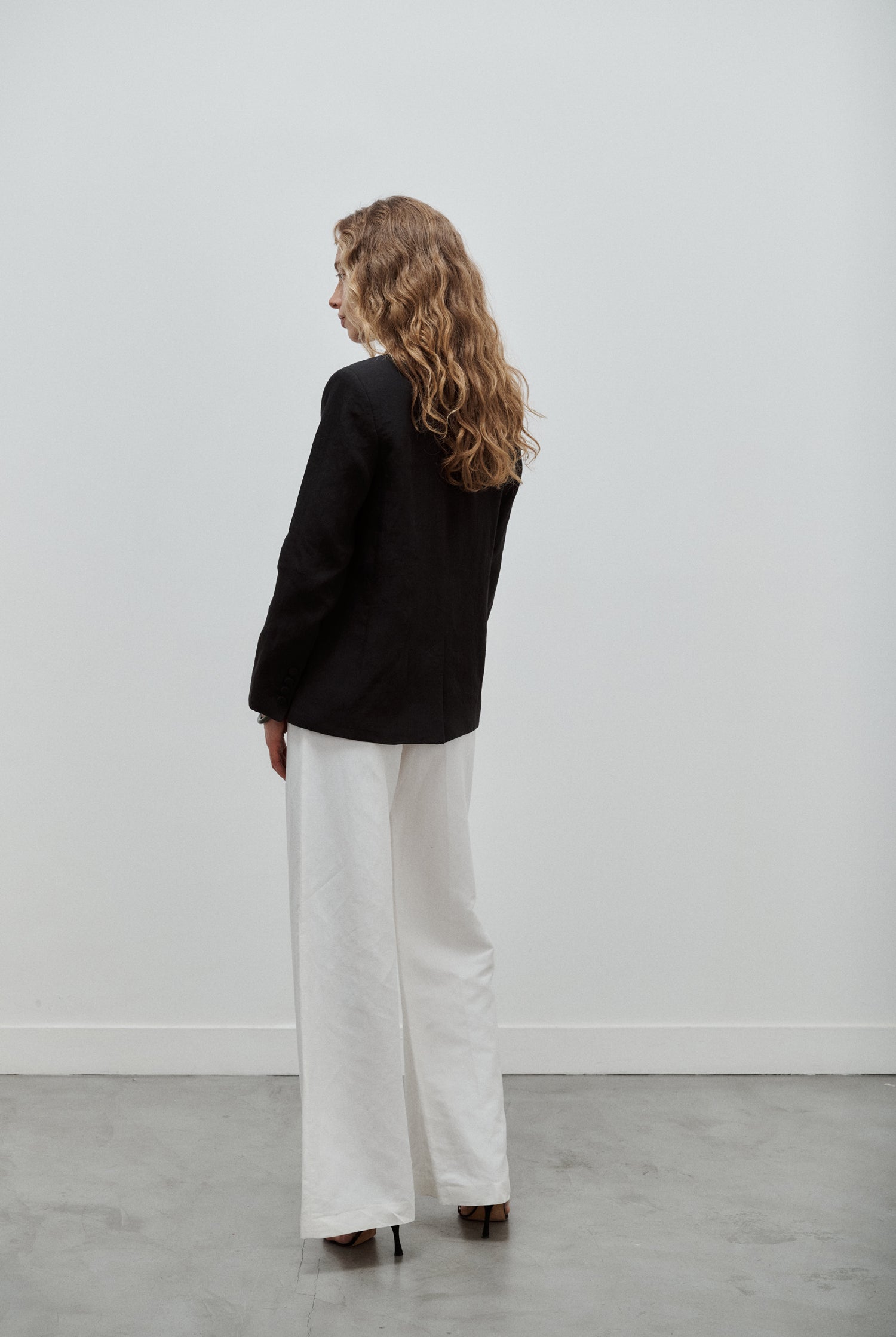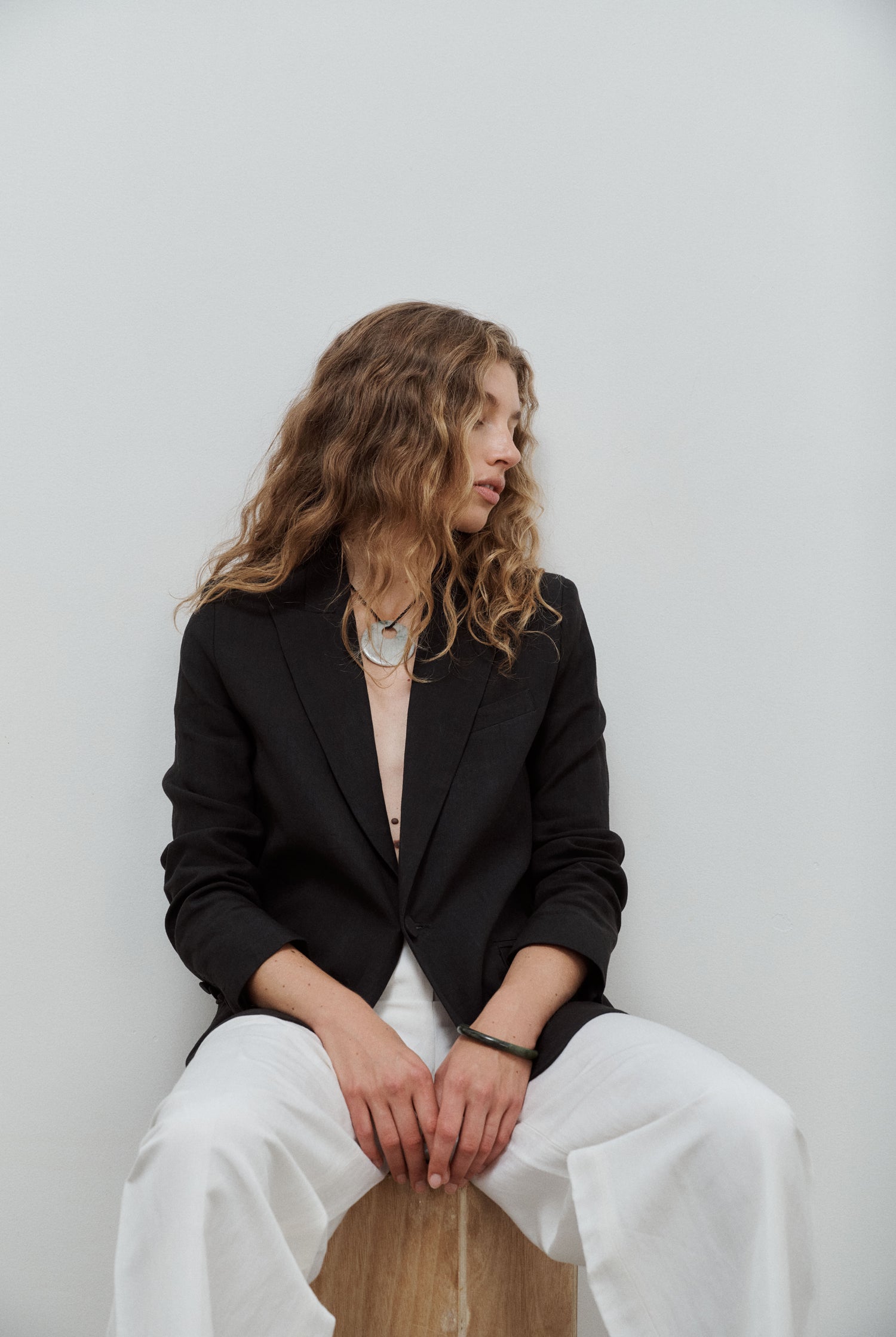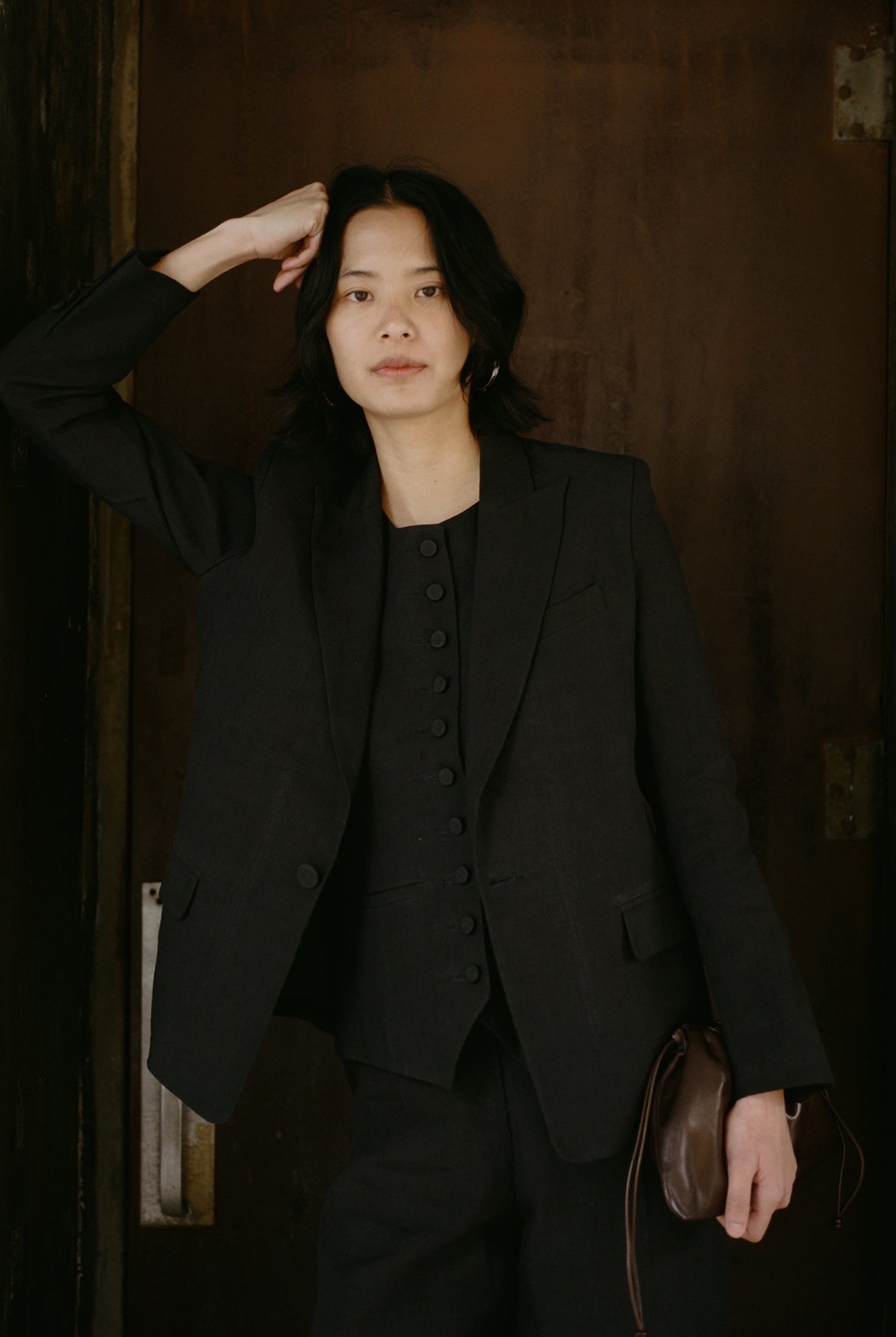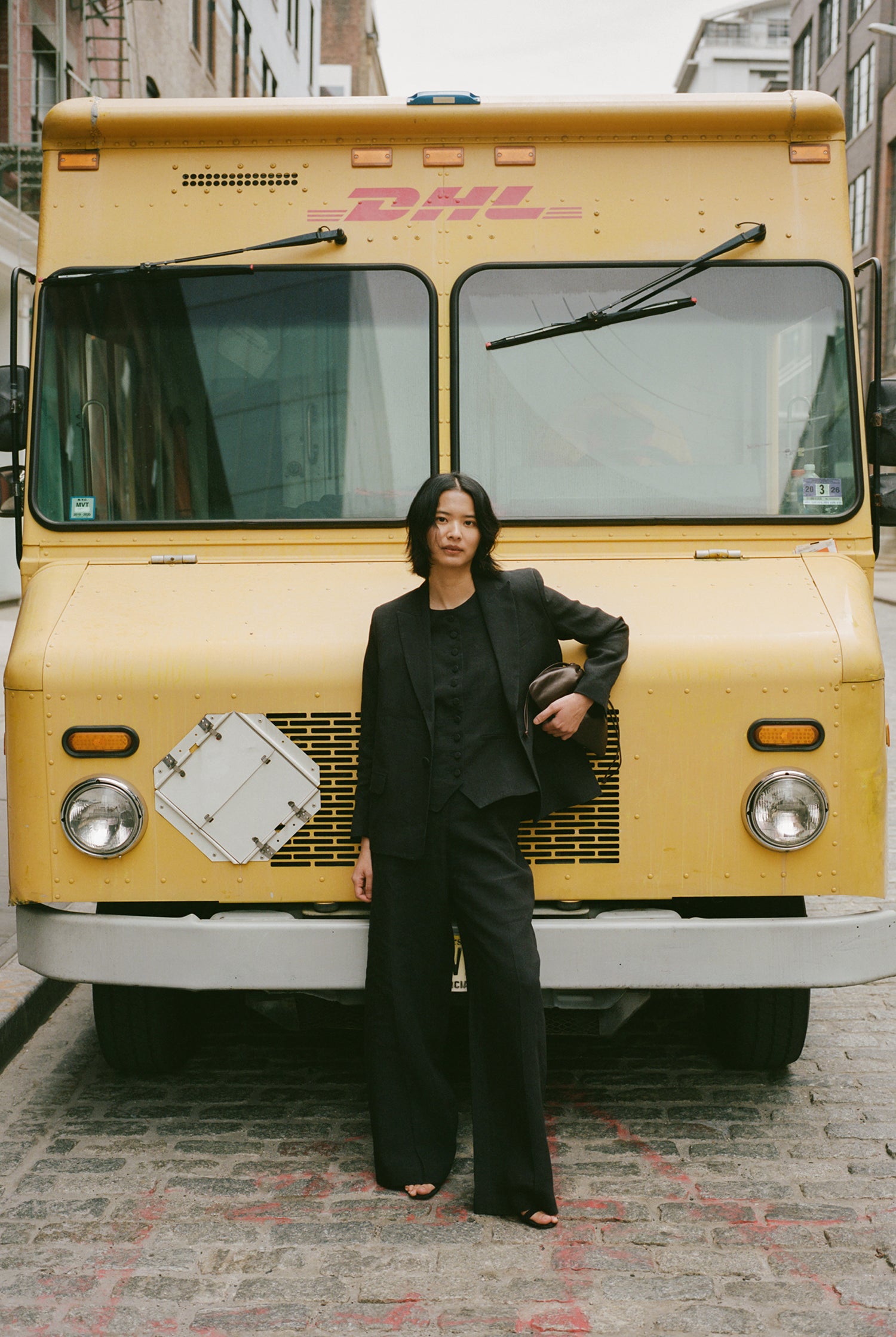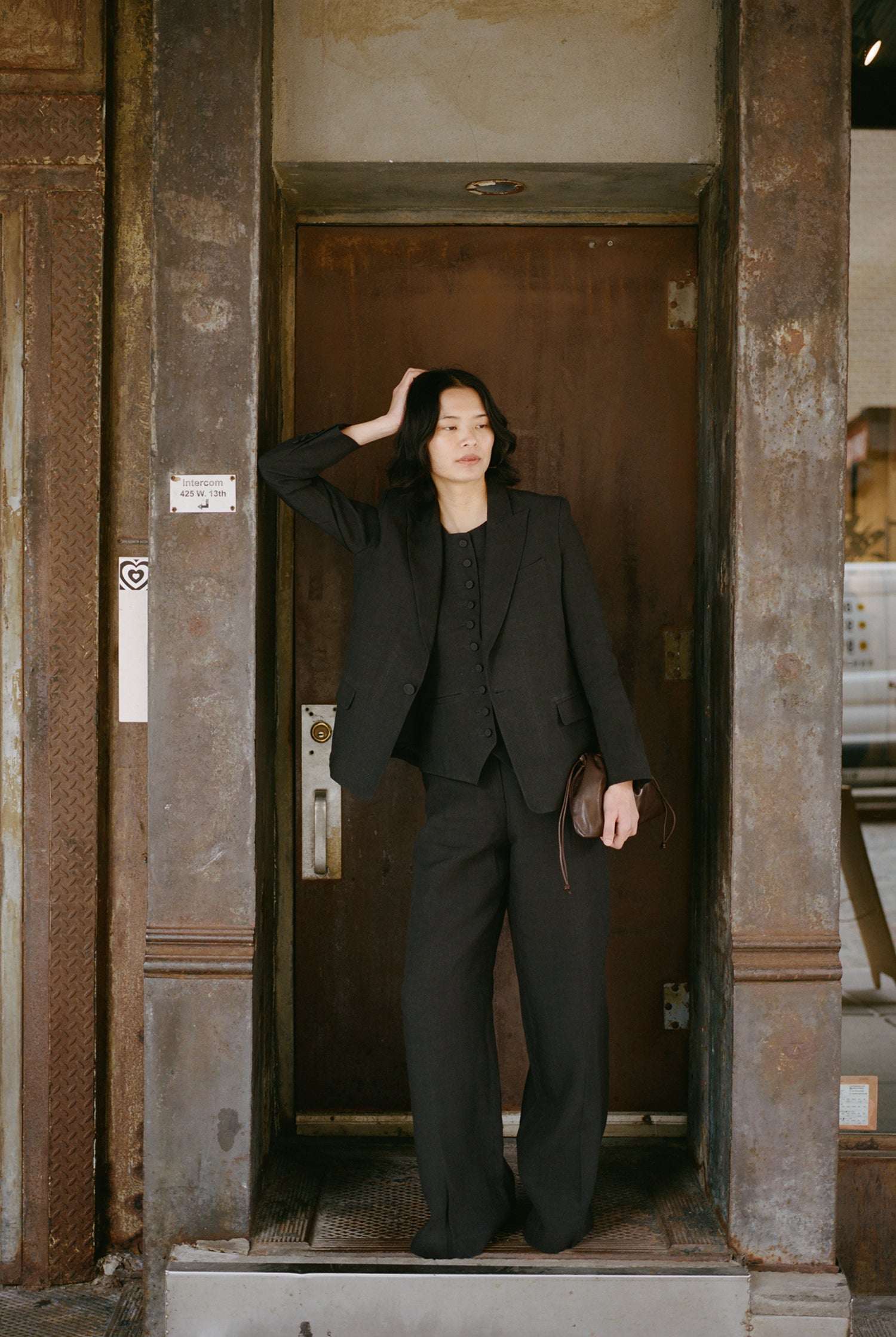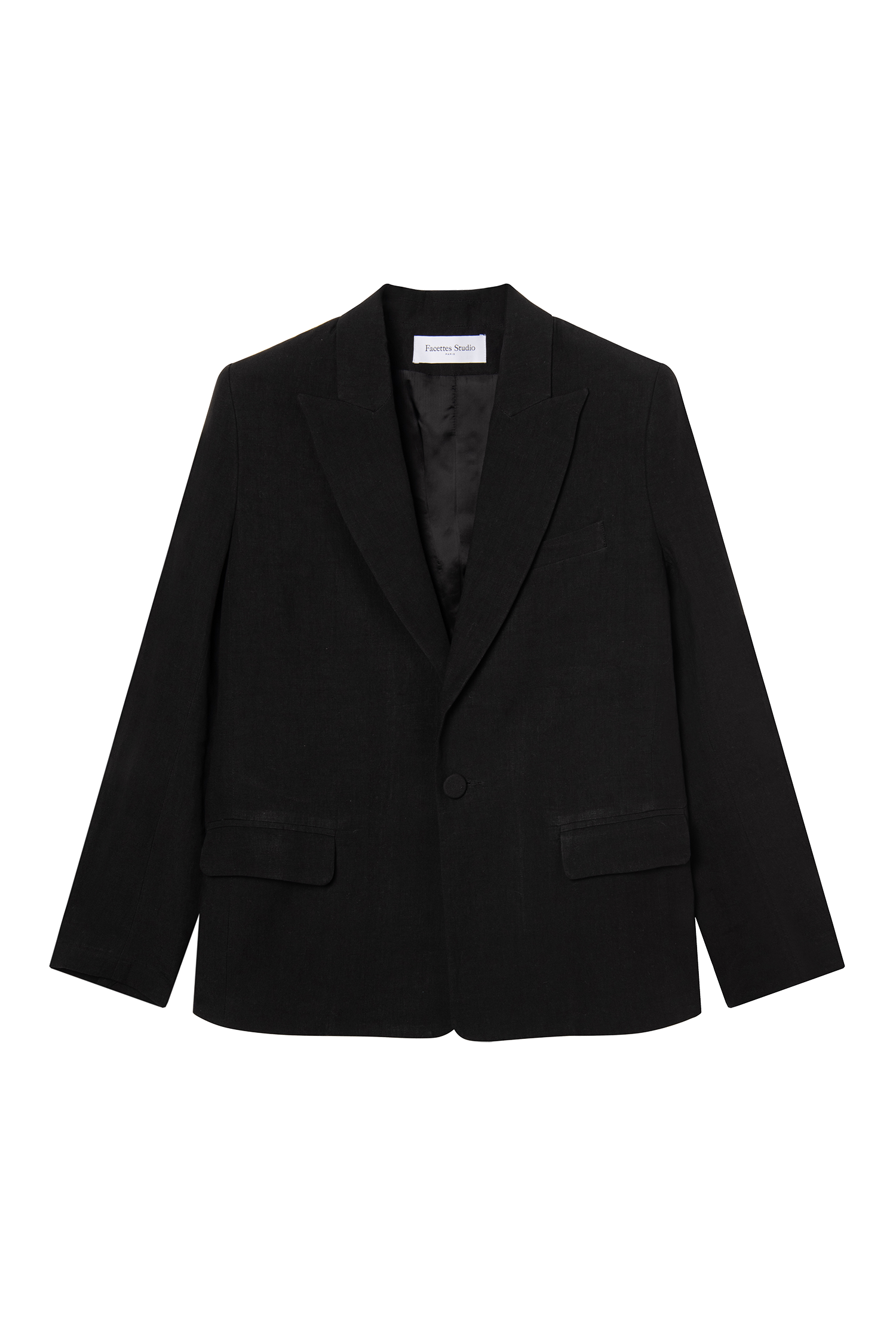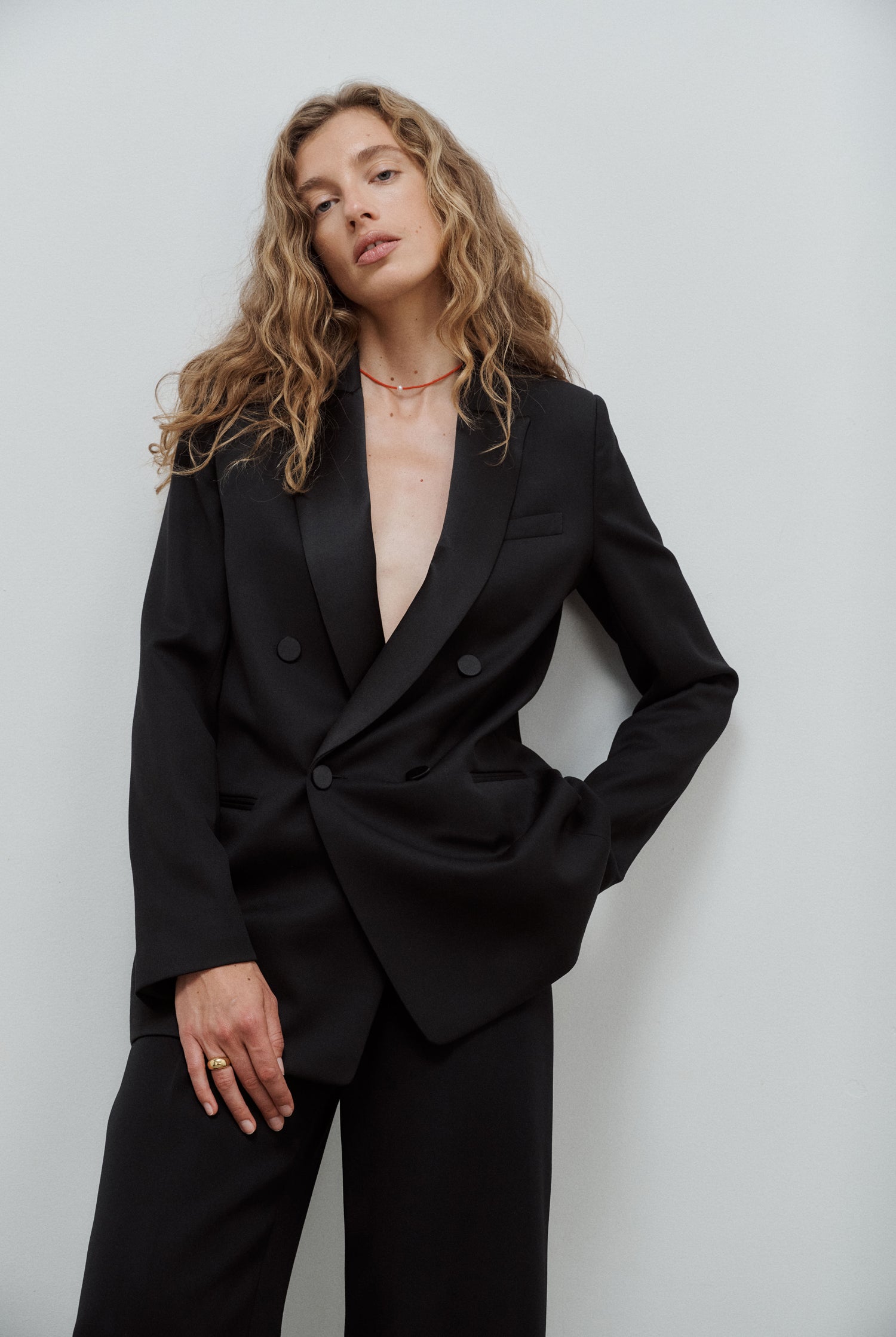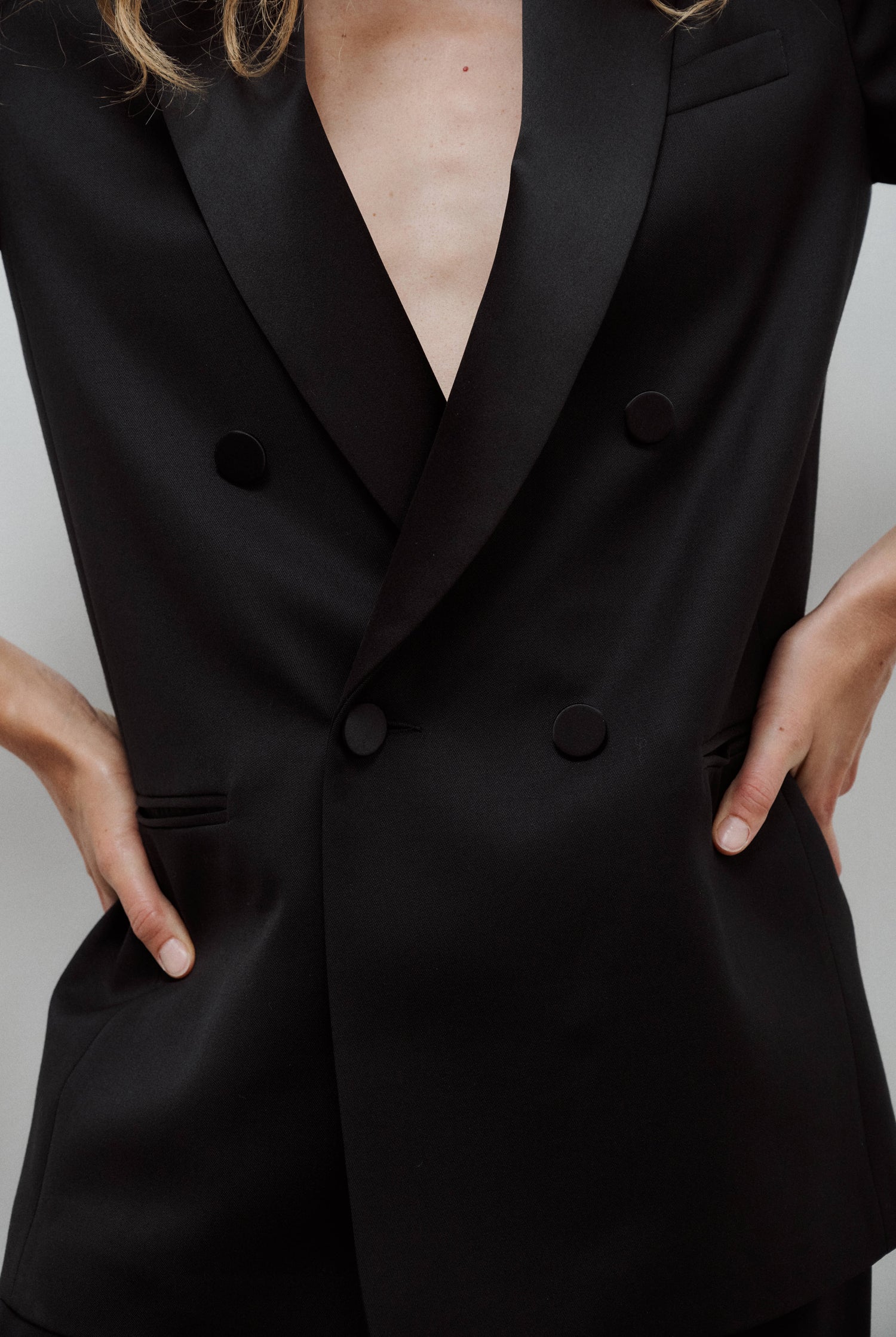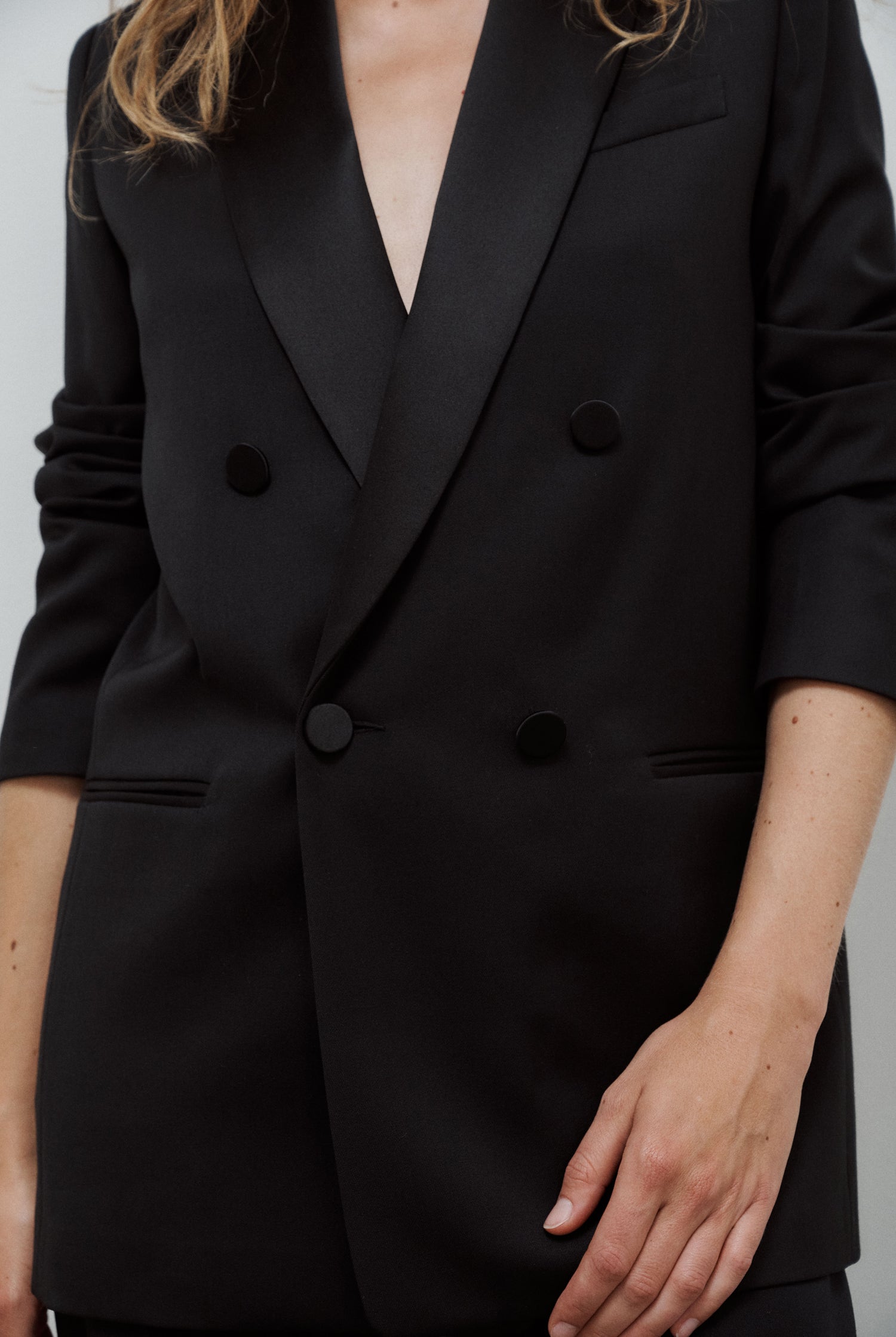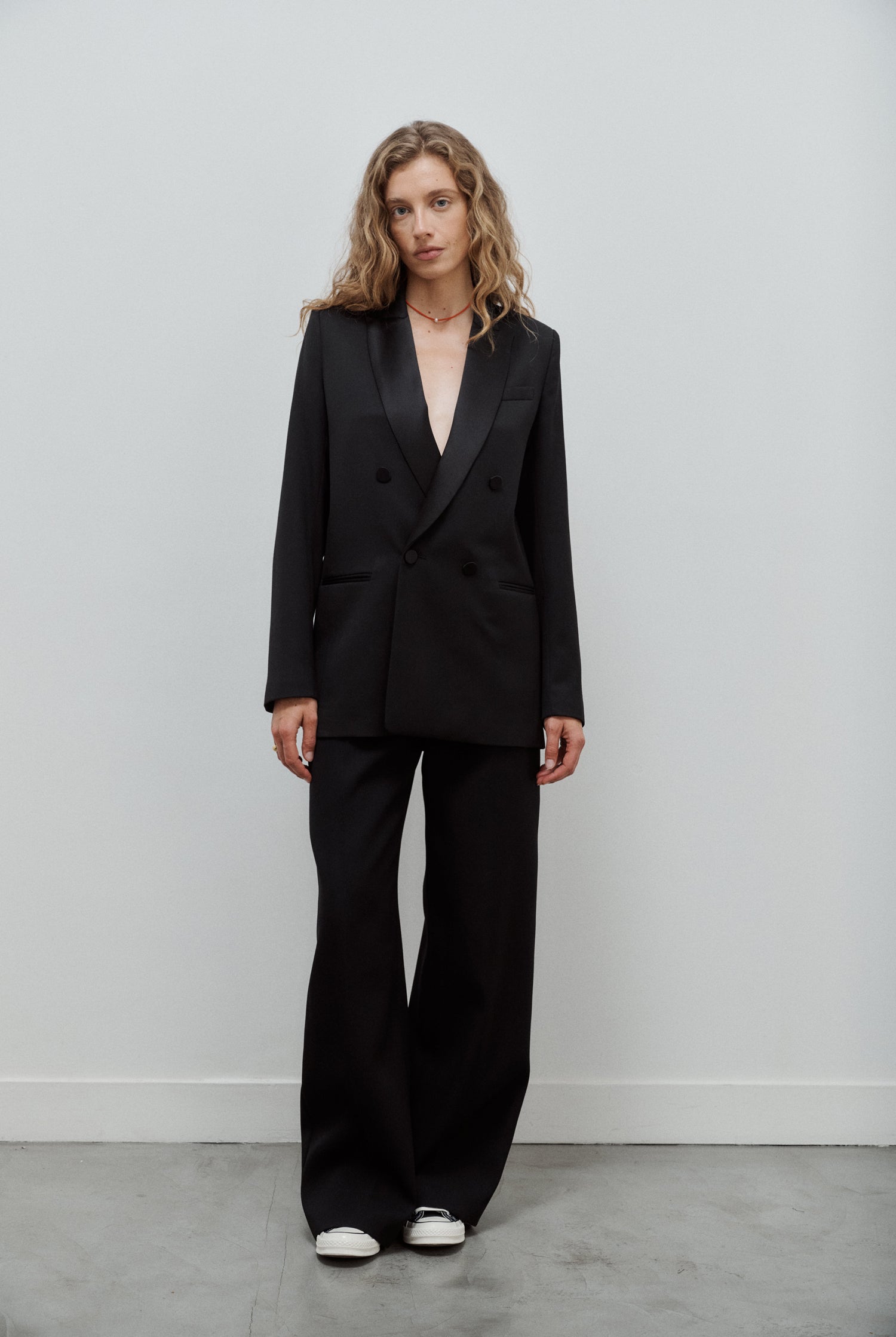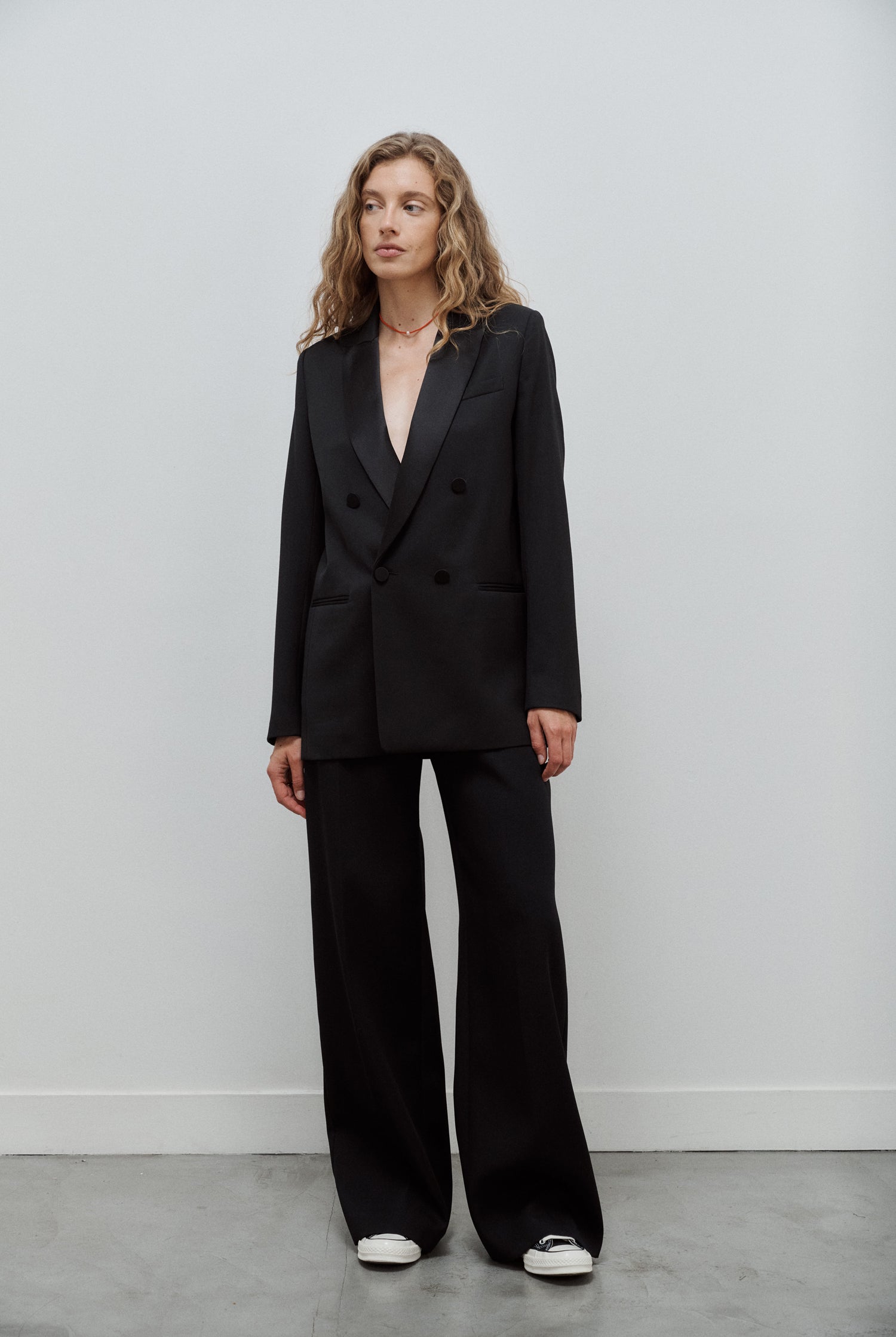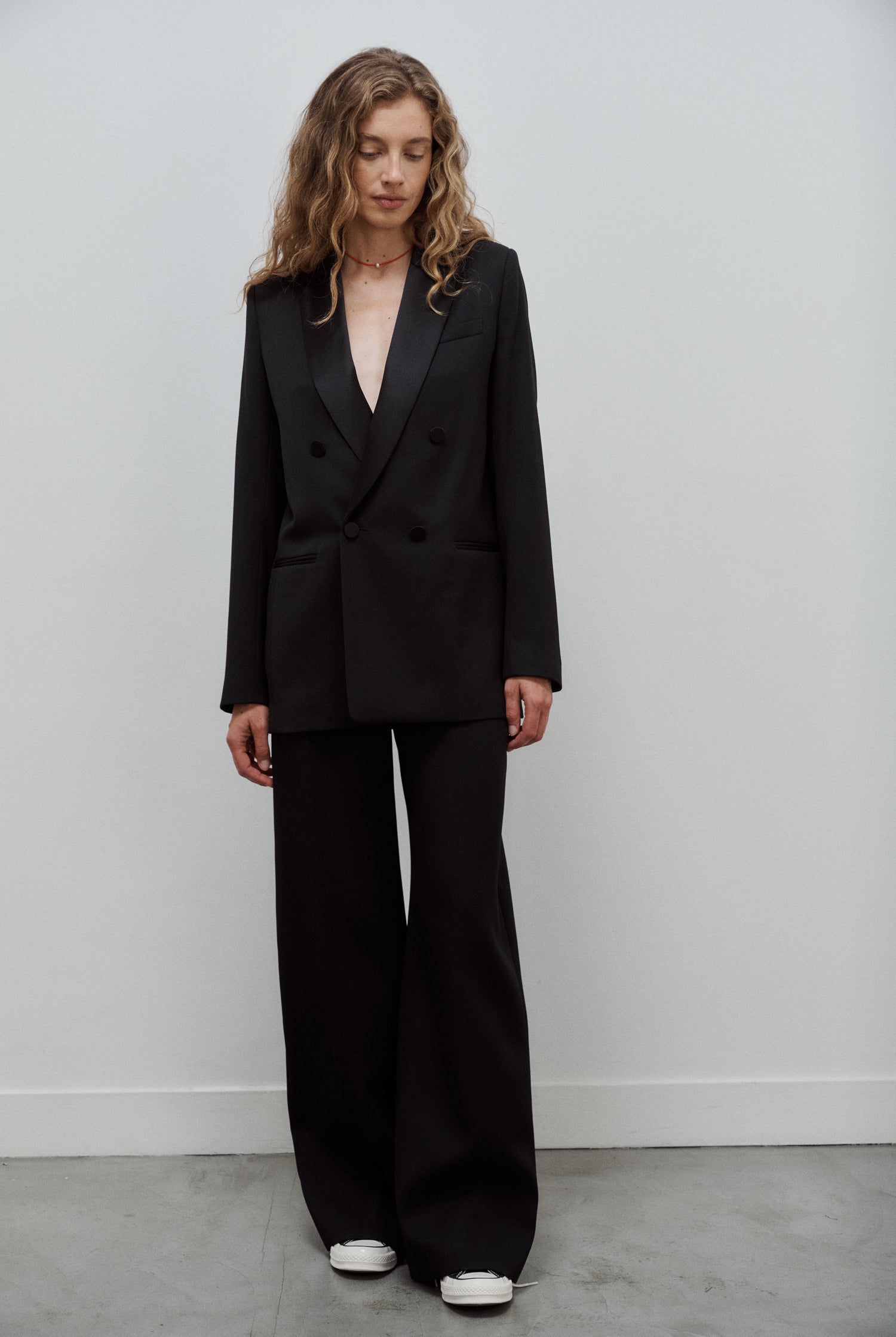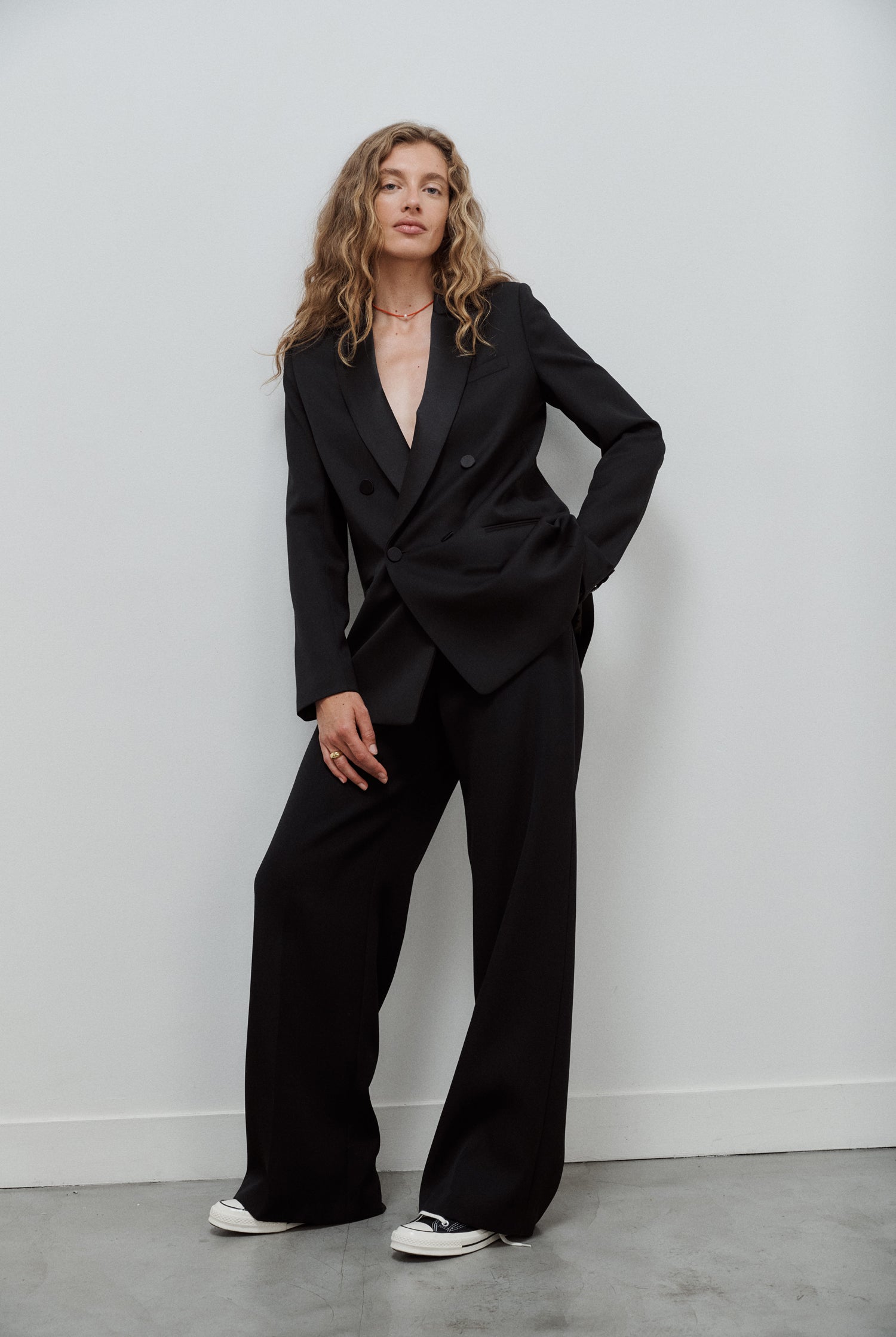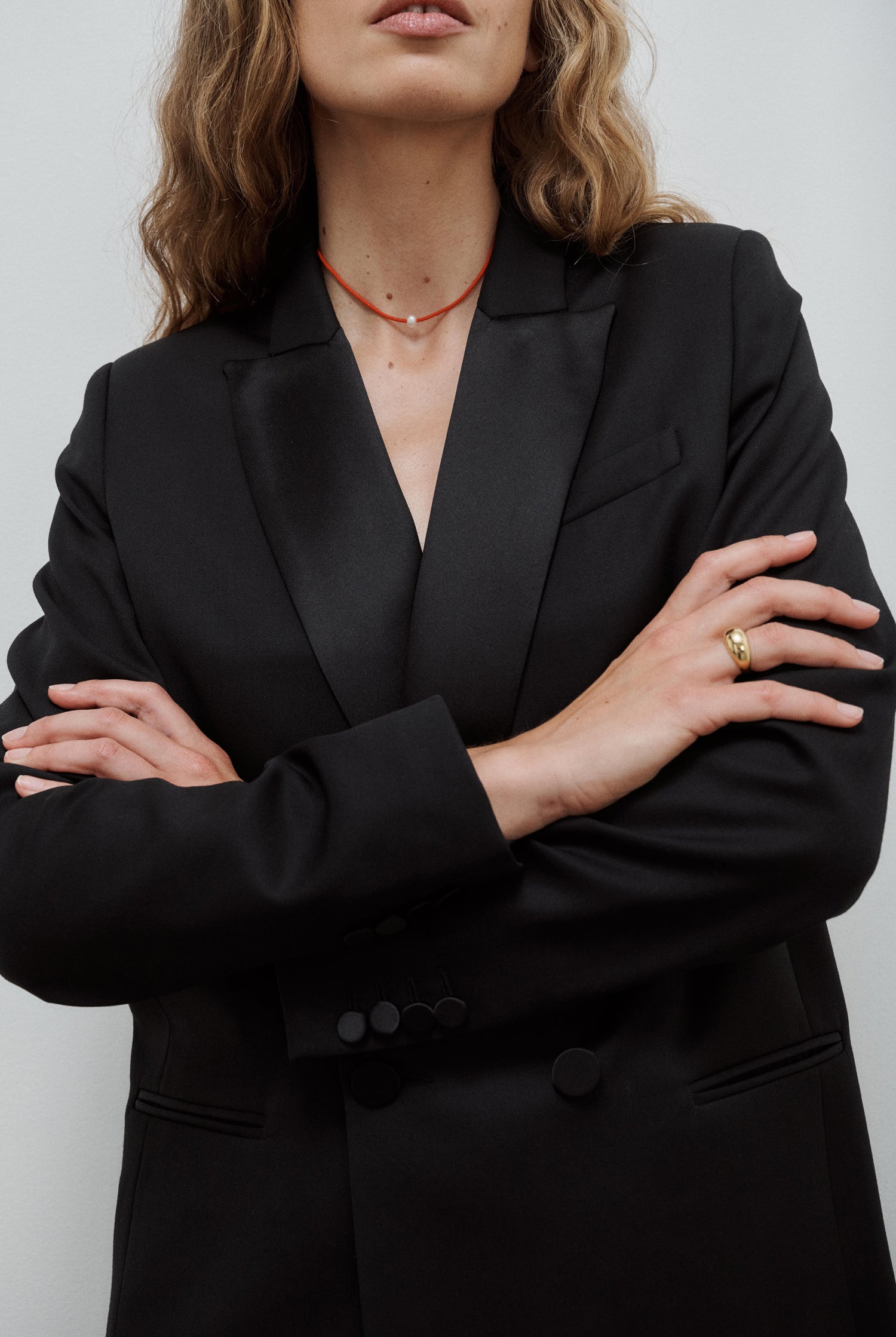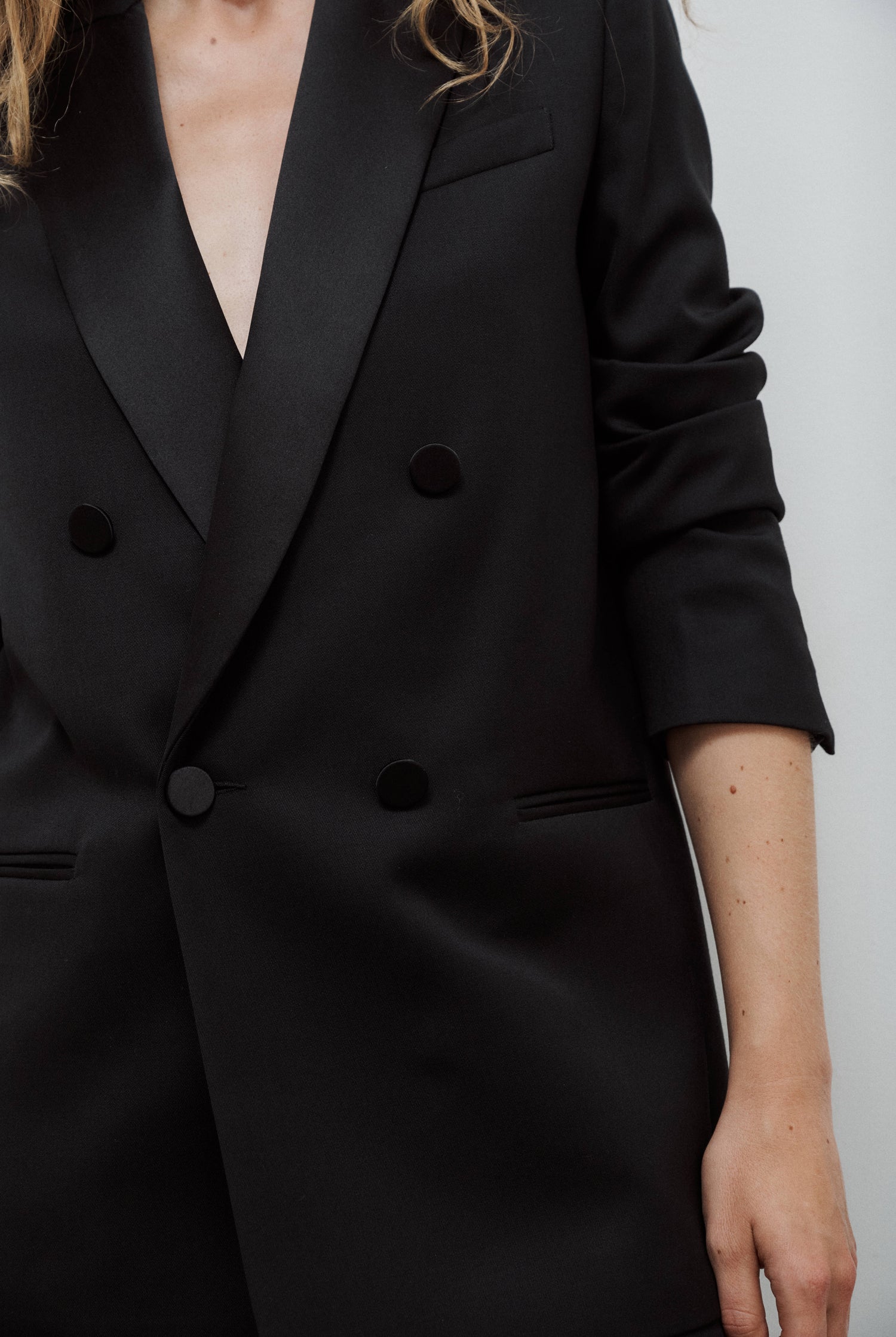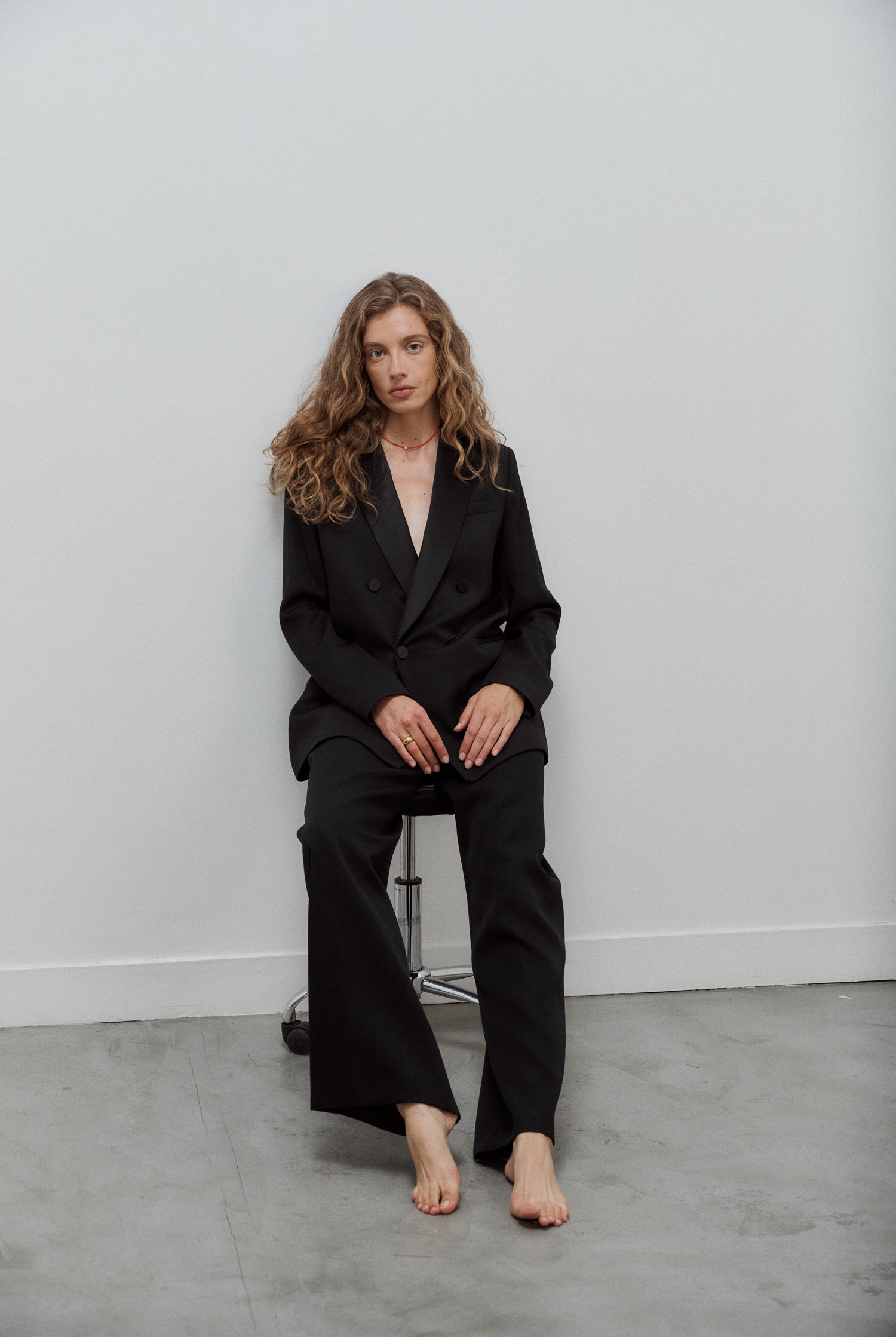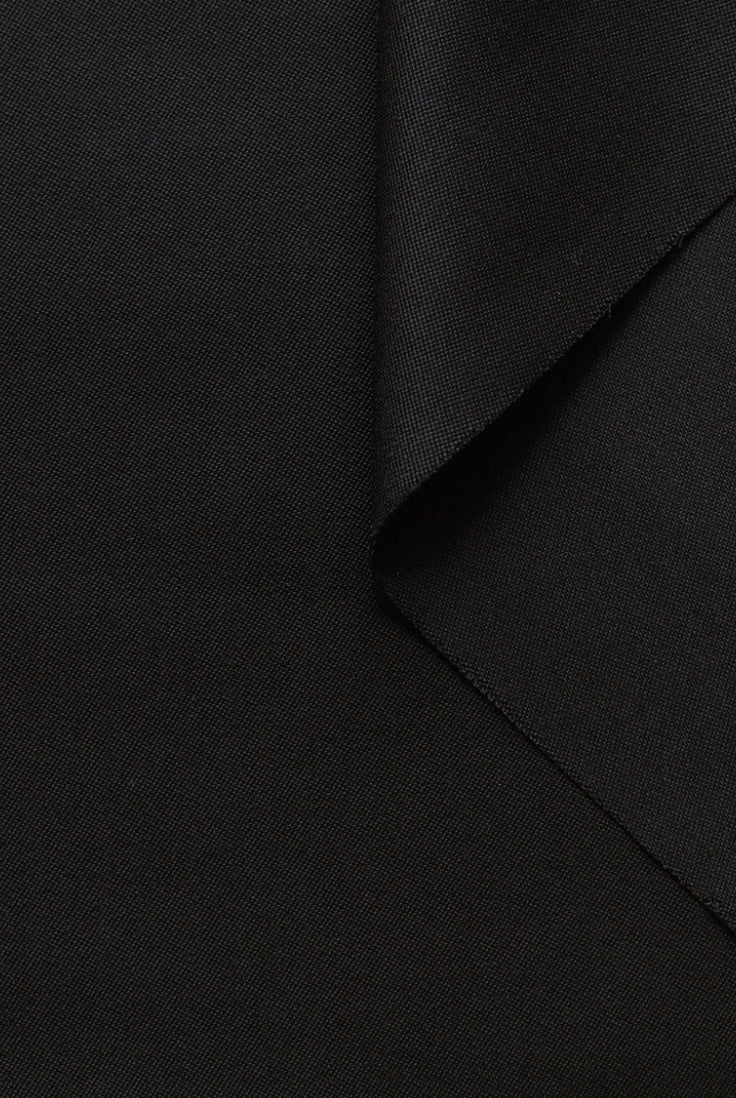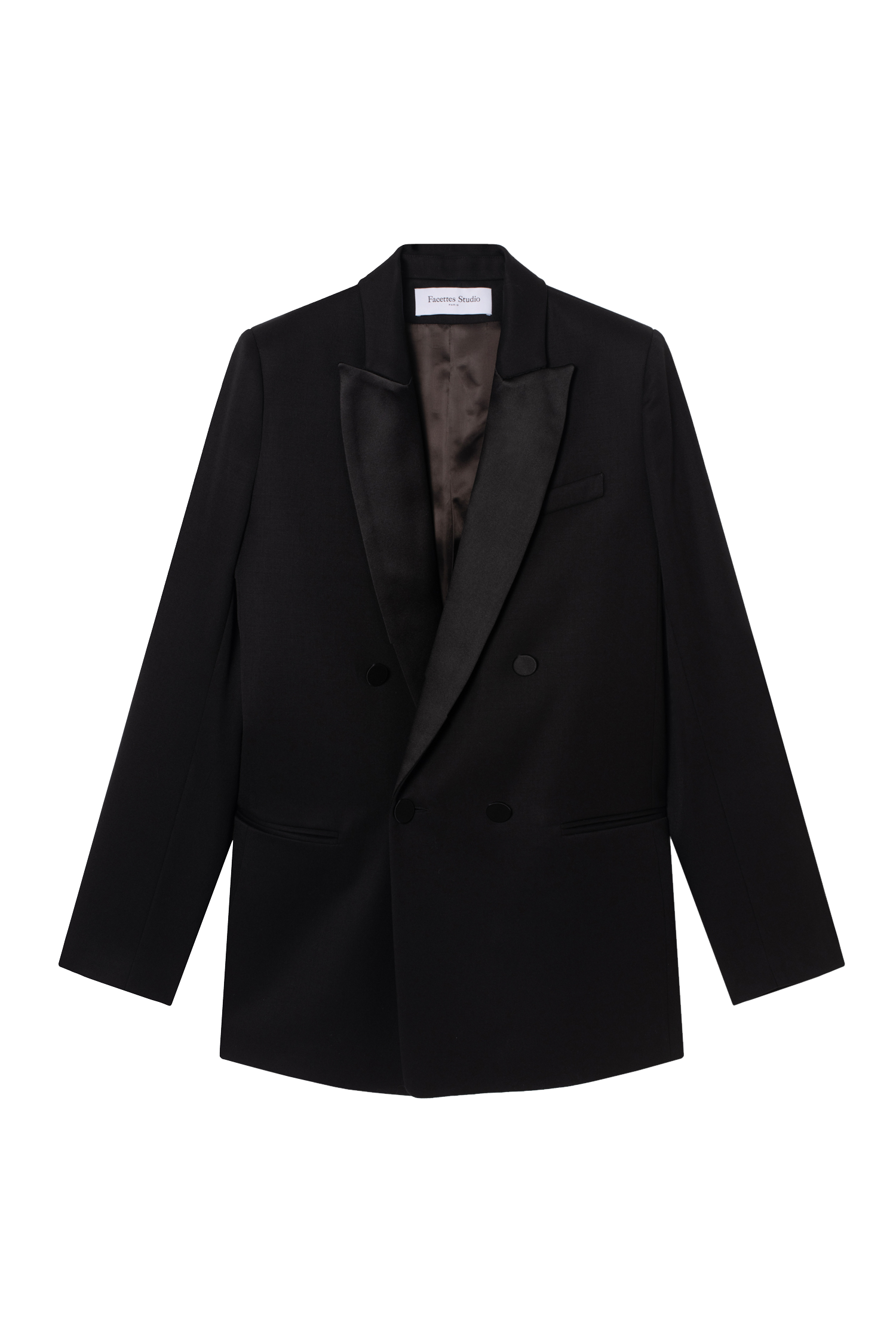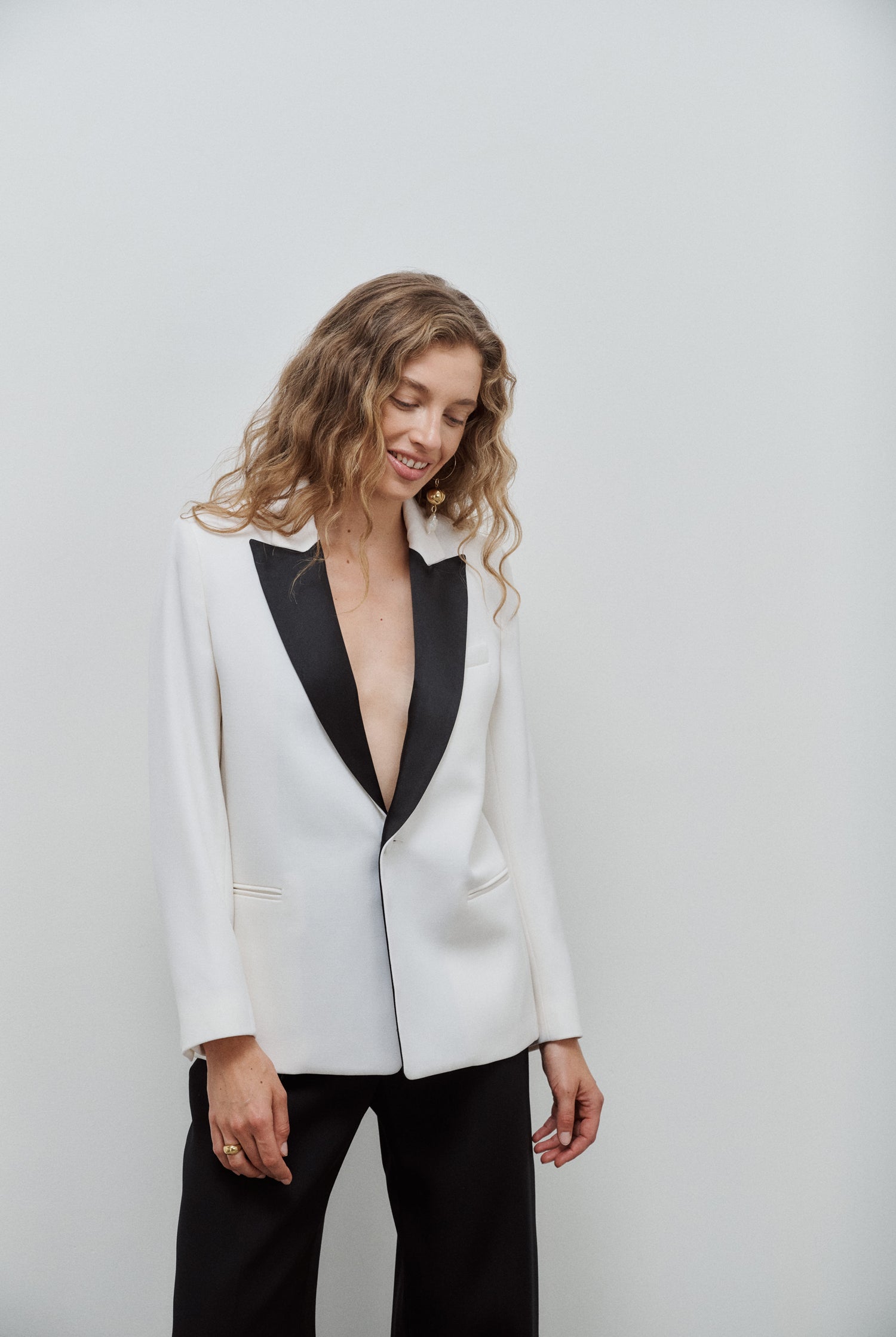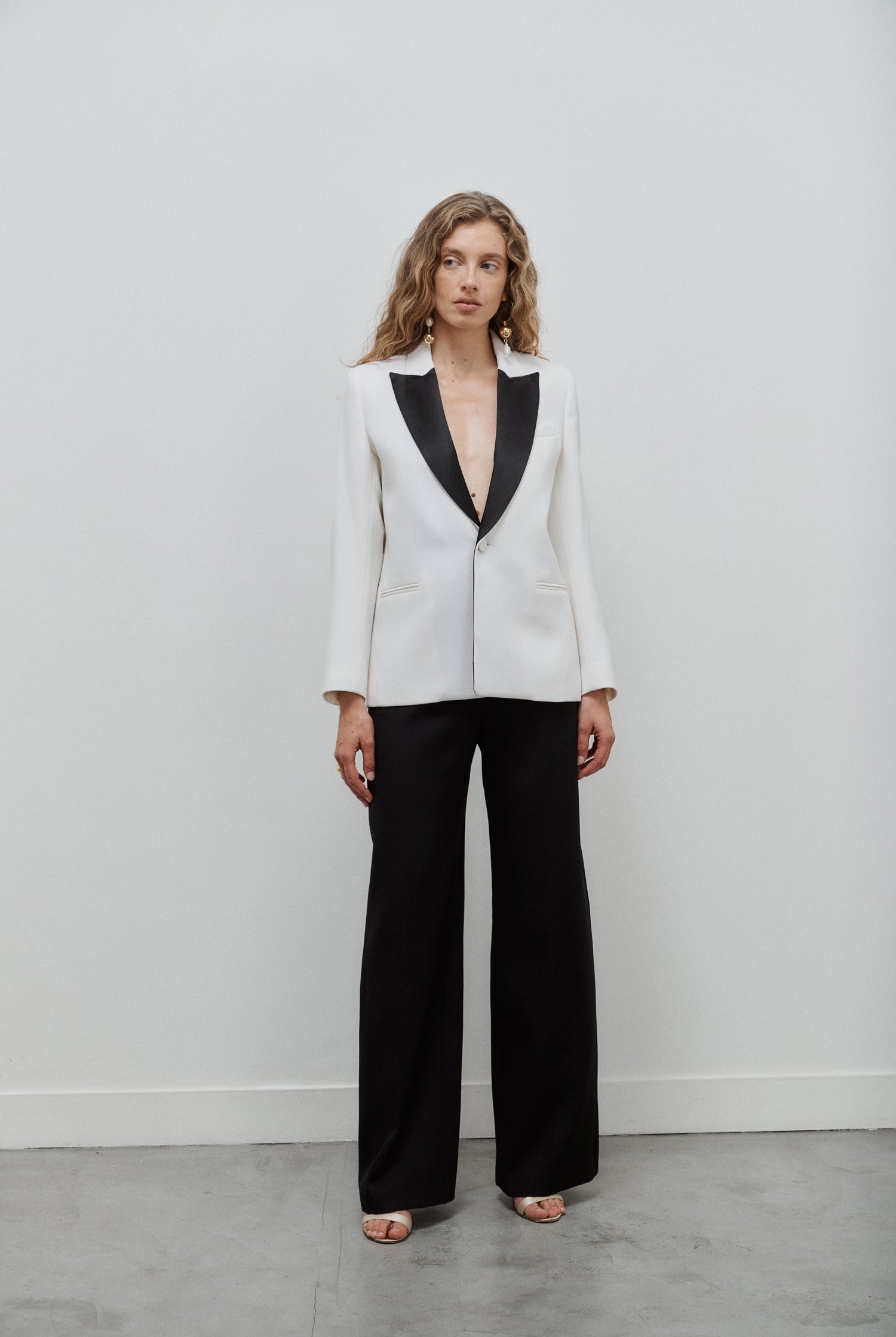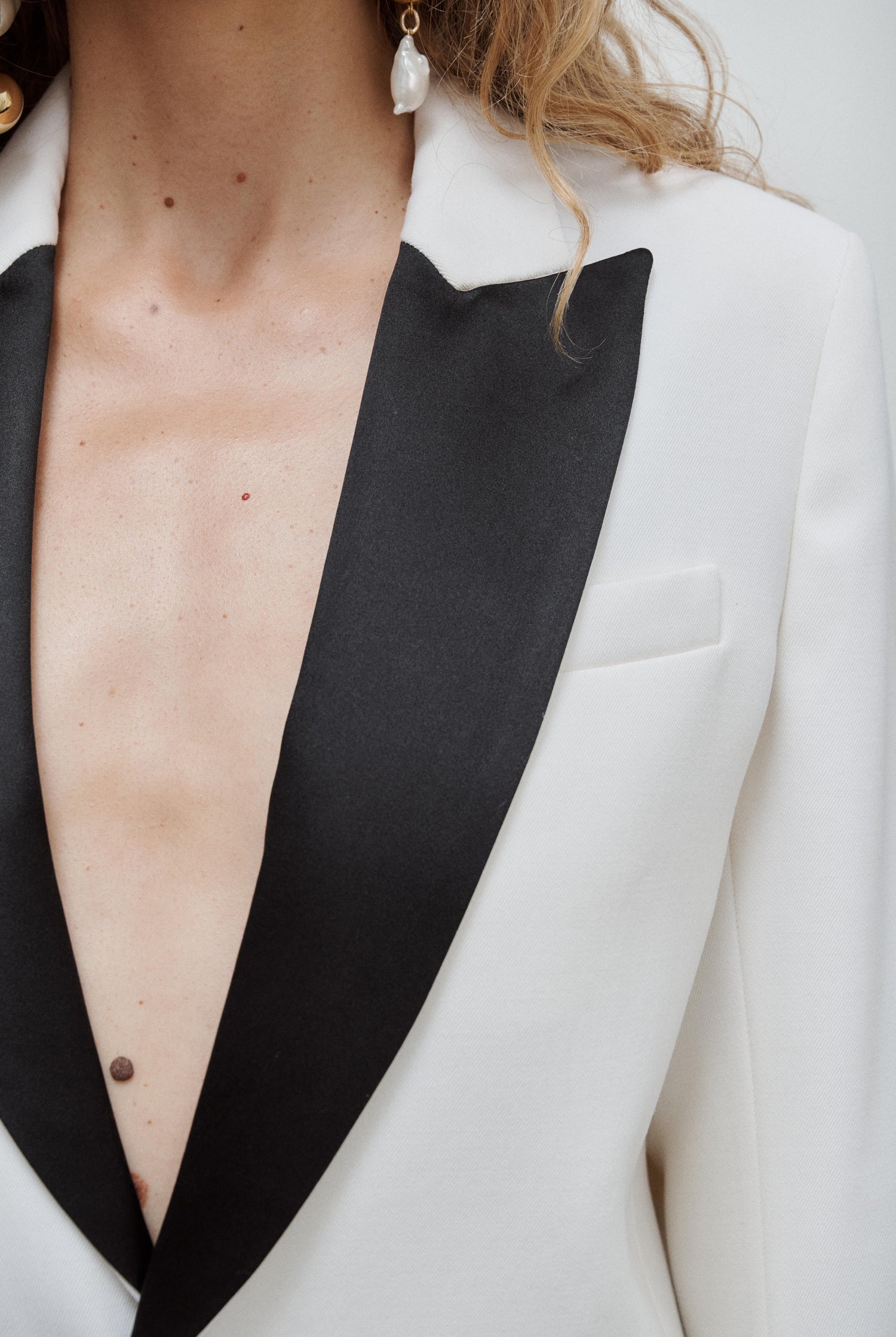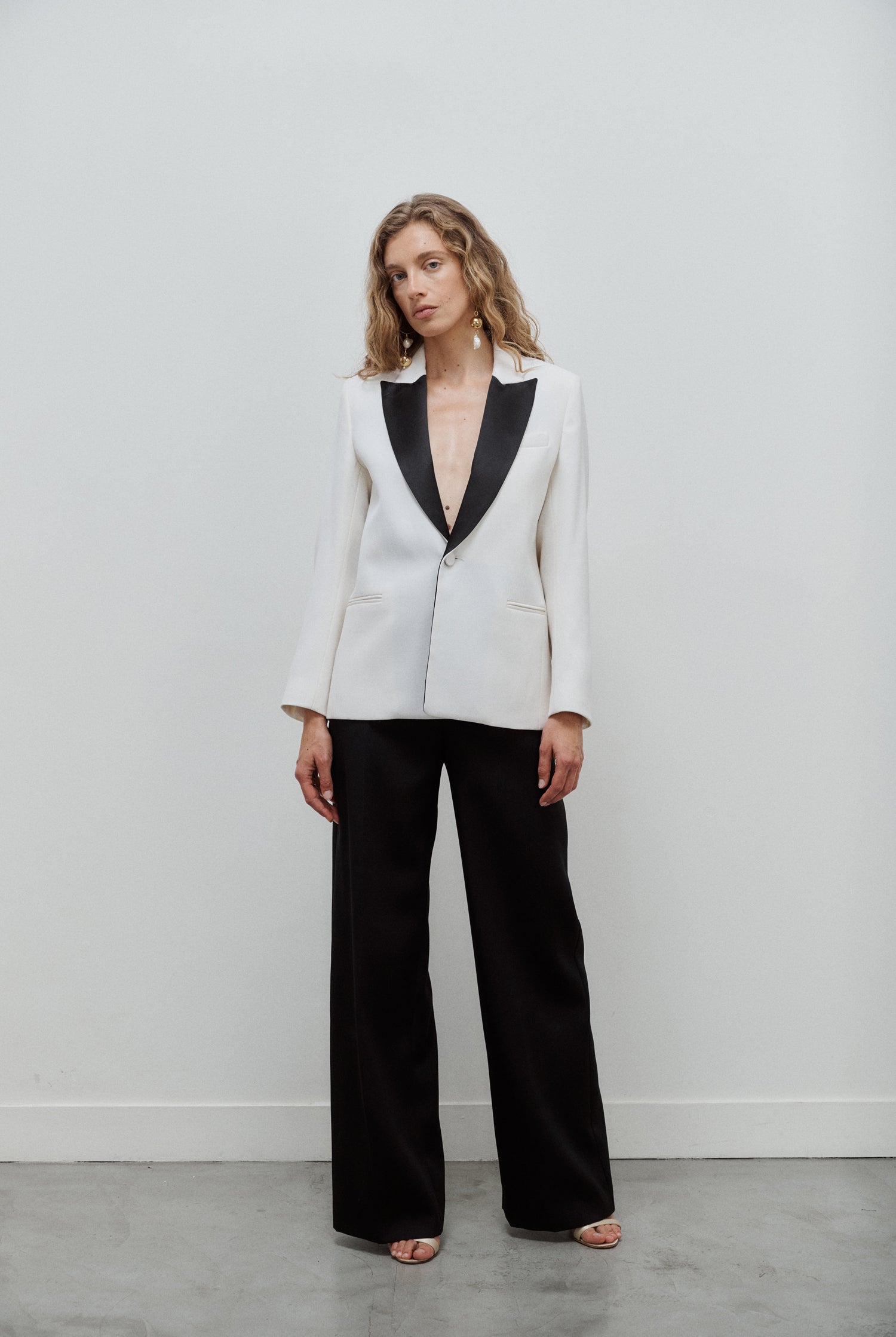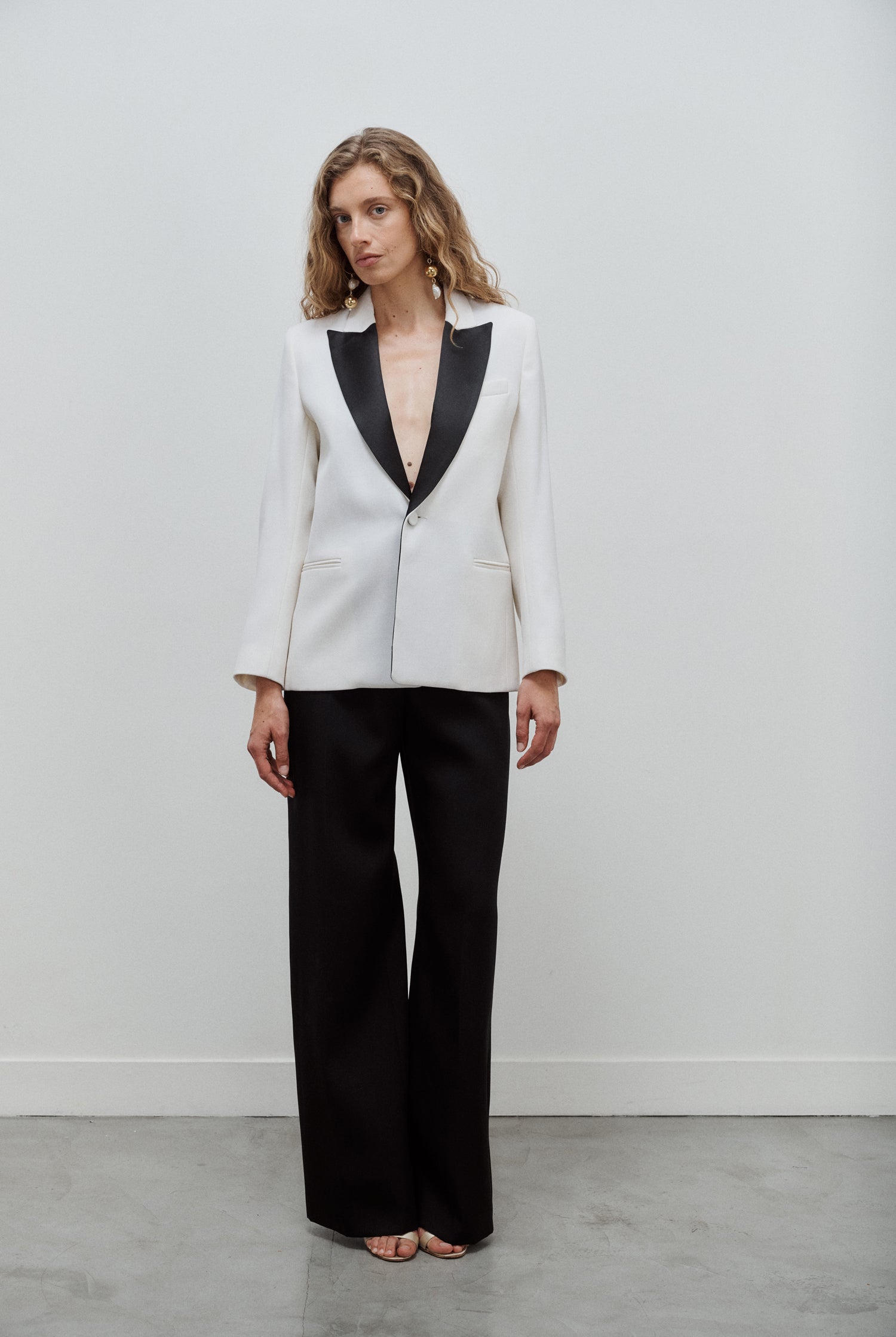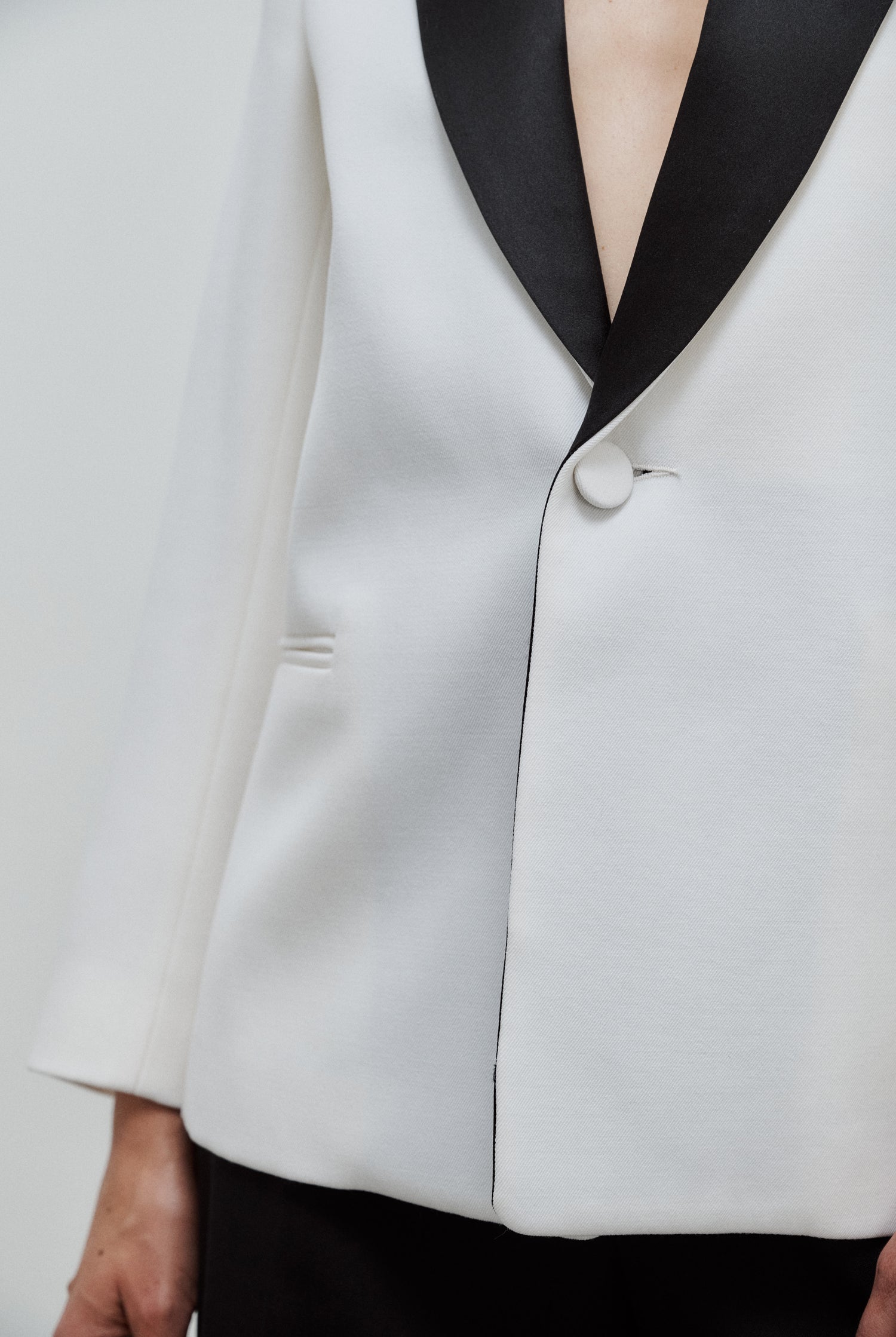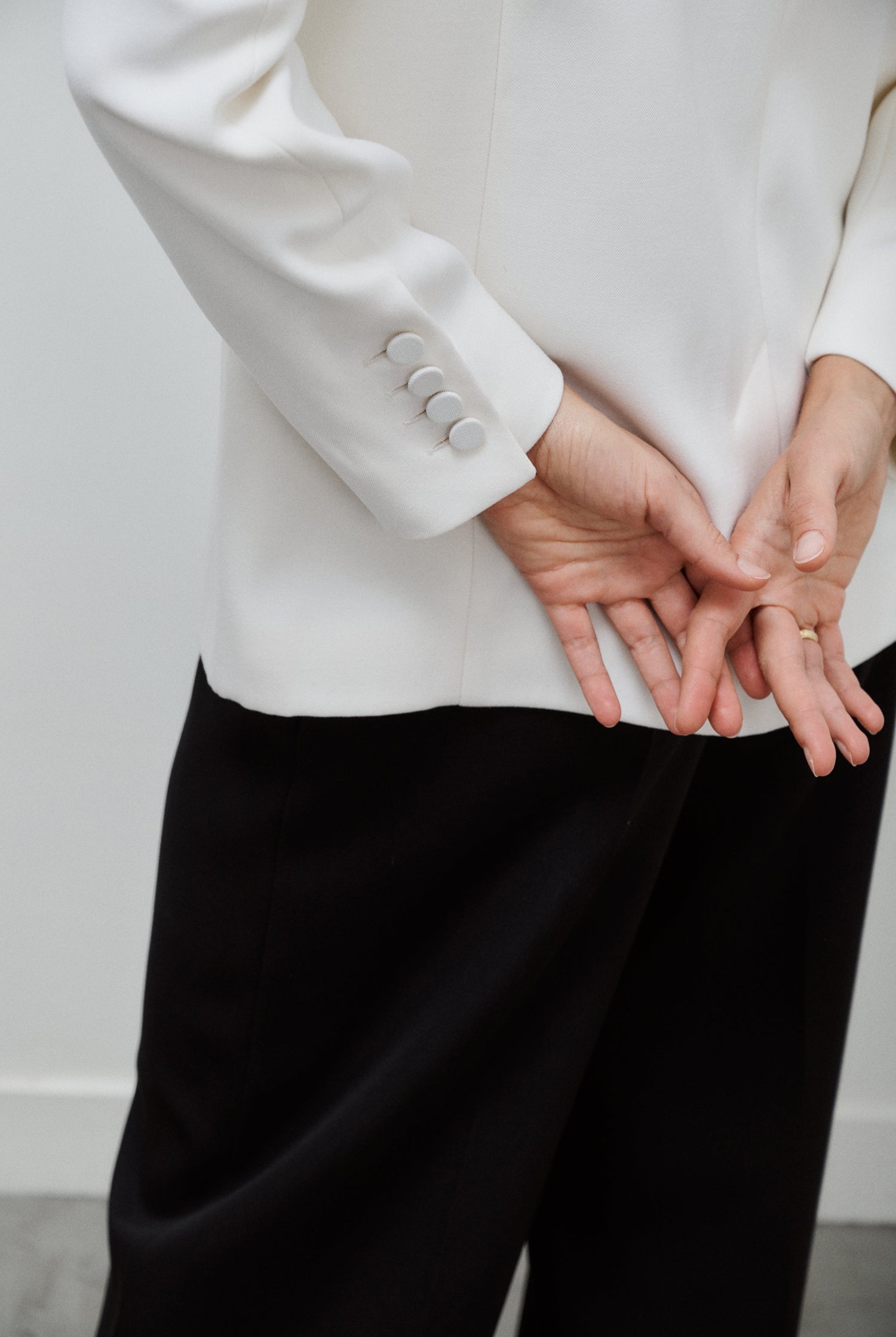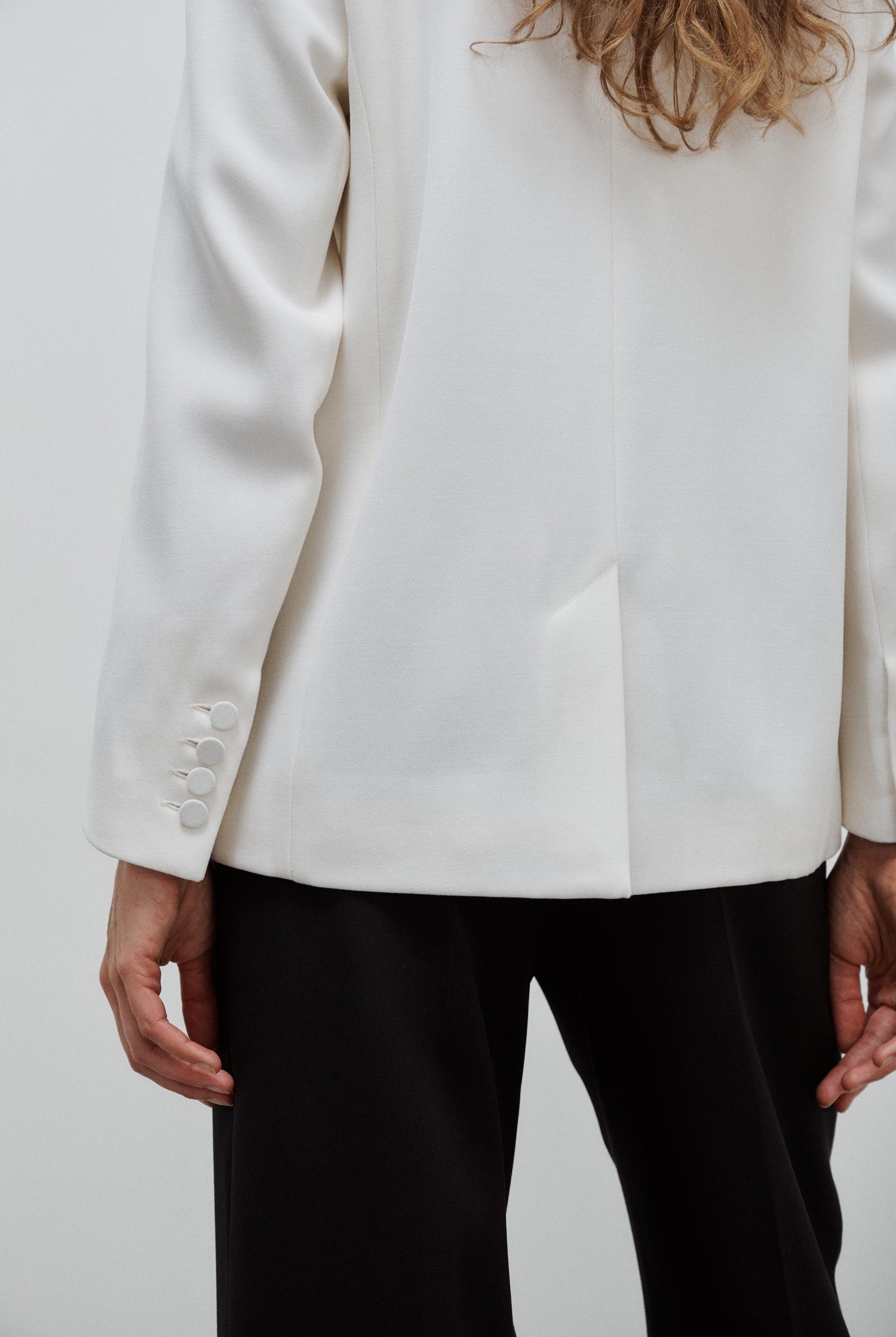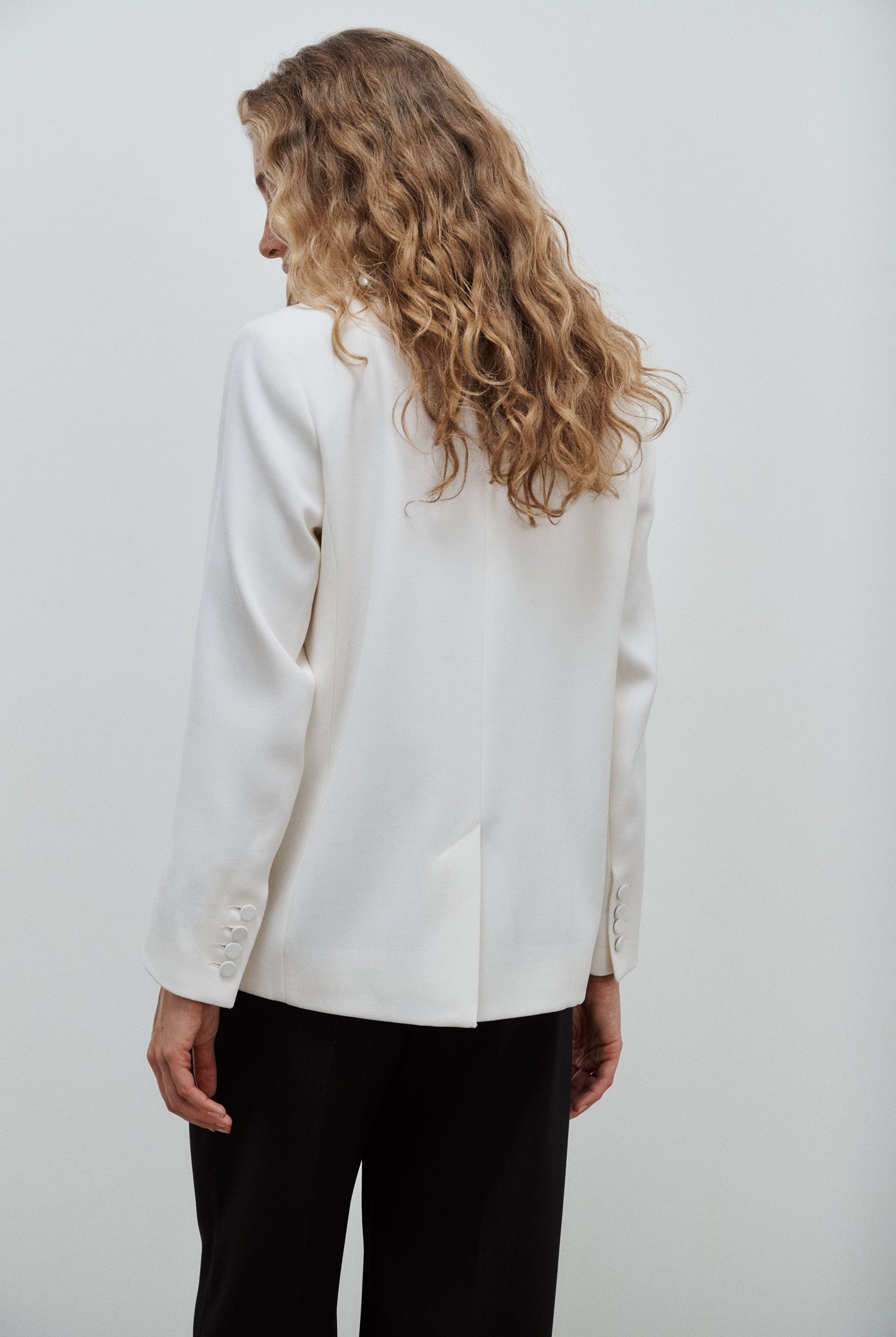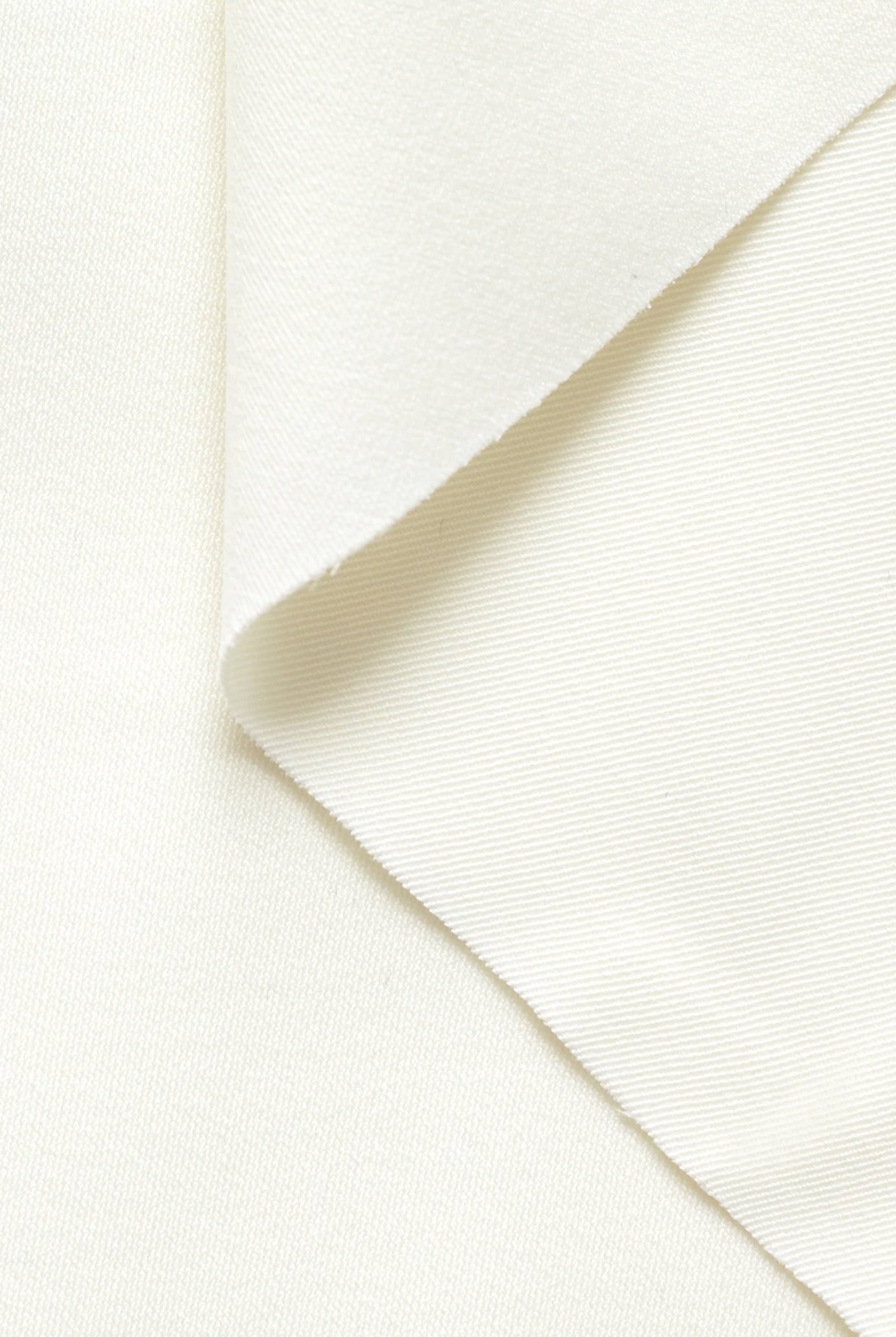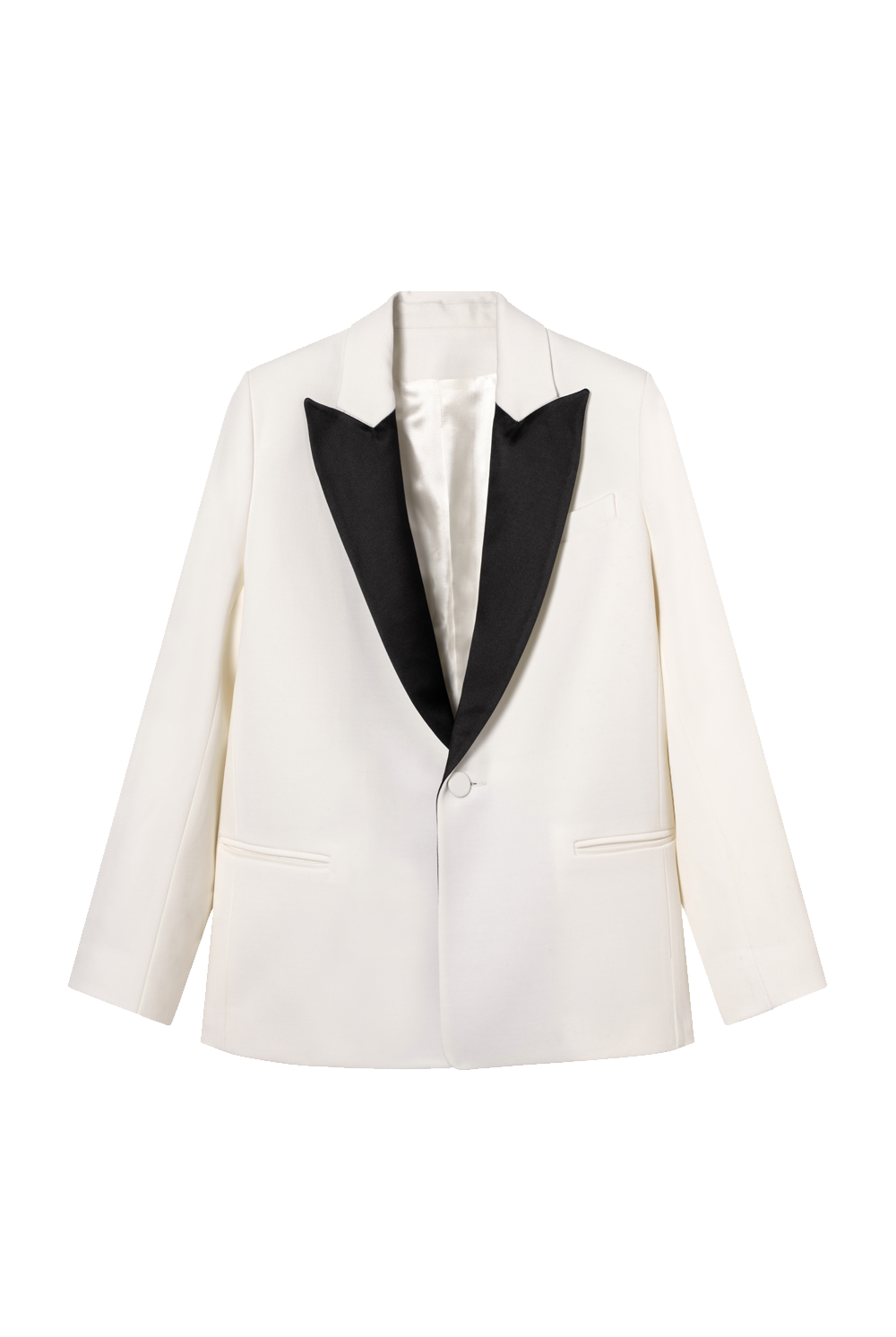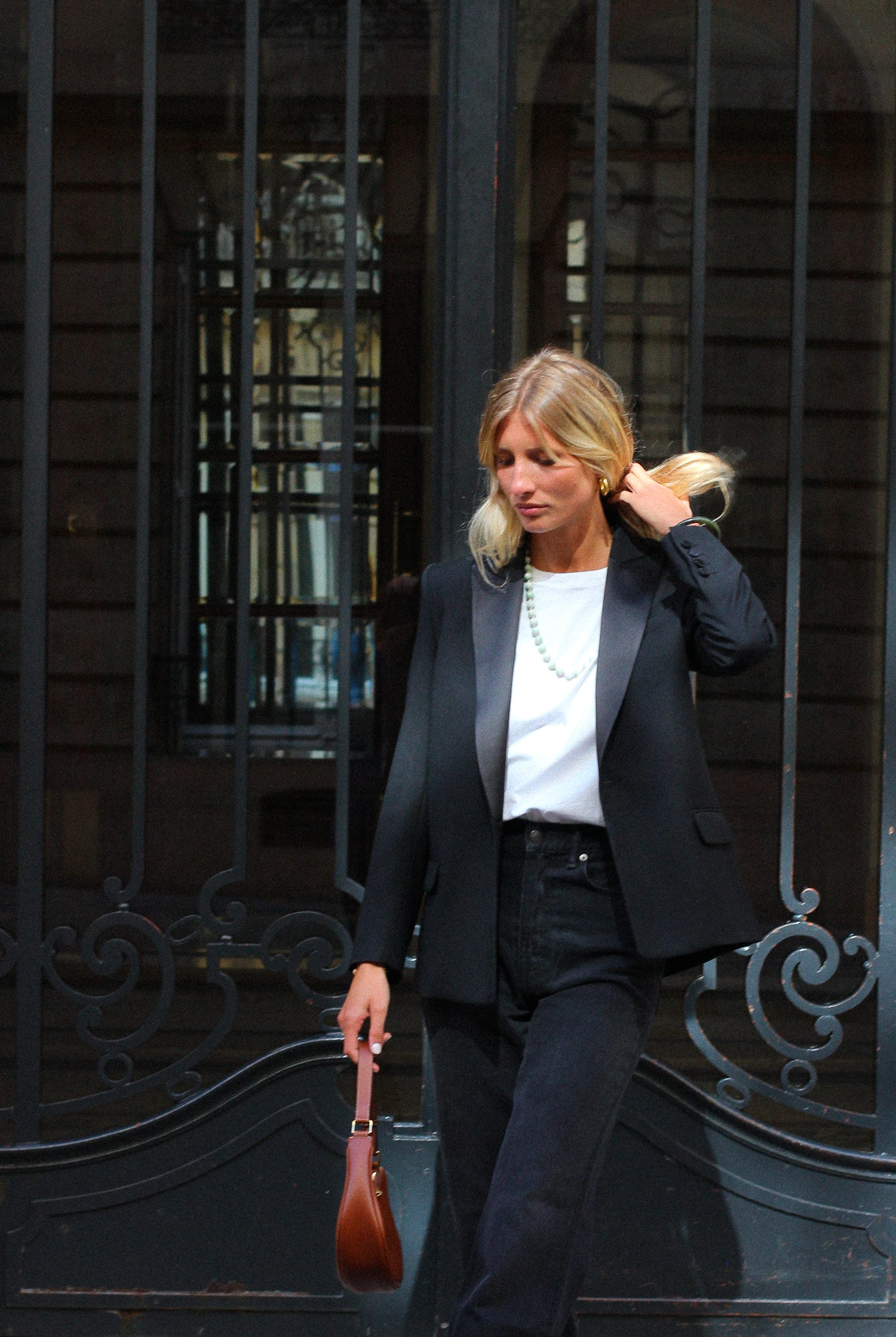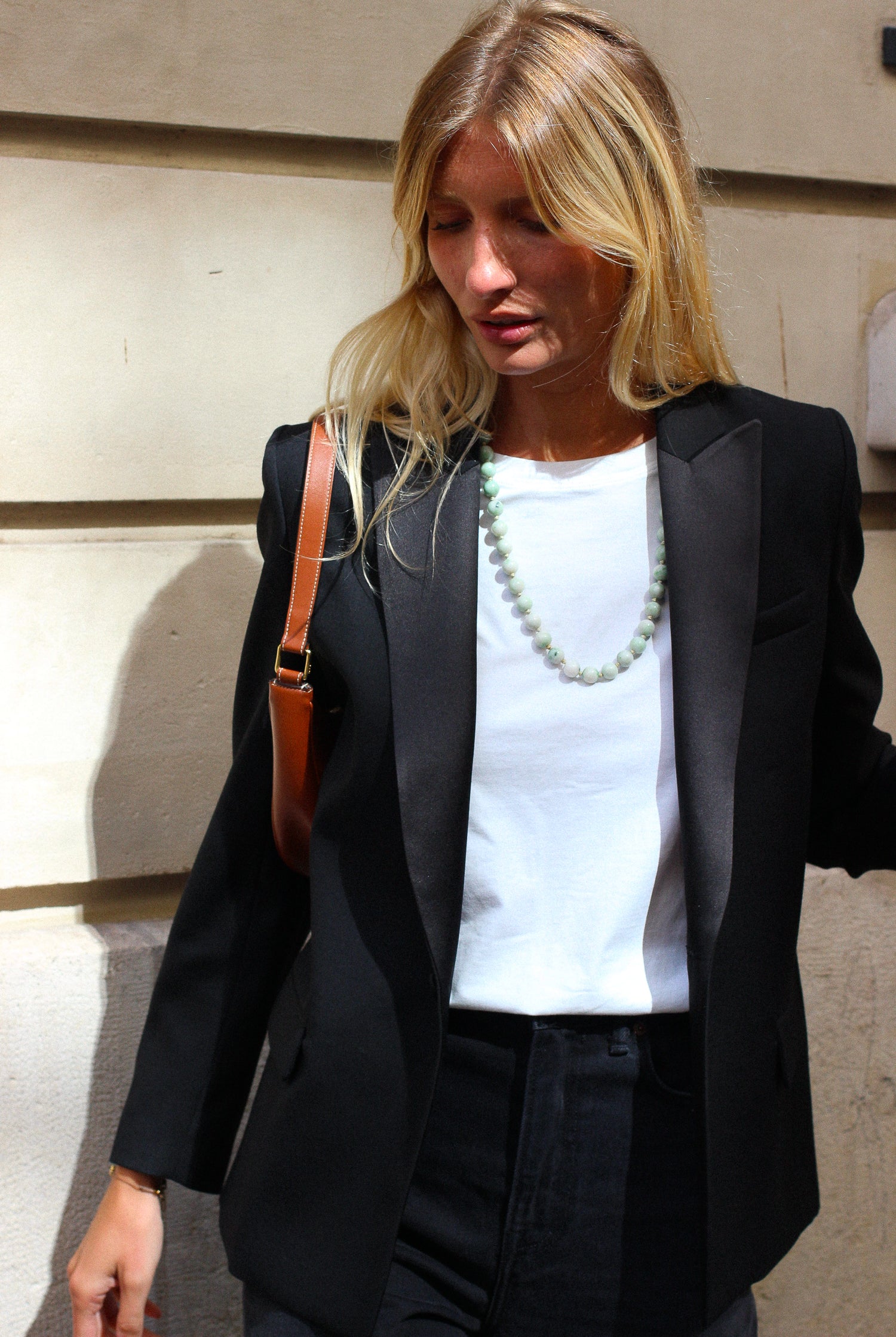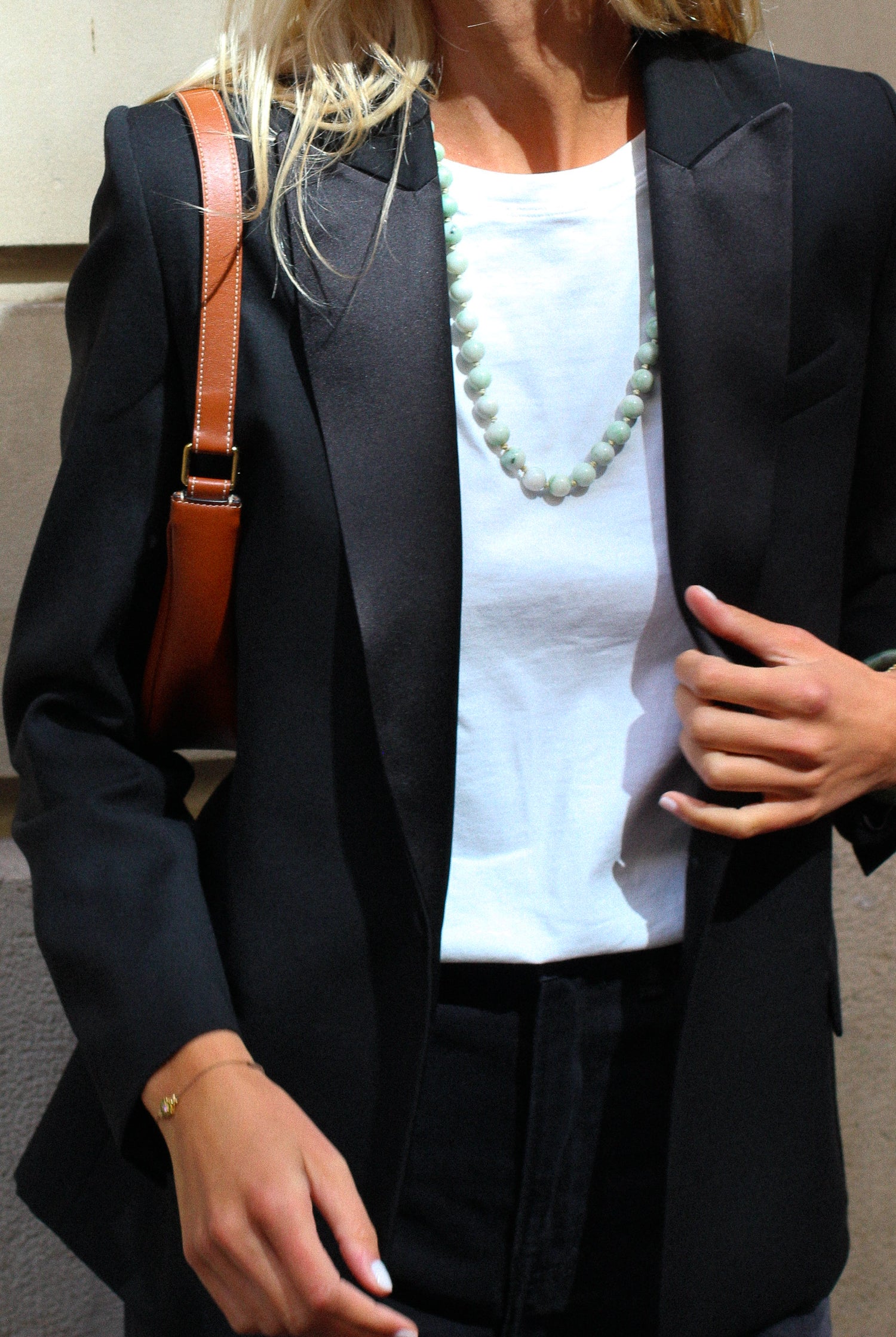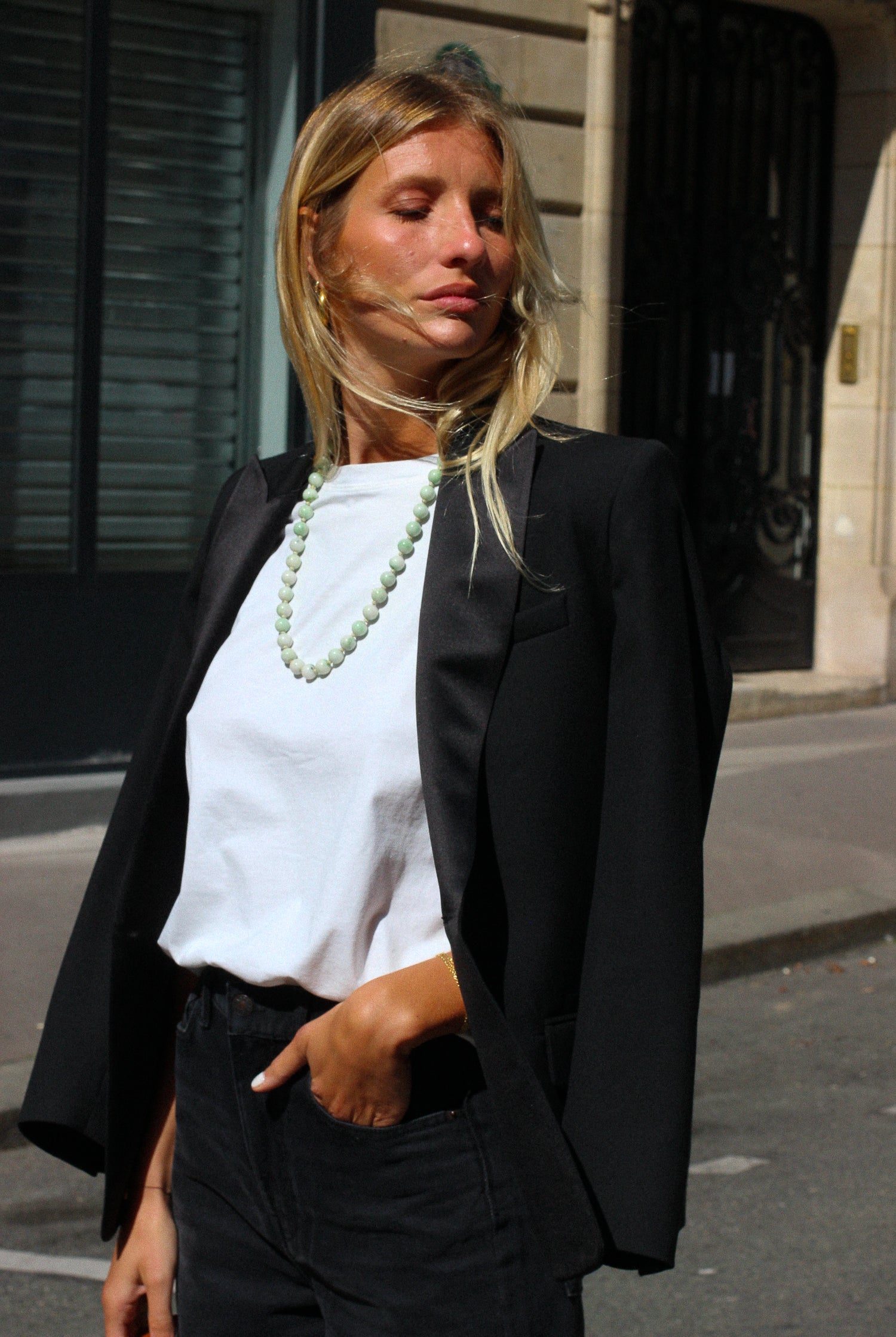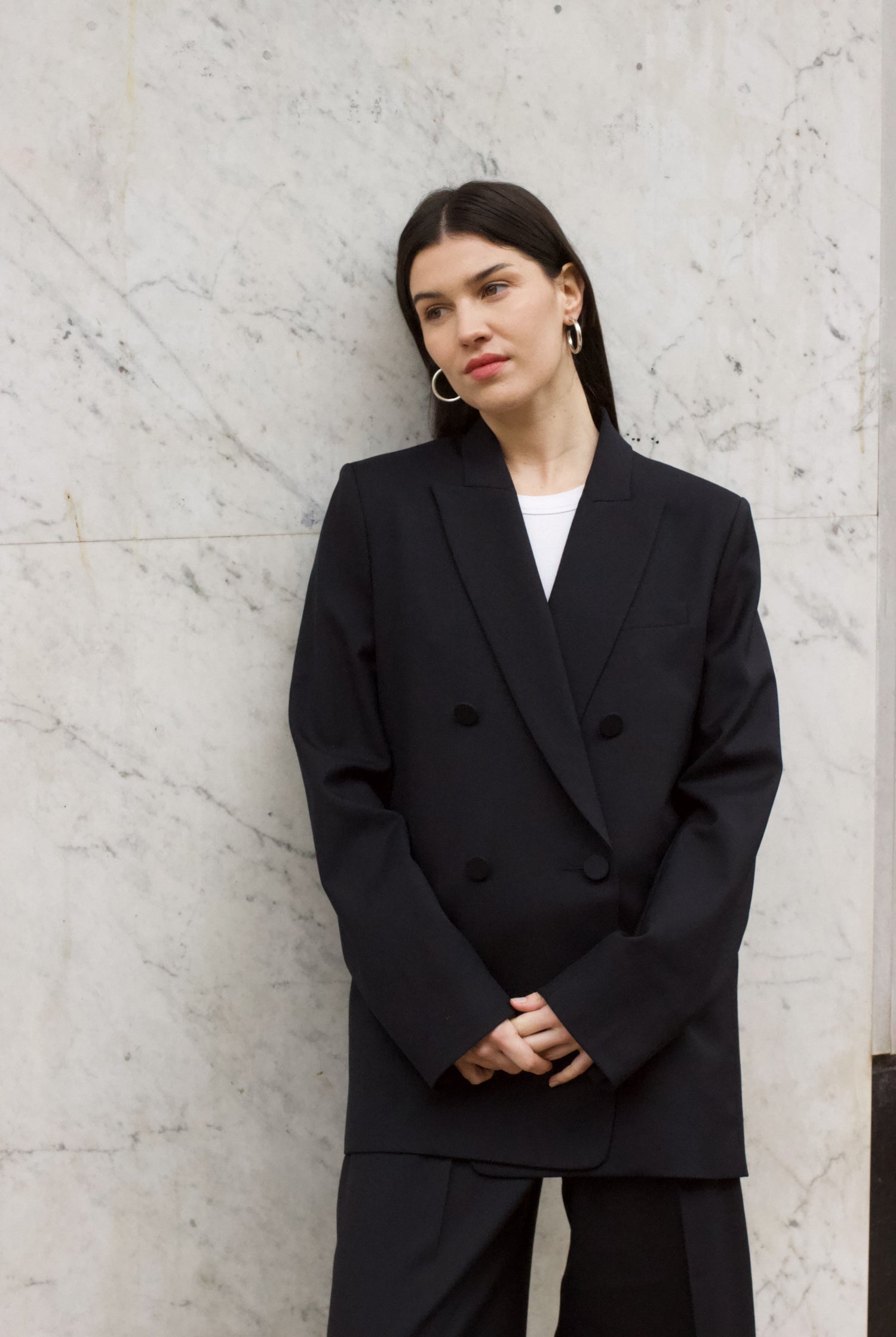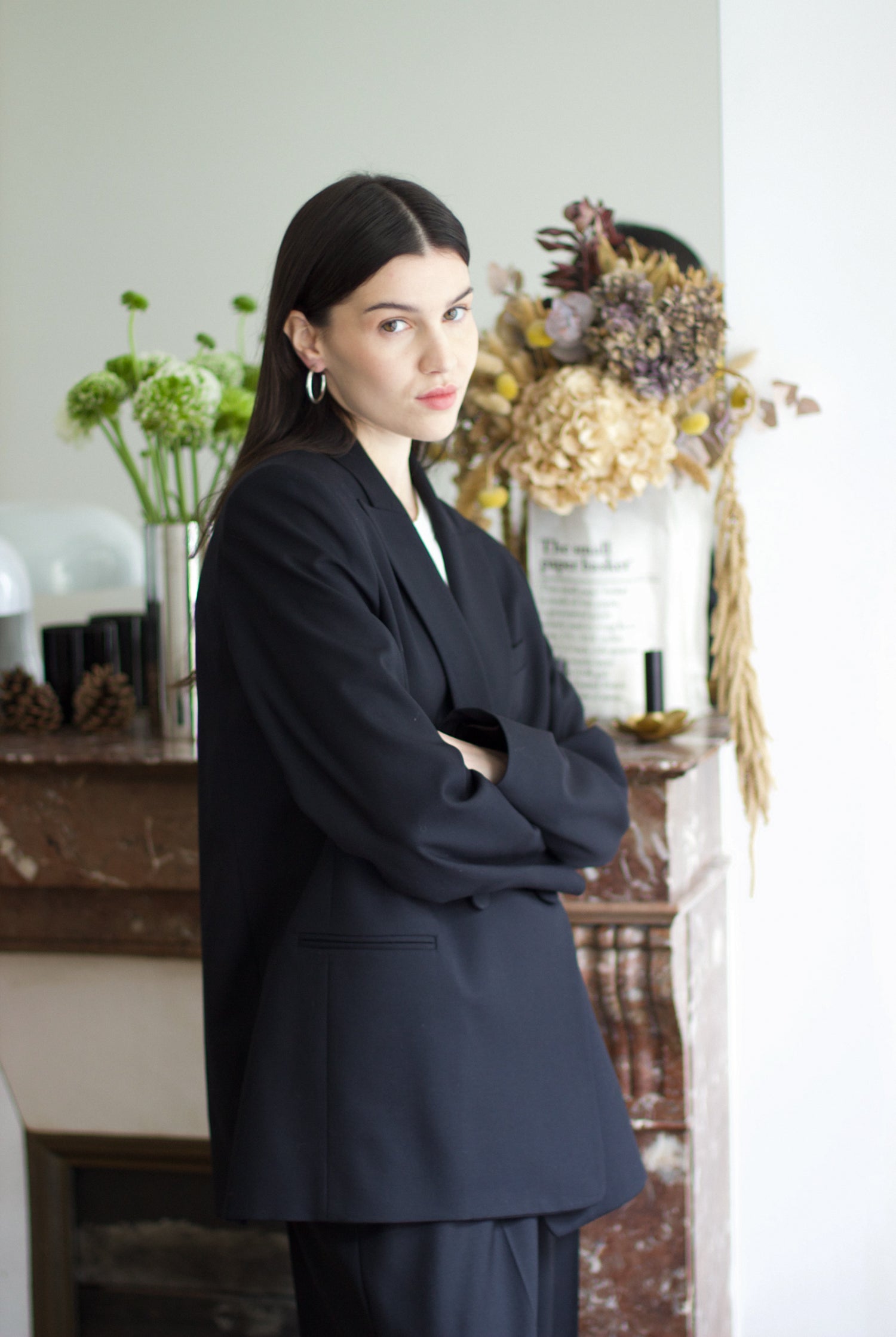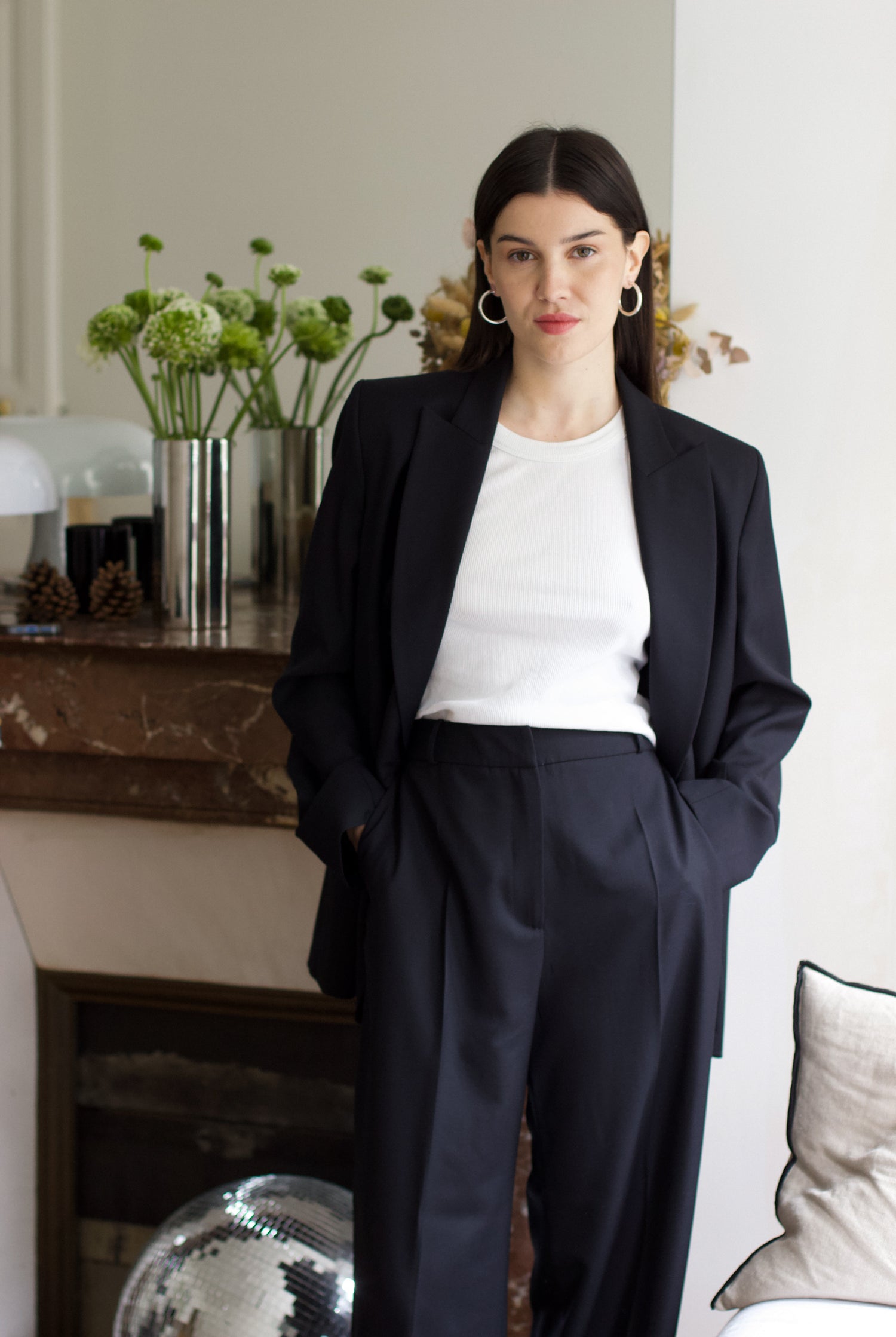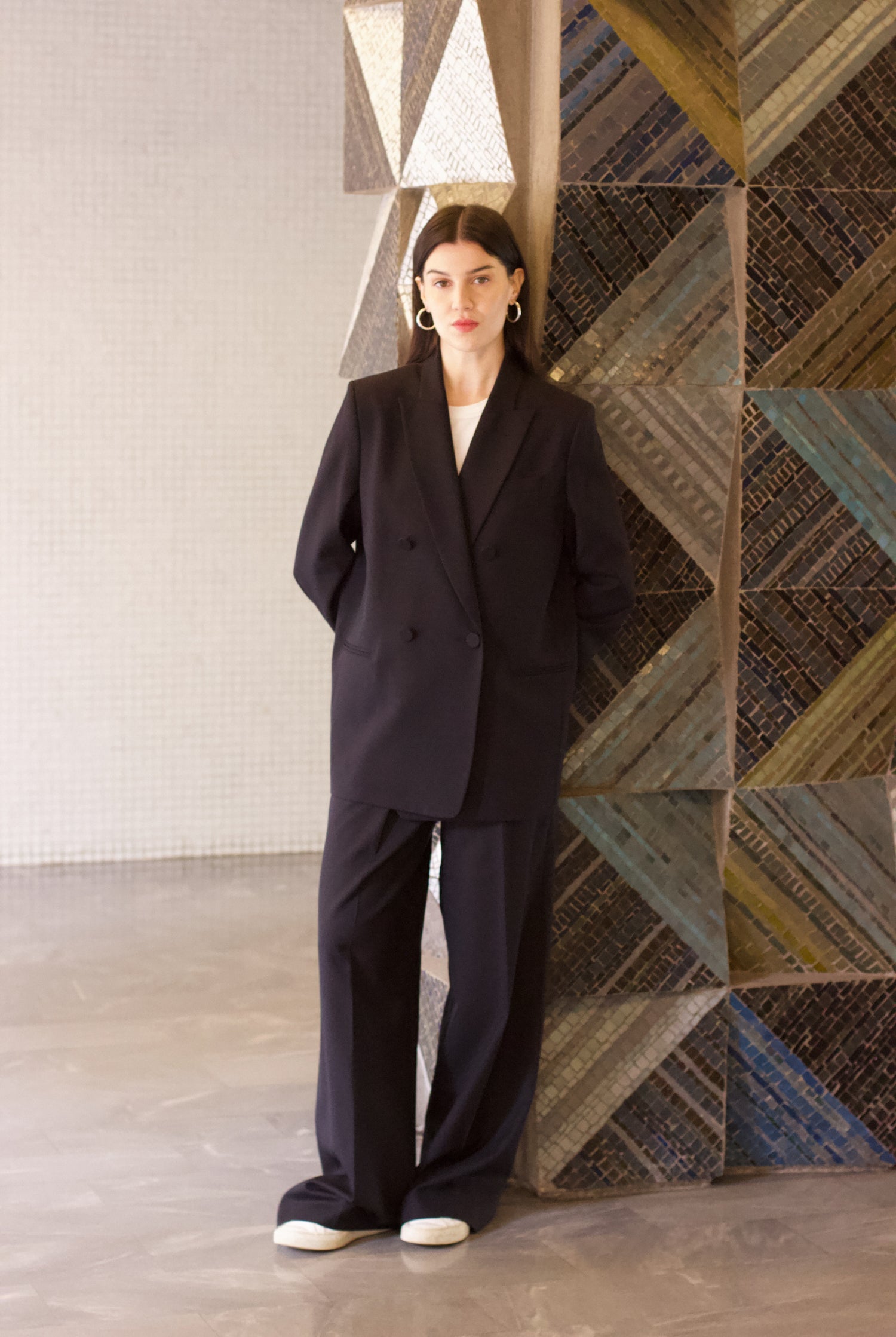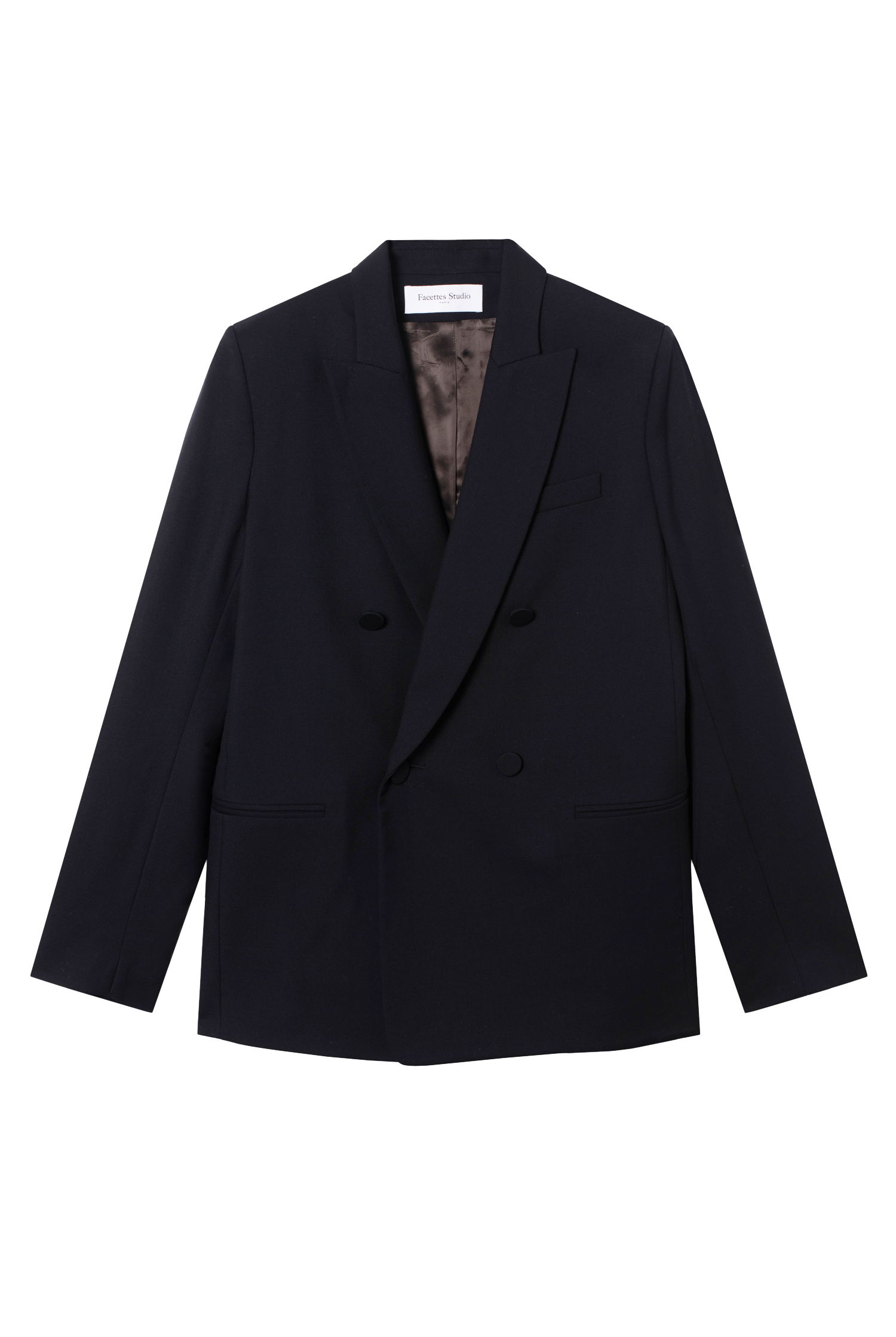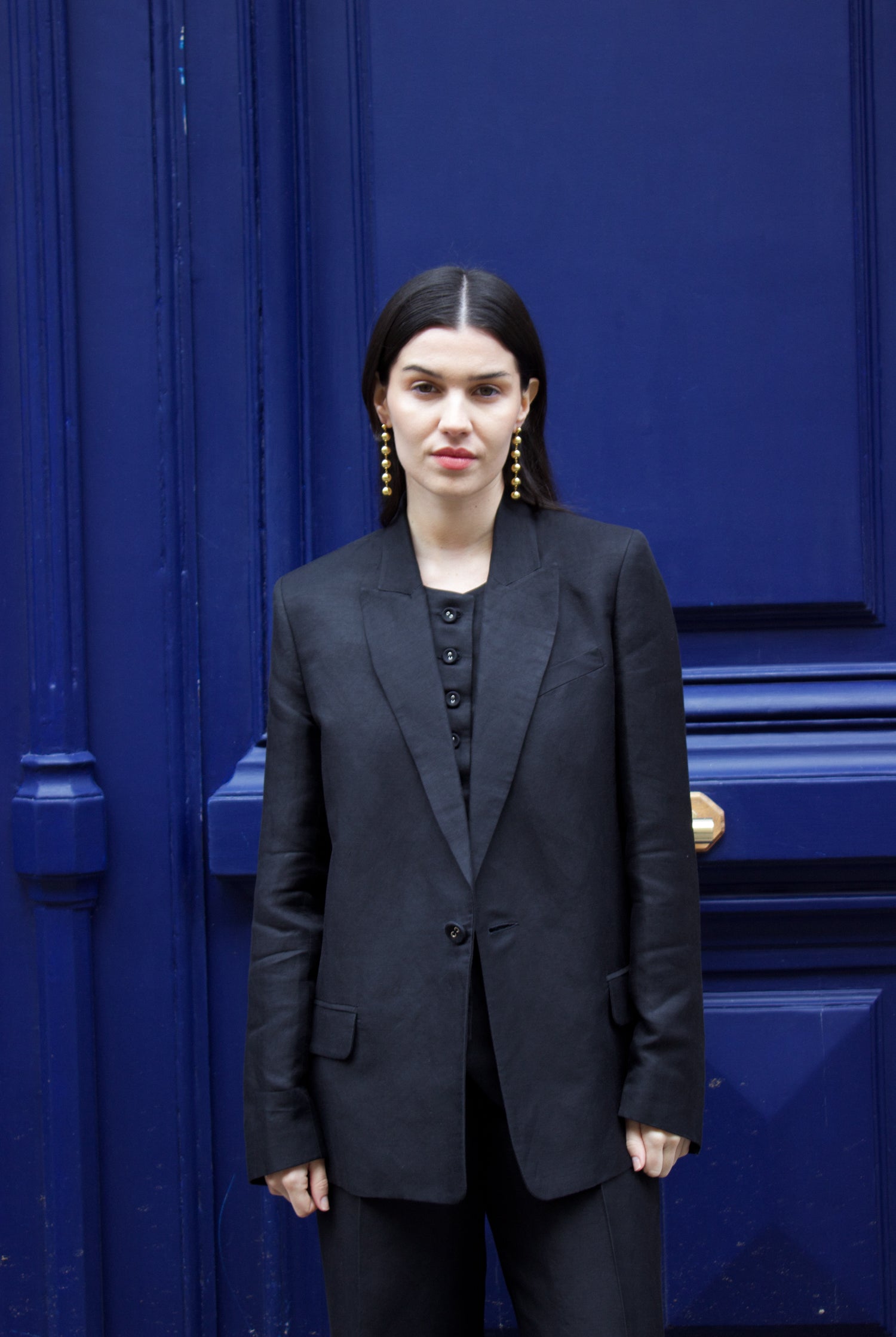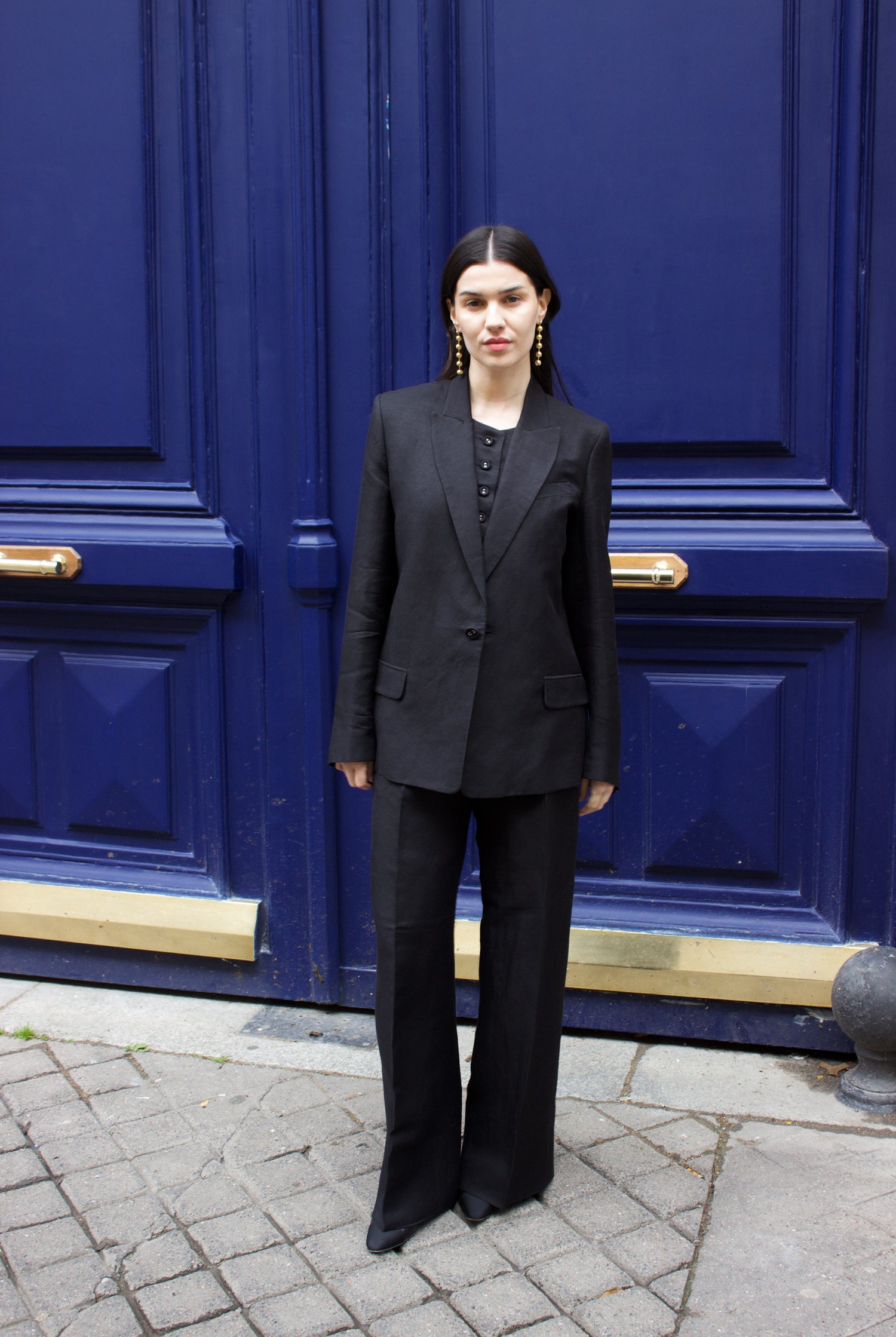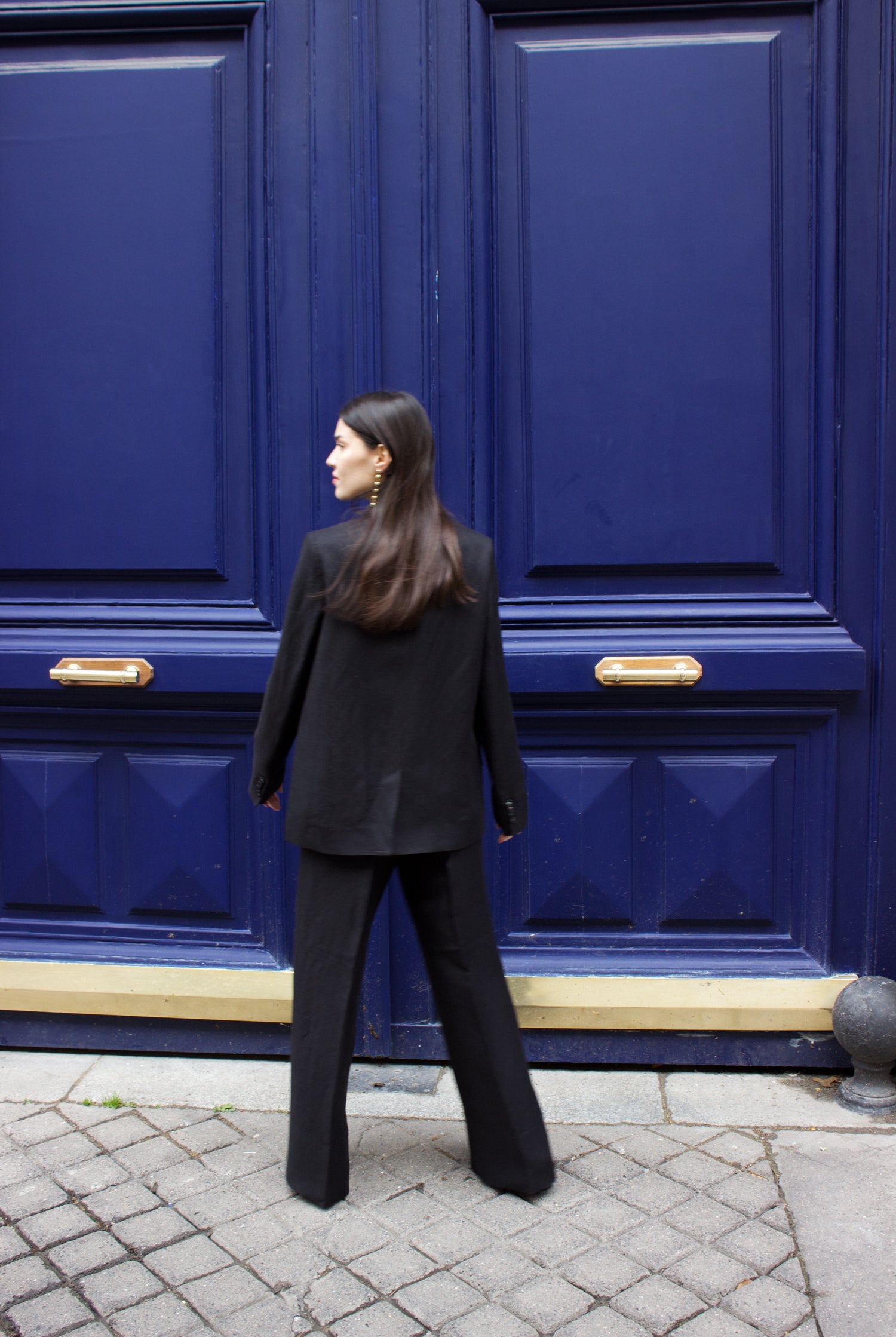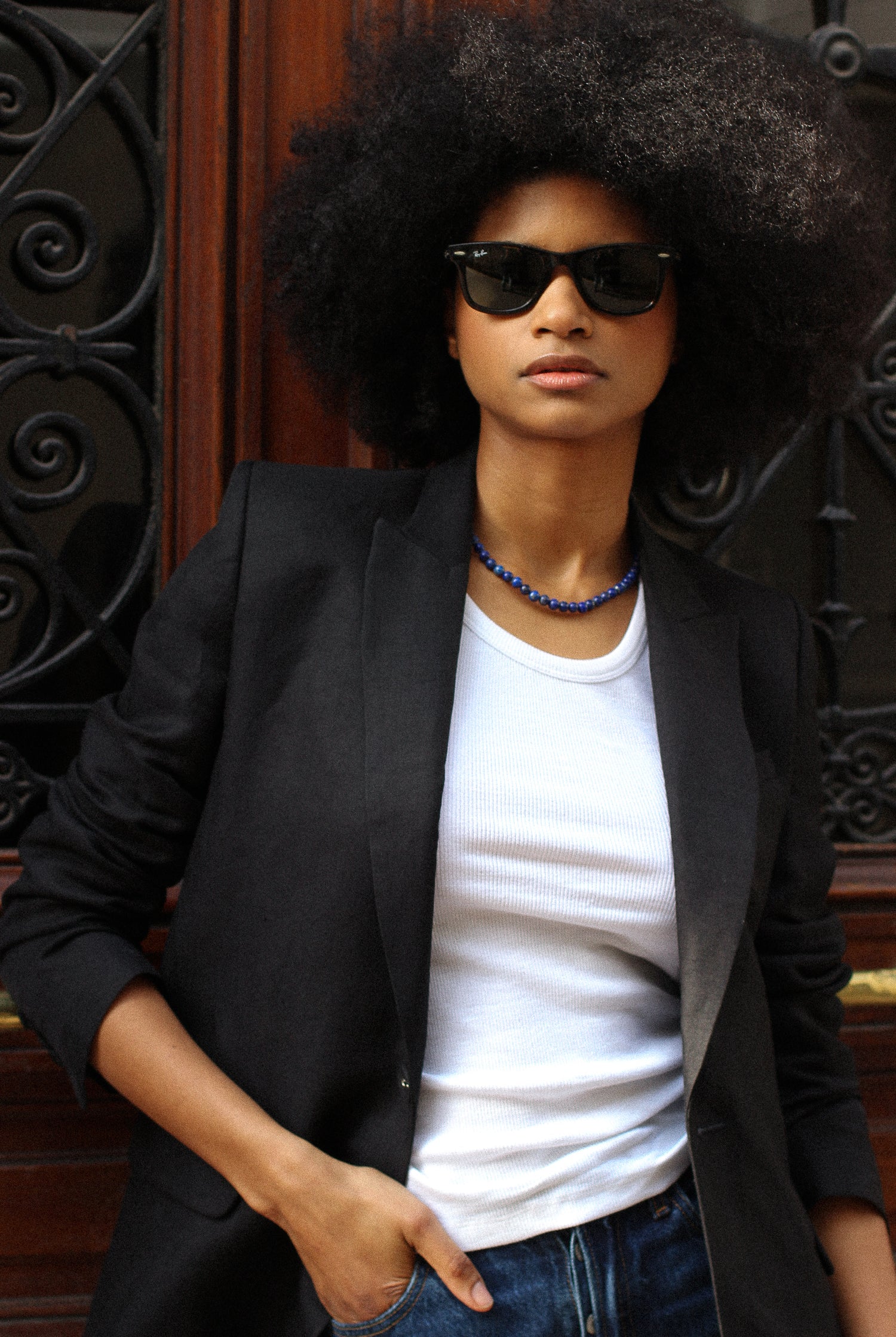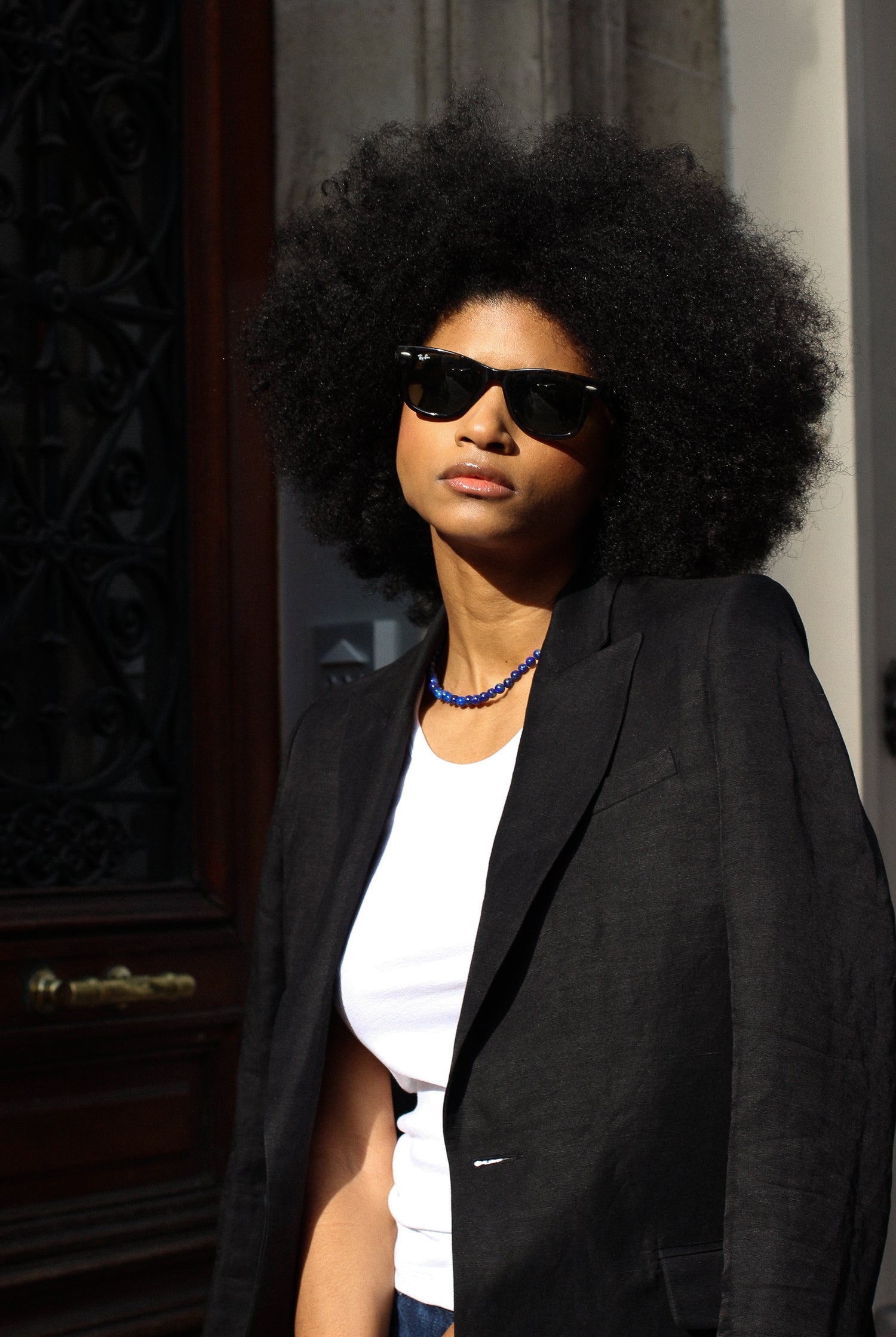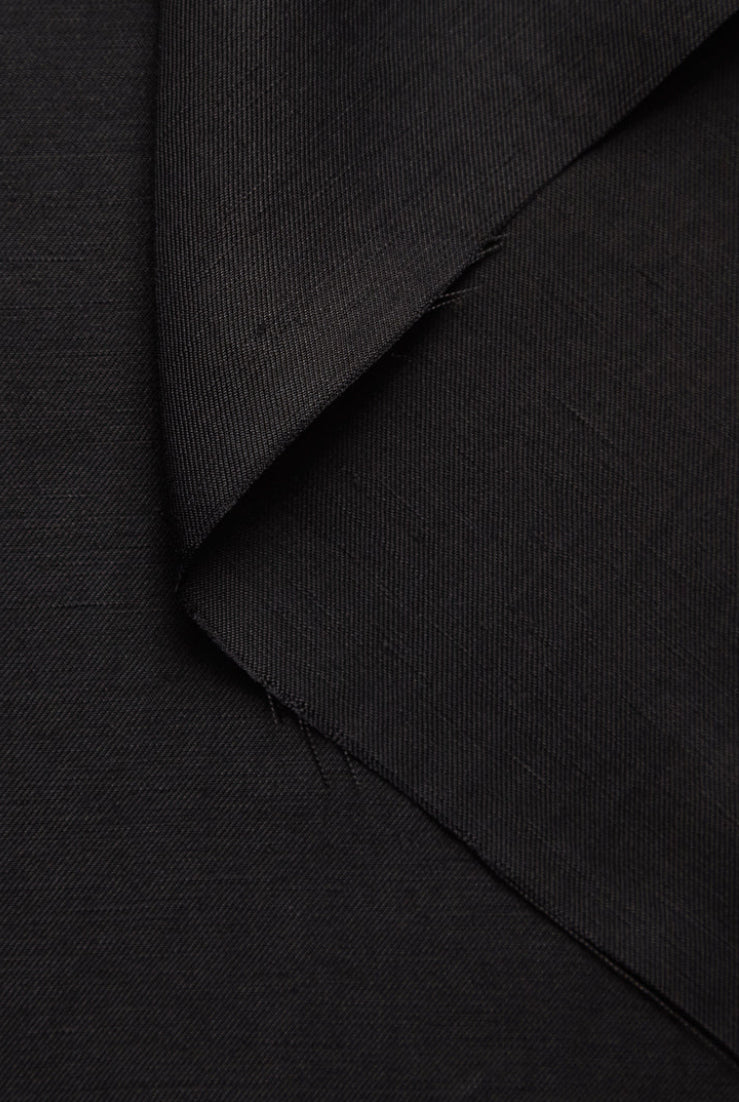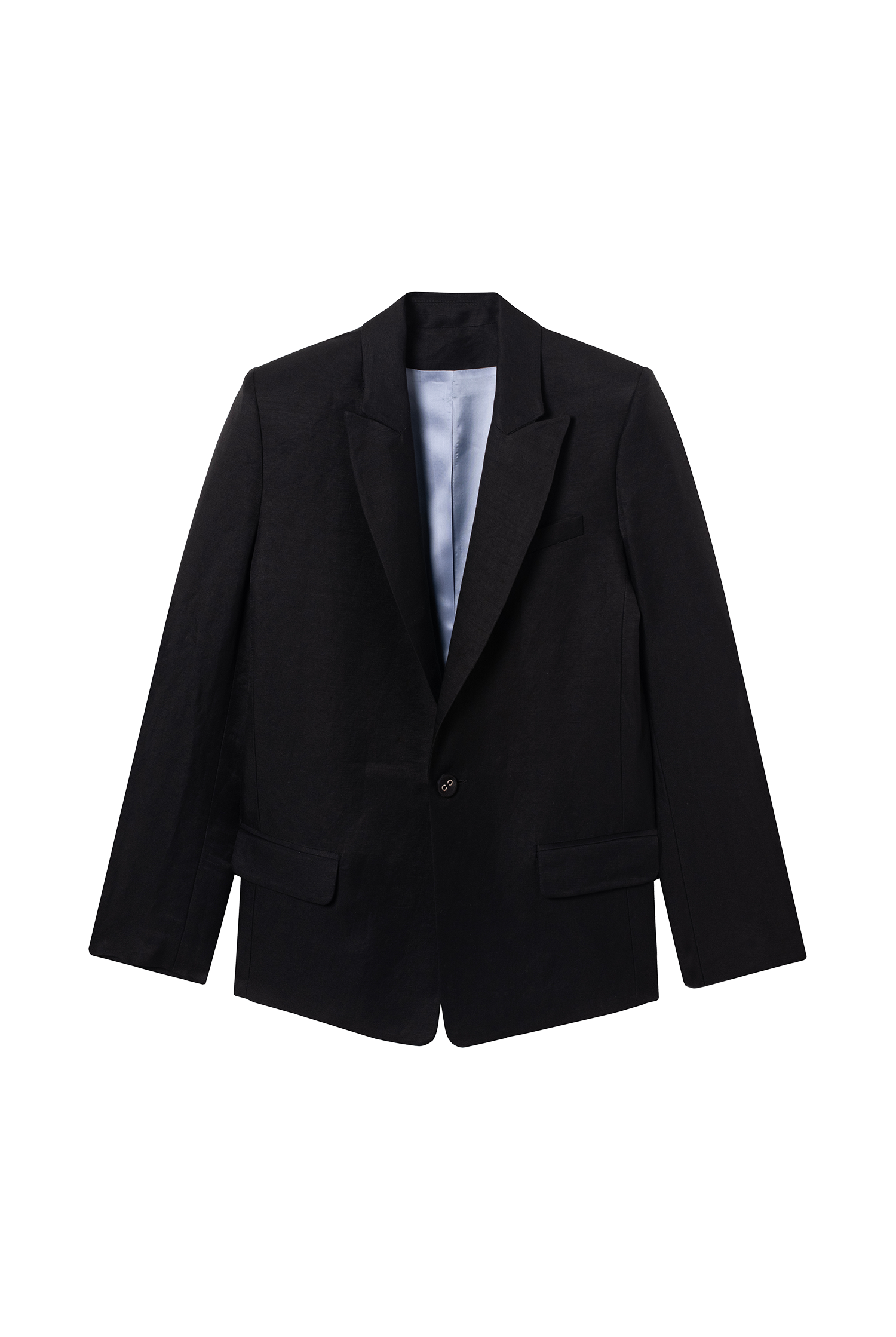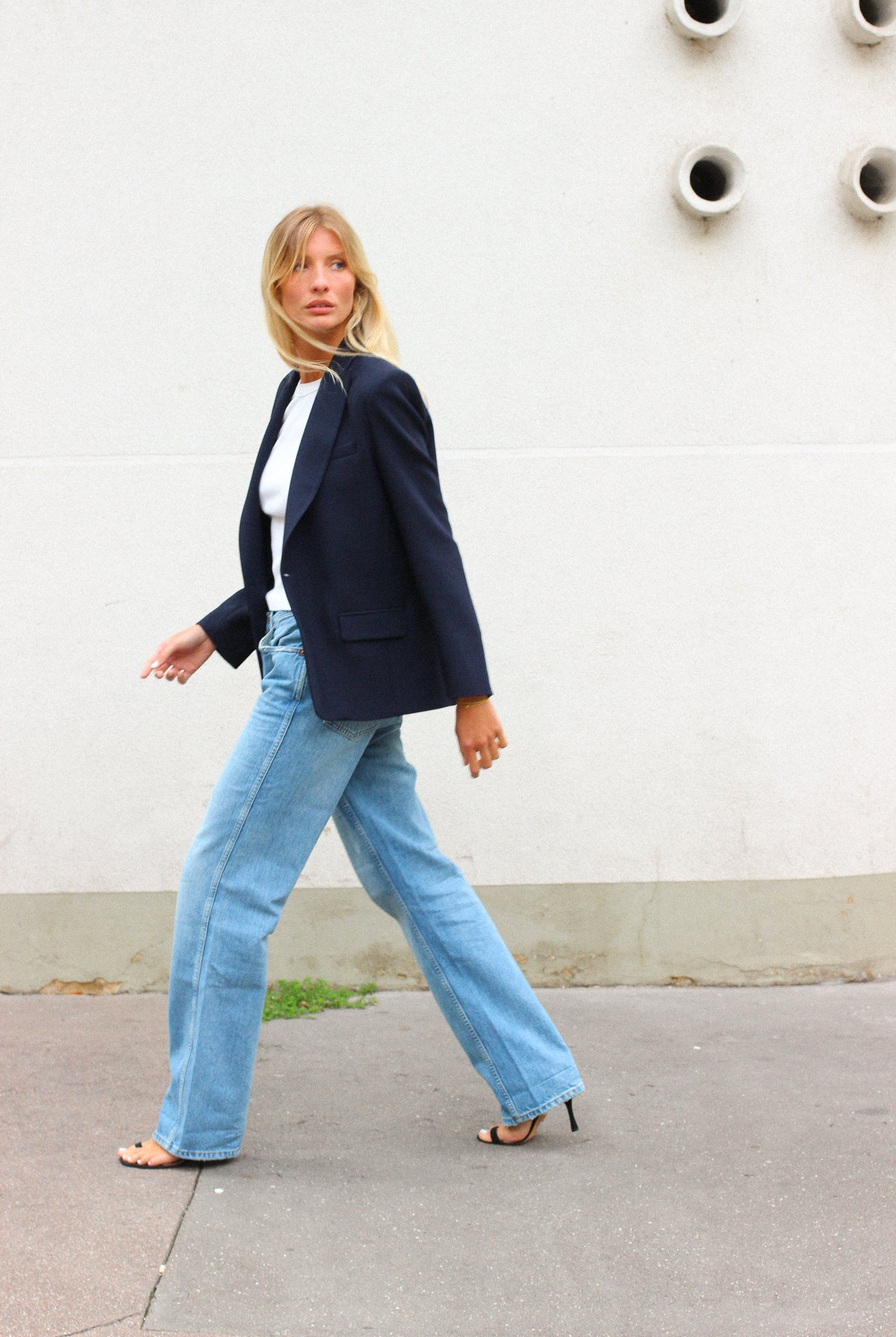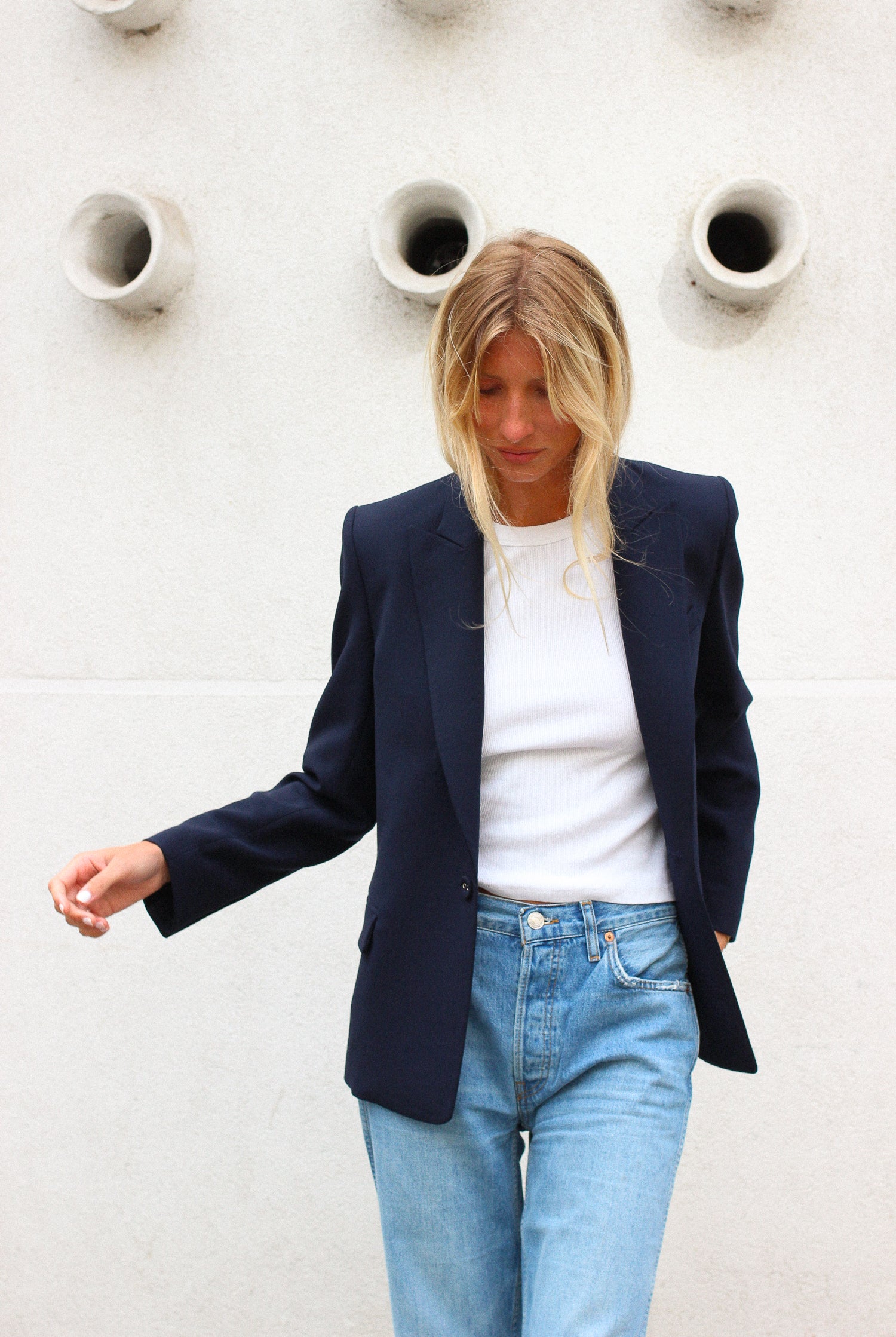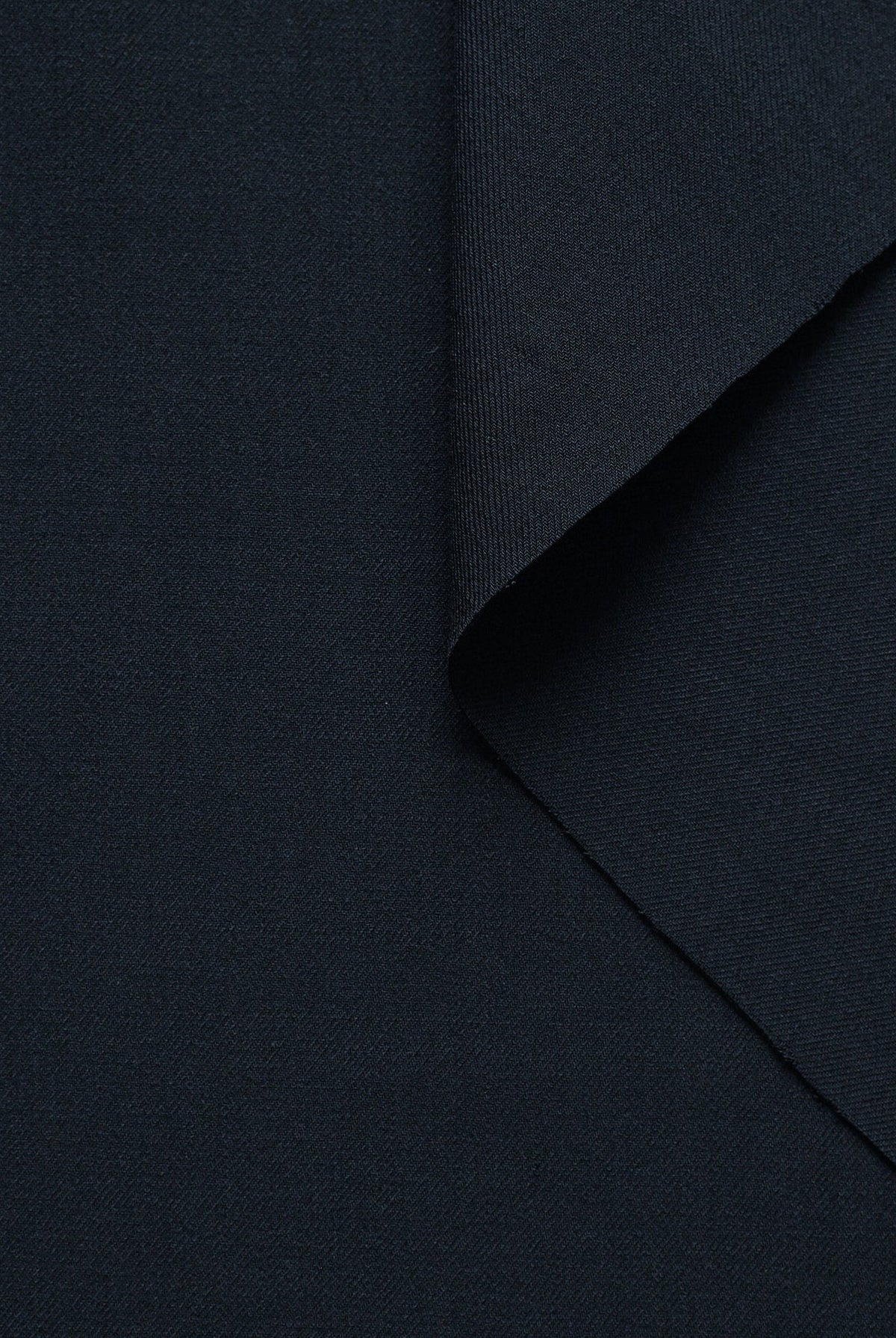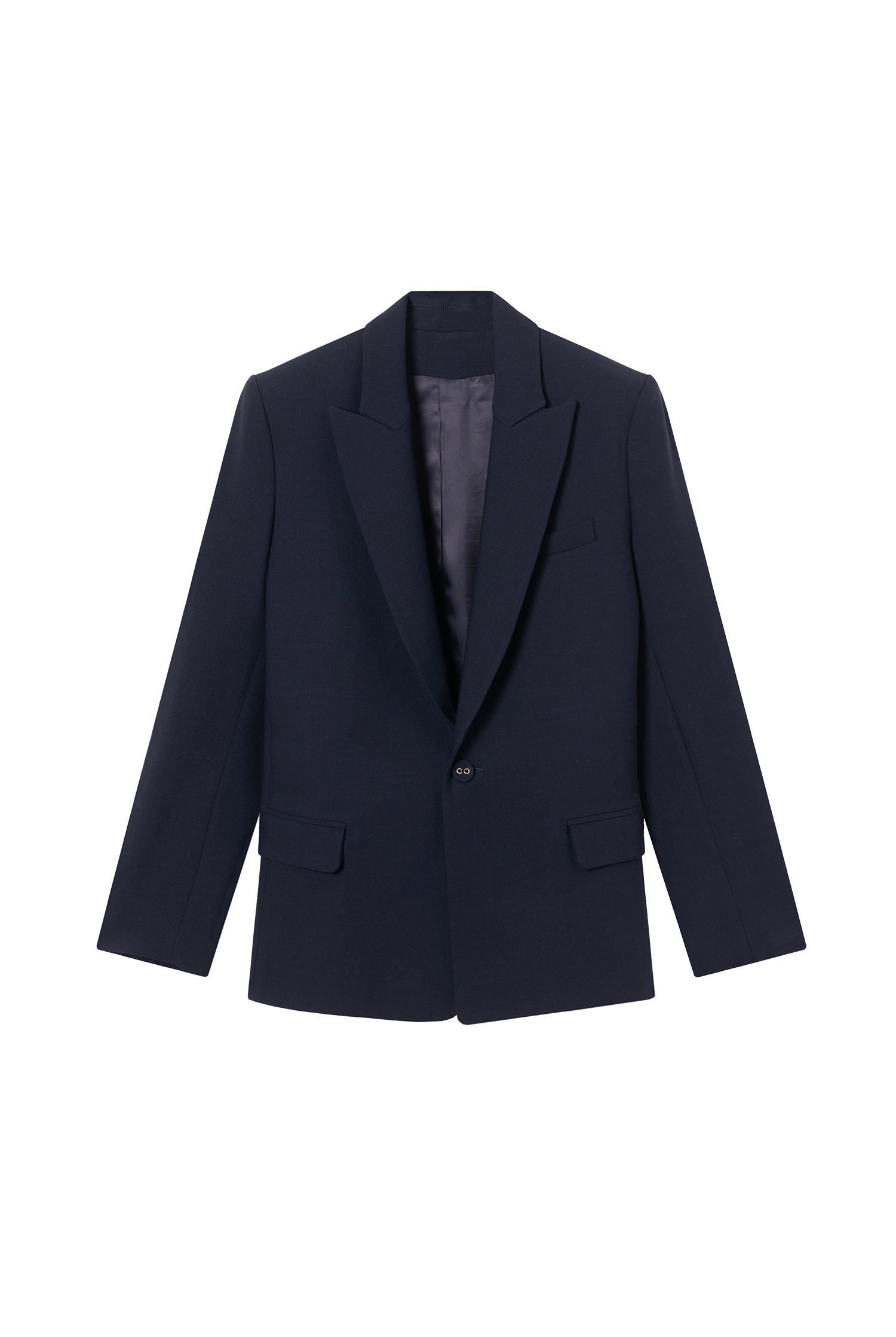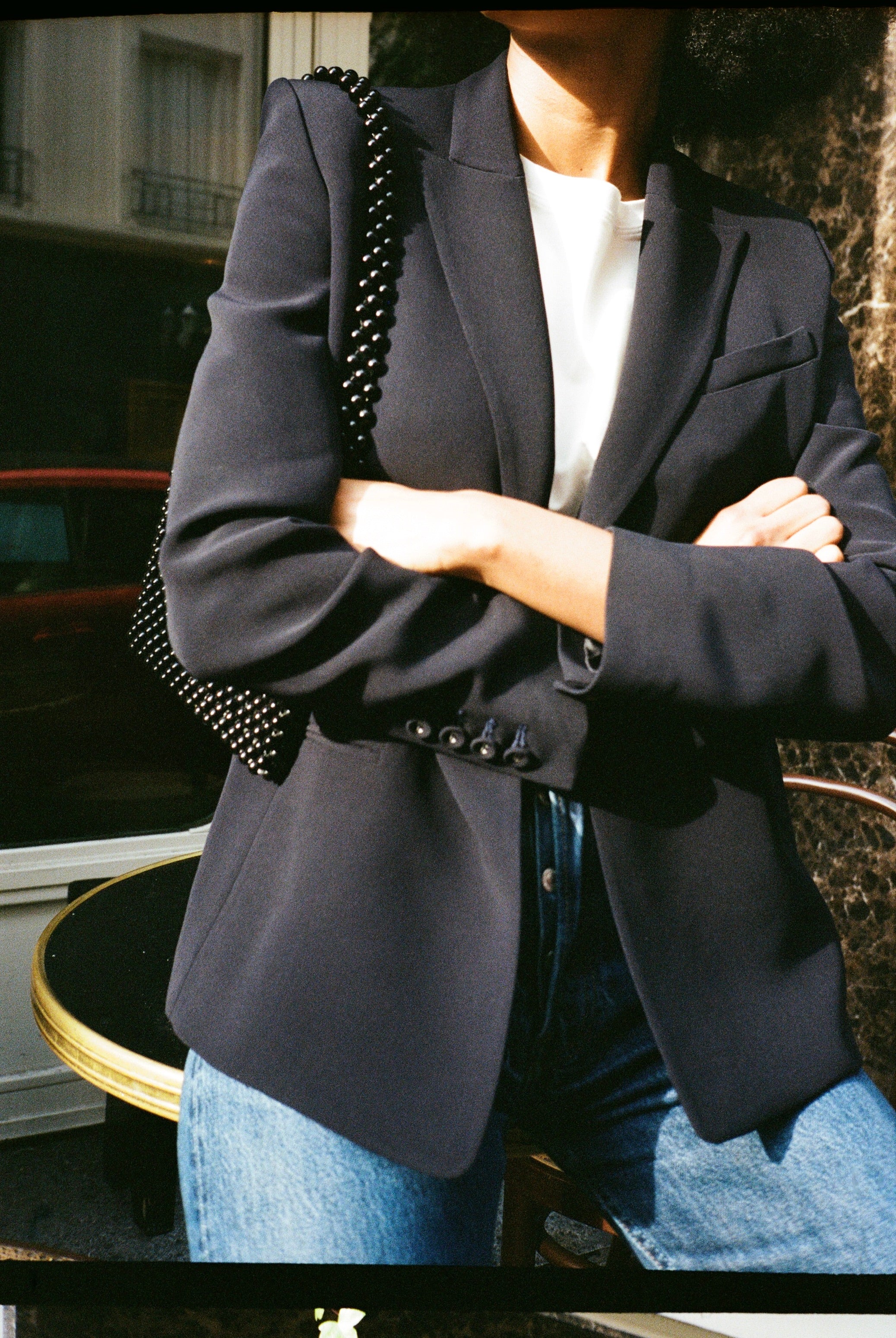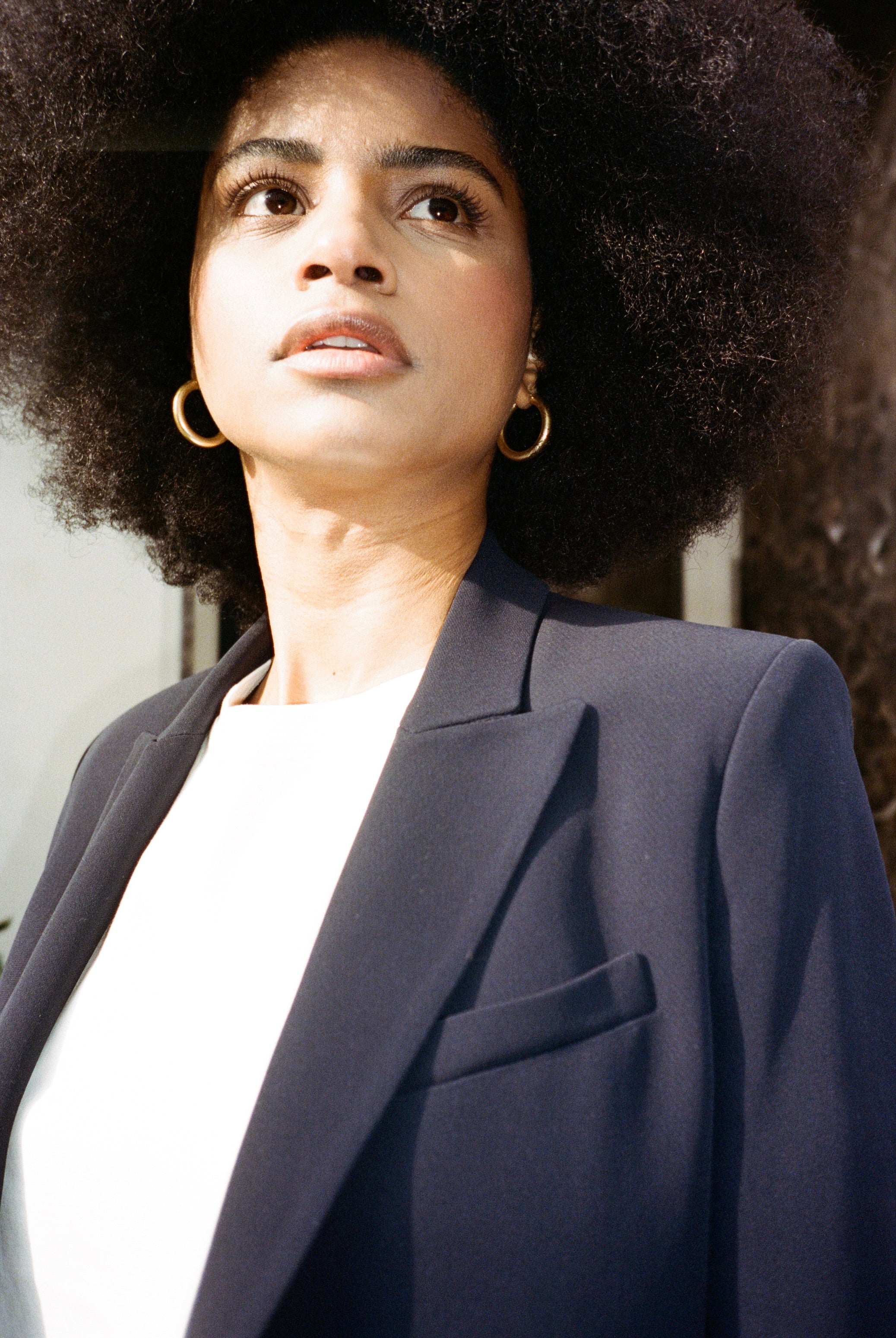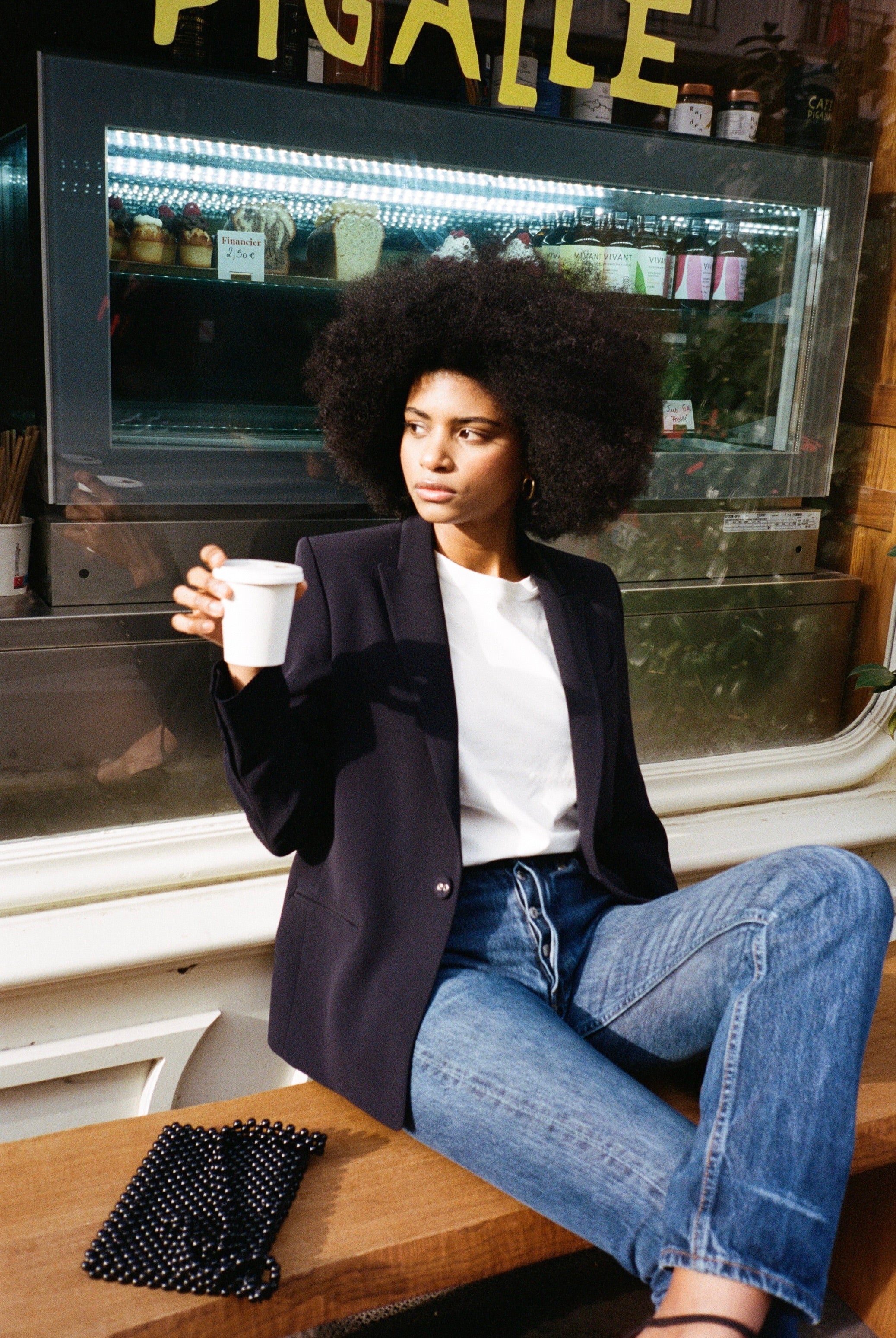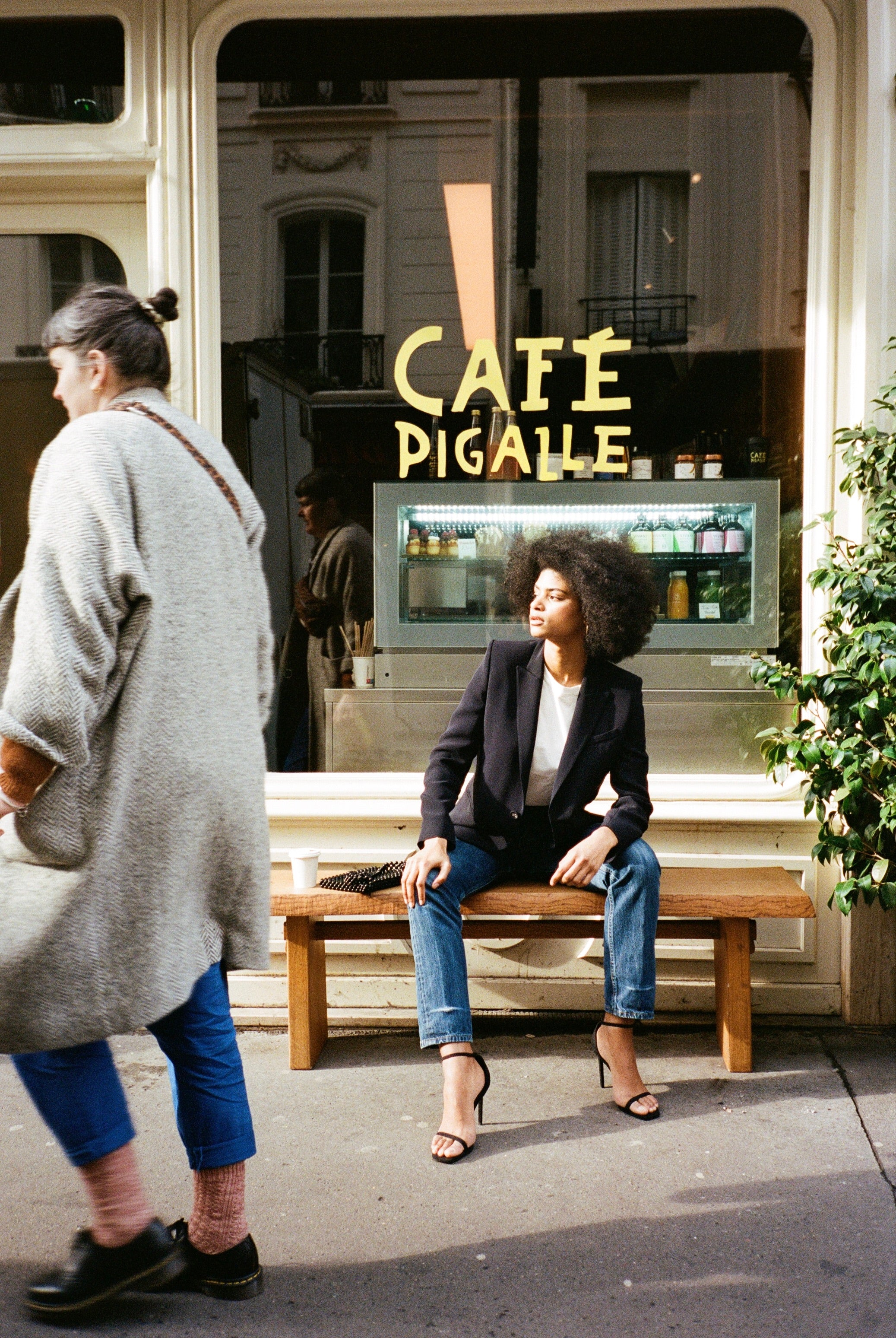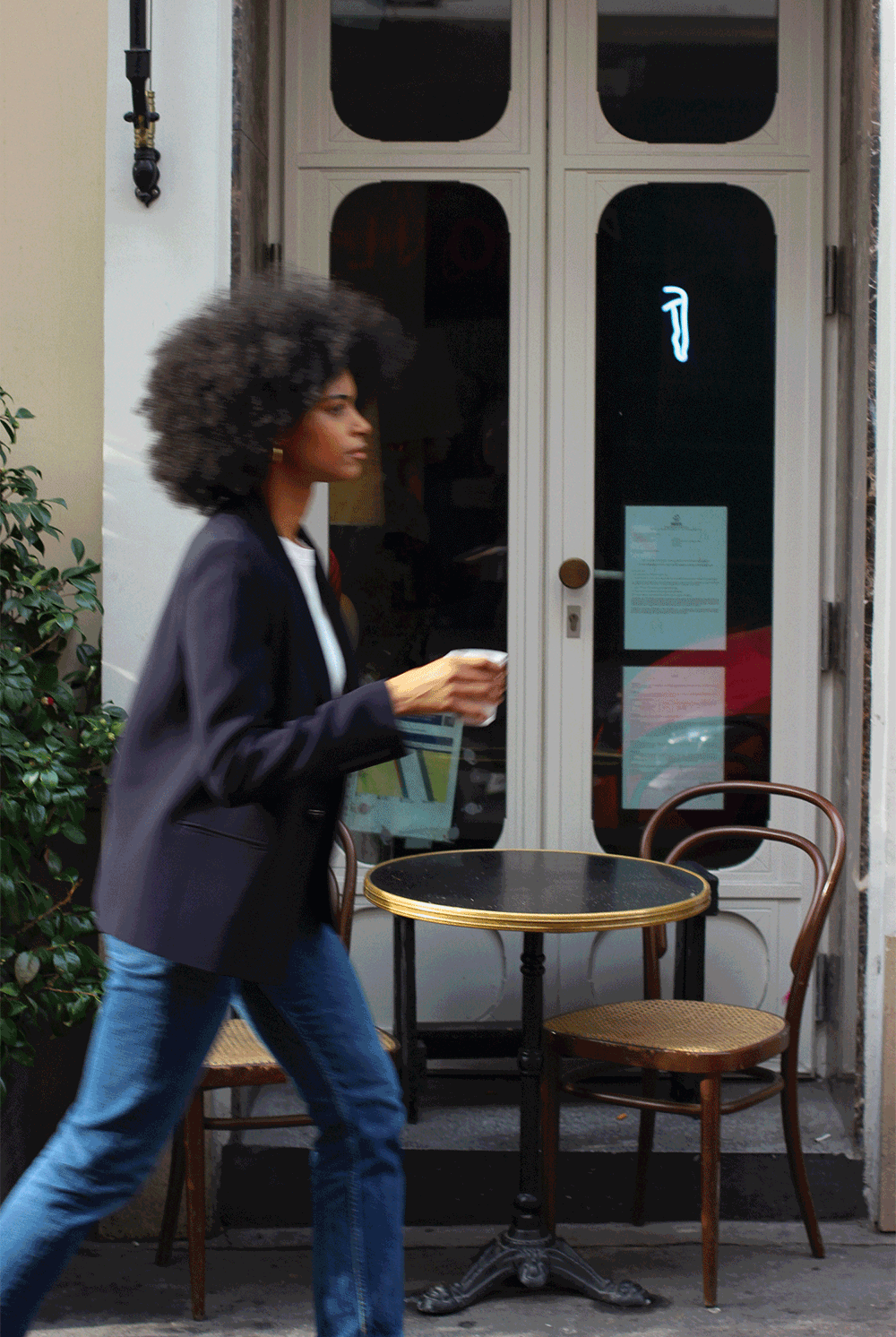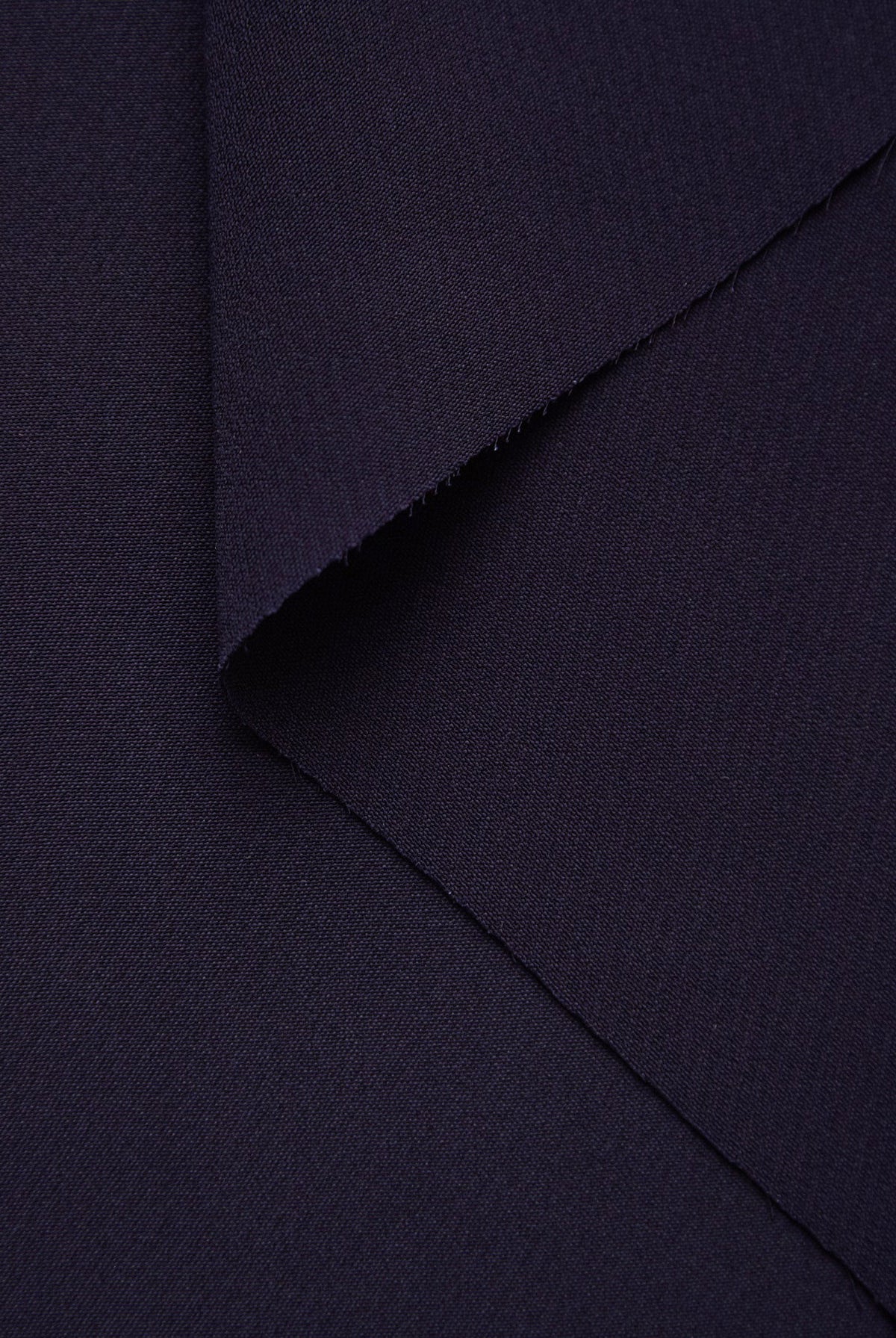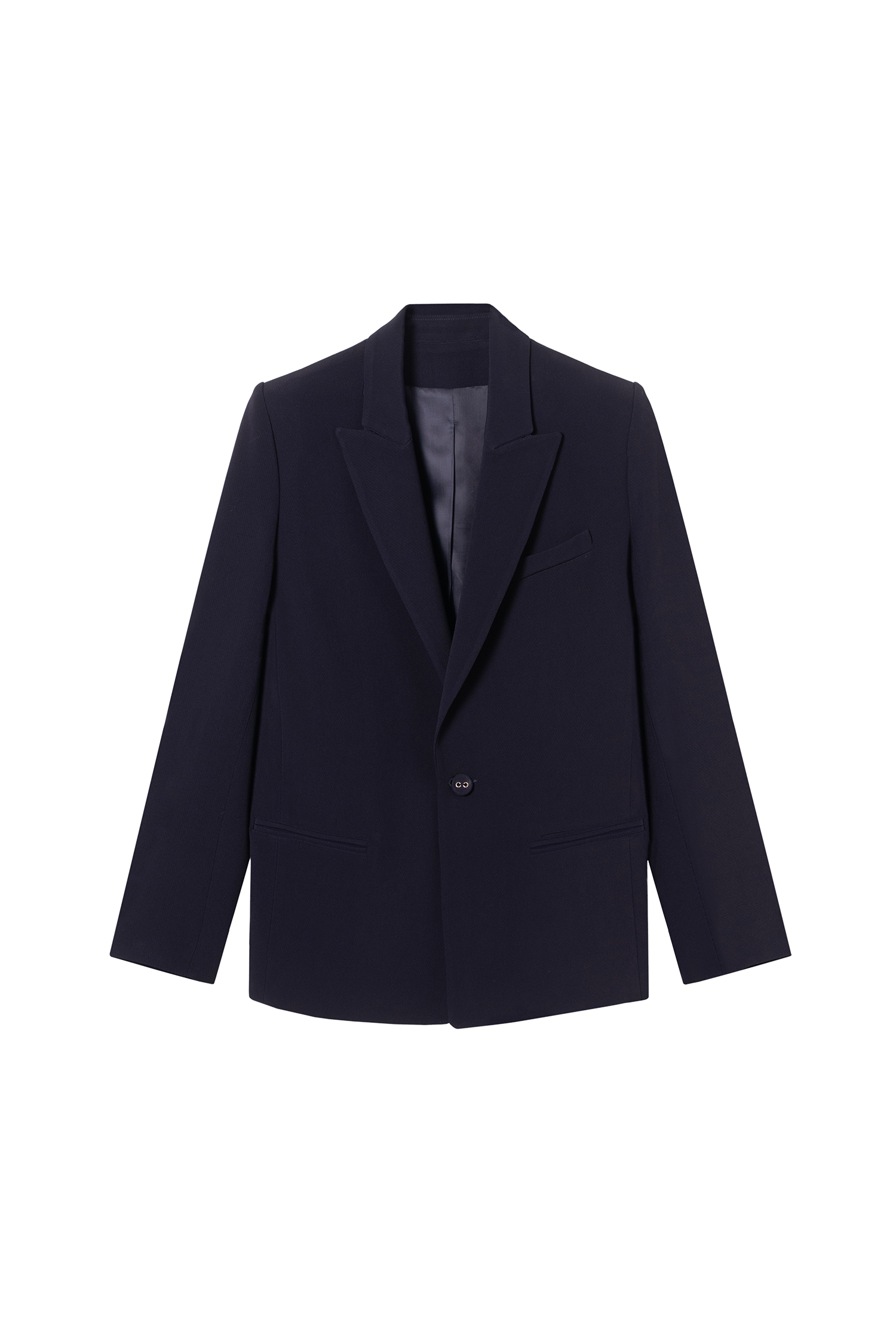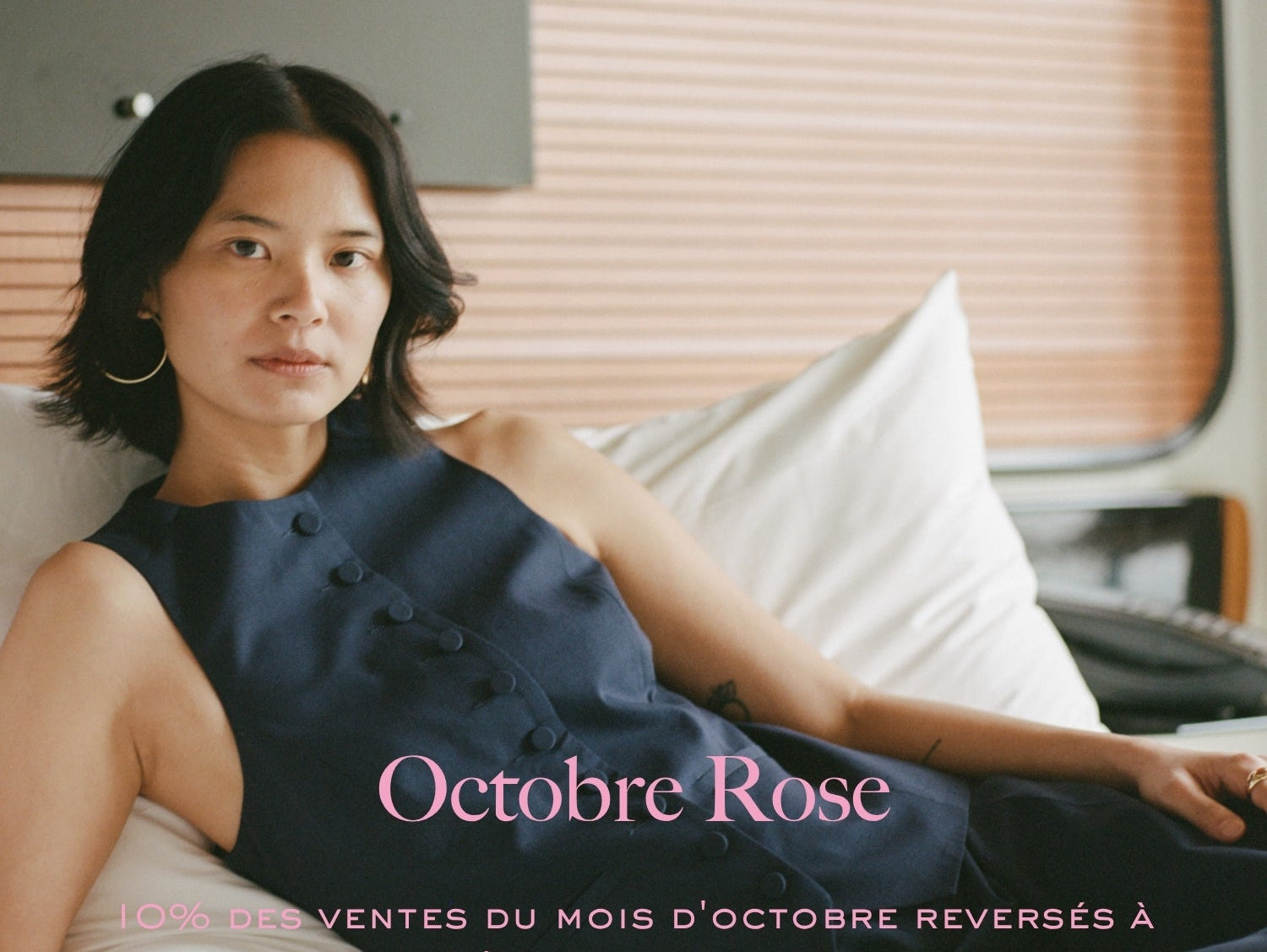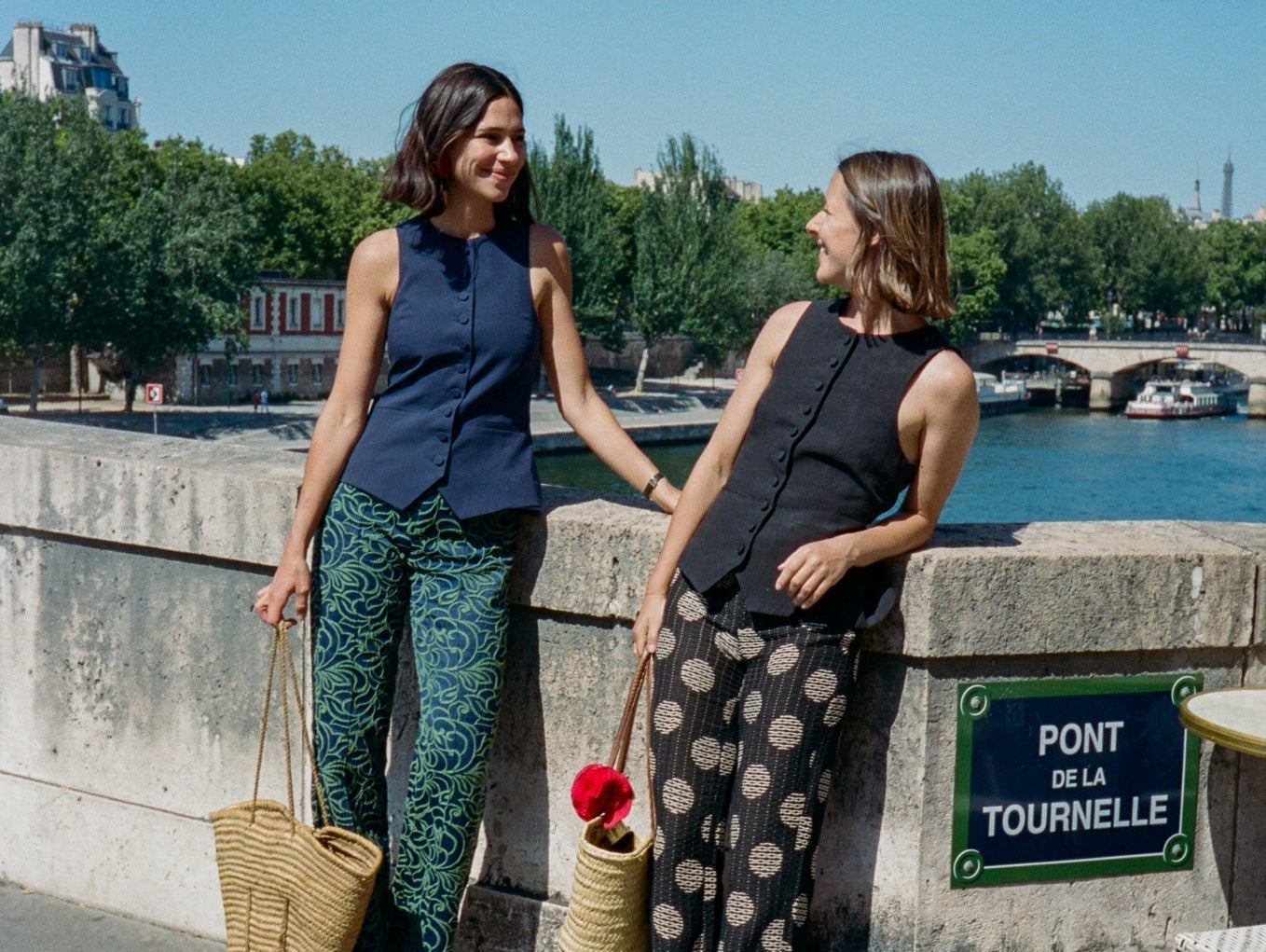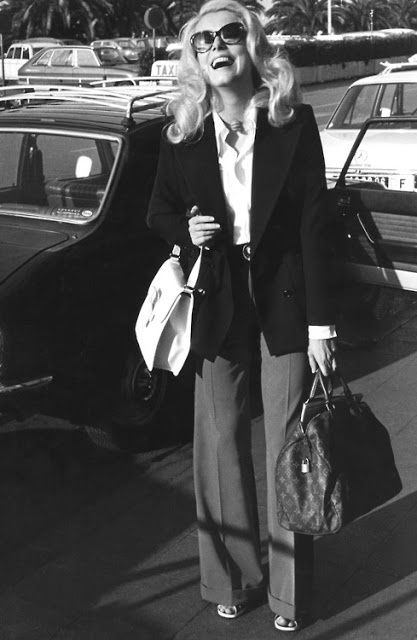
The History of the Blazer
Now a staple in both men’s and women’s wardrobes, the blazer has had a long journey before making its way into women's fashion. From its masculine and military roots, once reserved for the Anglo-Saxon upper classes, the blazer has evolved into a symbol of empowerment, first among British youth, and later for women around the world.
What is a blazer?
Unlike a suit jacket, a blazer is designed to be worn without matching trousers. Traditionally black or navy blue, the blazer has pushed boundaries across gendered wardrobes: asymmetrical, bi-colored, embellished, embroidered, cropped, long, fitted or oversized, the interpretations are endless and ever-evolving. Whether single- or double-breasted, worn with tailored pants, denim, a skirt or a dress, the blazer effortlessly elevates any look.
Where does the blazer come from?
Its origins are somewhat disputed.
One story links it to the Lady Margaret Boat Club at St John’s College, Cambridge, whose rowing team wore bright red jackets in the 1820s. The color, “blazer red”, comes from the word “blaze,” meaning fire, flare, brilliance.
Another version dates back to 1837, when the captain of the HMS Blazer outfitted his crew in double-breasted navy jackets with brass buttons for Queen Victoria’s visit aboard the ship.
From the elite to the underground
It wasn’t until the 1950s and 60s that the blazer broke free from elite circles and made its way to the streets. In the UK, the "mods", a youth subculture born in the late 50s, reclaimed school blazers as symbols of rebellion and identity. These teens, with a passion for modern jazz, would tailor and personalize uniform jackets as a statement of independence.
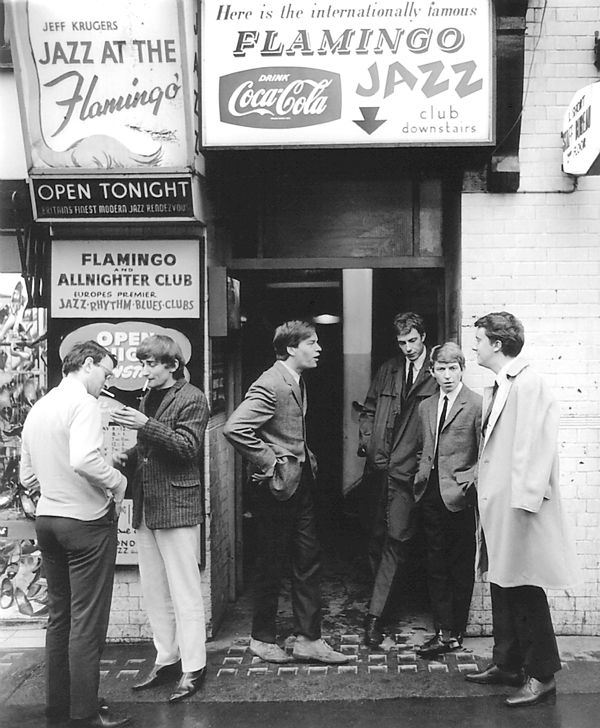
Flamingo Club, London, circa 1965
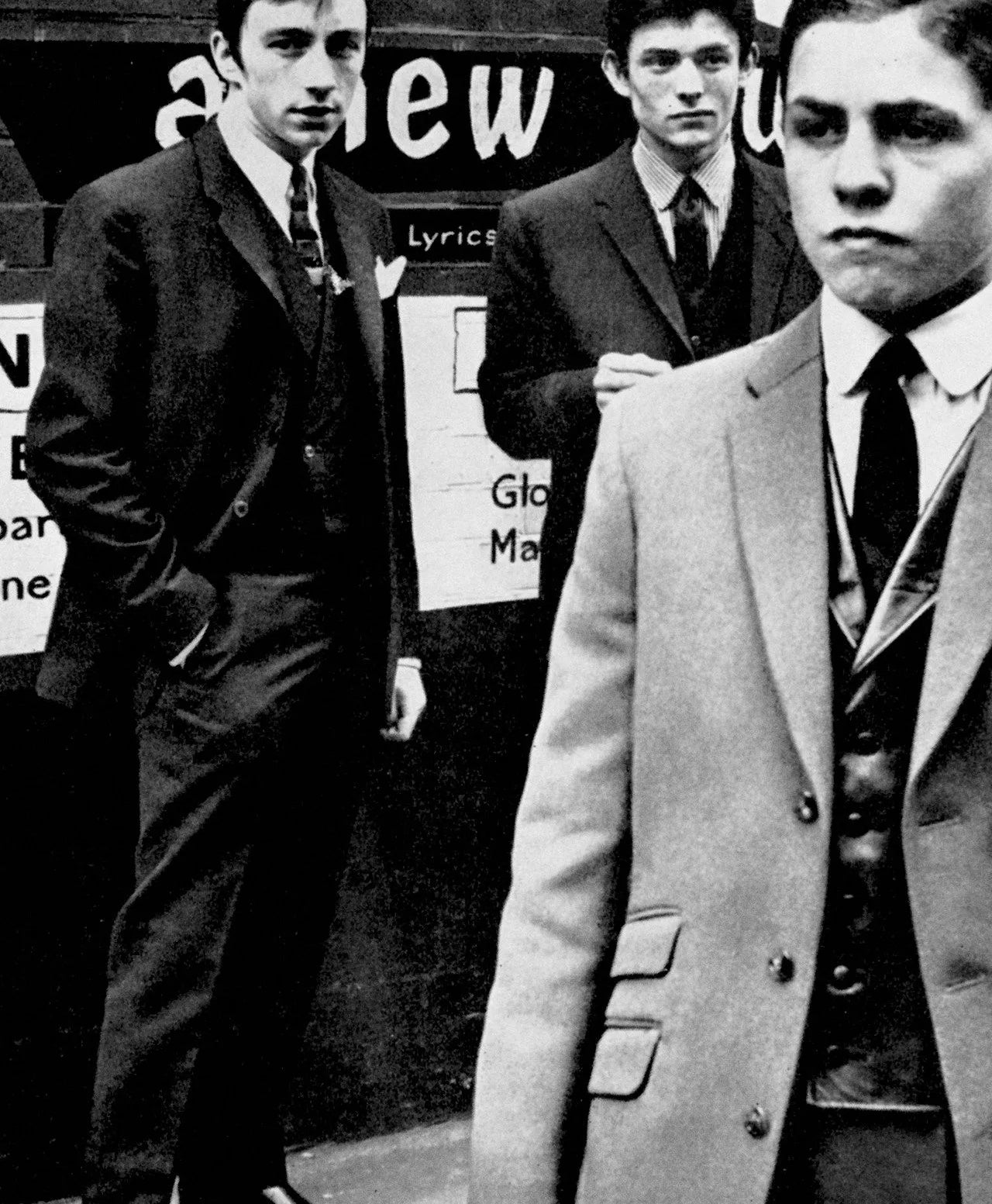
Marc Bolan and the Stamford Hill Mods, 1962
From men’s wardrobes to women’s empowerment
Though originally from the male-dominated world of work, women began wearing suits as early as the late 19th century. By the 1910s, suffragettes embraced tailored menswear for practical reasons, easier movement during protests and public events, and as a feminist statement. As women led more active lives, corsets gave way to suits that offered comfort without sacrificing elegance.
During WWII, women wore their husbands’ clothes while they were away, leading to practical yet elegant silhouettes: knee-length skirts, no-frills jackets.
In 1947, Dior’s “New Look” reacted to wartime utility with structured shoulders, cinched waists, and hyper-feminine lines, a vision of the post-war woman as homemaker.
Gabrielle Chanel challenged this, proposing elegant tailoring that remained comfortable, using soft fabrics like jersey and tweed. In the 60s, tailoring evolved again: Courrèges introduced futuristic silhouettes, while Yves Saint Laurent created the iconic women's tuxedo, the smoking, directly inspired by men’s eveningwear.
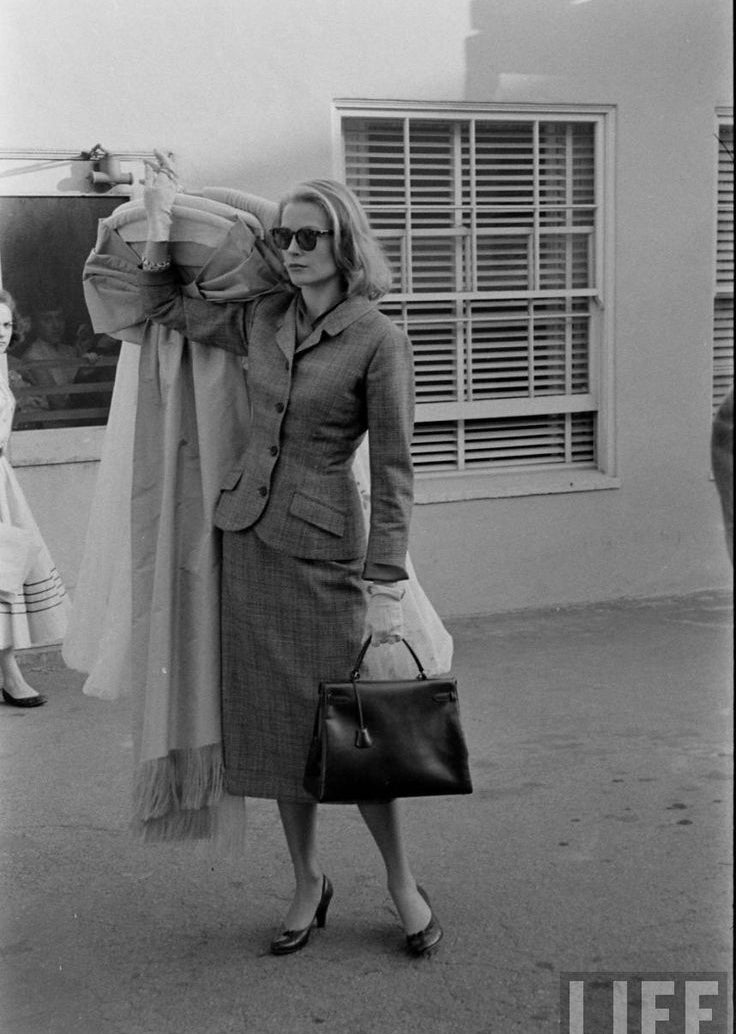
Grace Kelly by Allan Grant, 1956
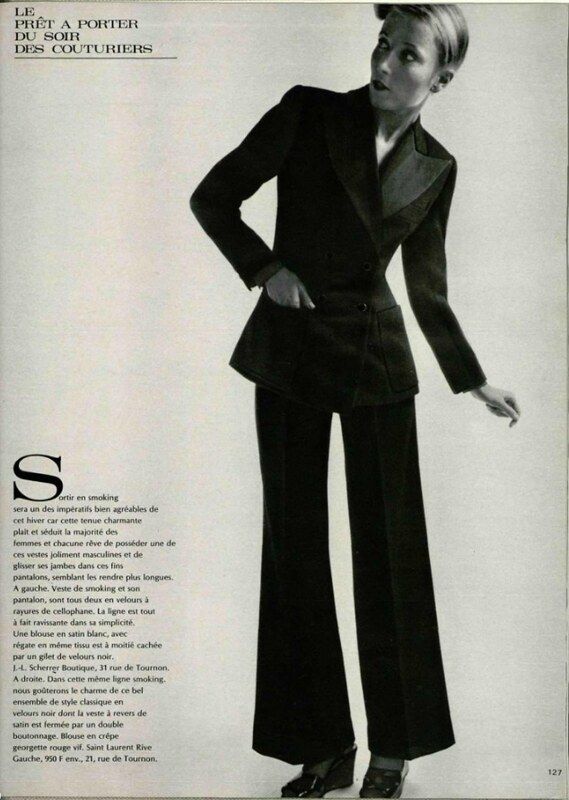
Saint Laurent, 1971
The blazer and the rise of the working woman
By the 1980s, more than 50% of women had entered the workforce. This era became synonymous with the “power suit,” a term still used to describe a woman’s suit that commands attention and confidence.
Soon, suits broke out of the office, worn not just for work, but for everyday life. The blazer and suit jacket became interchangeable: with or without matching pieces, tailored to the woman’s mood.
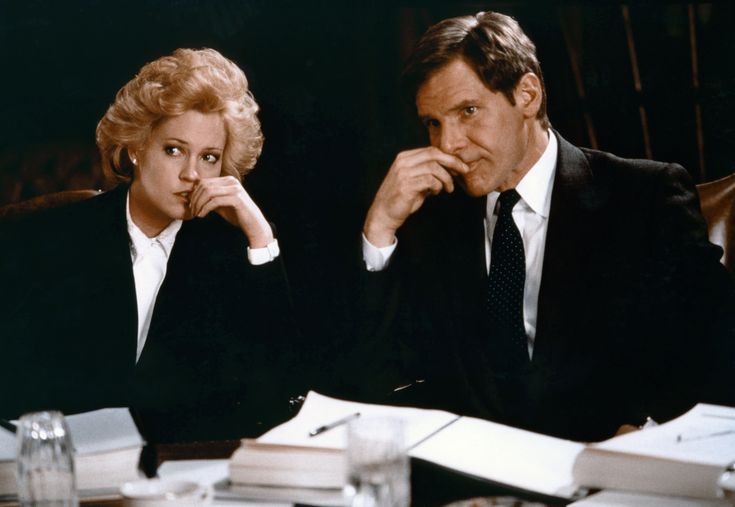
Melanie Griffith and Harrison Ford in "Work Girl", 1988
A timeless piece through the decades
The blazer has cemented its place in the modern wardrobe. Season after season, regardless of trend or fashion wave, it remains a go-to staple.
At Facettes Studio, our philosophy is to design timeless pieces that transcend fleeting trends. That’s why our blazers and tuxedo jackets are cut to be neither too fitted nor too oversized. The length hits at the mid-hip, not cropped, not coat-like, for a perfectly balanced silhouette. These are pieces designed to last, both in style and spirit.

